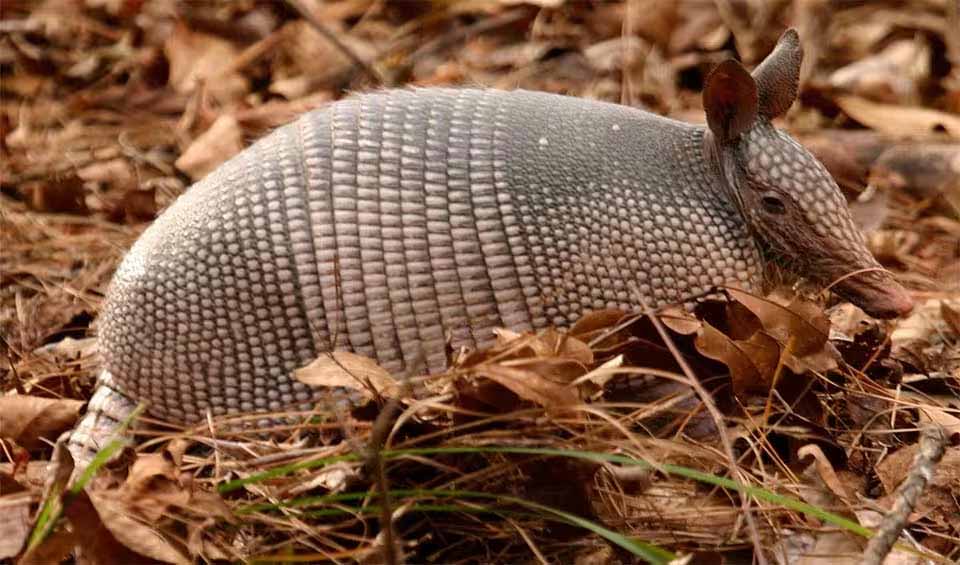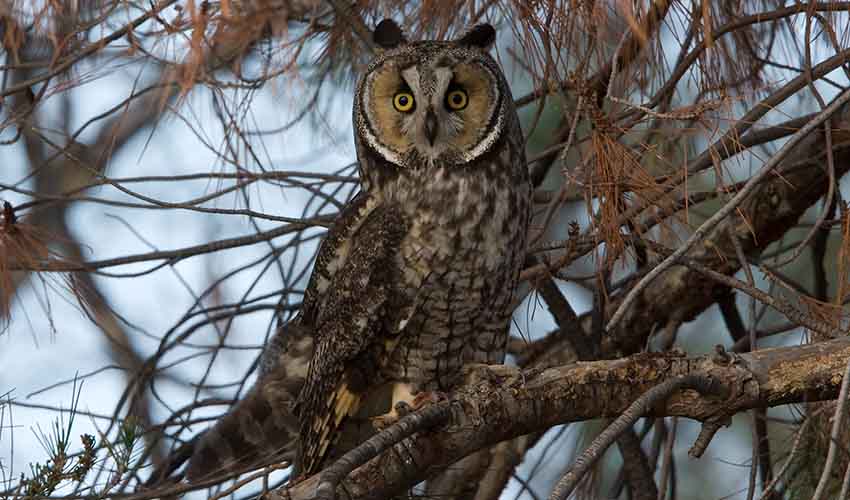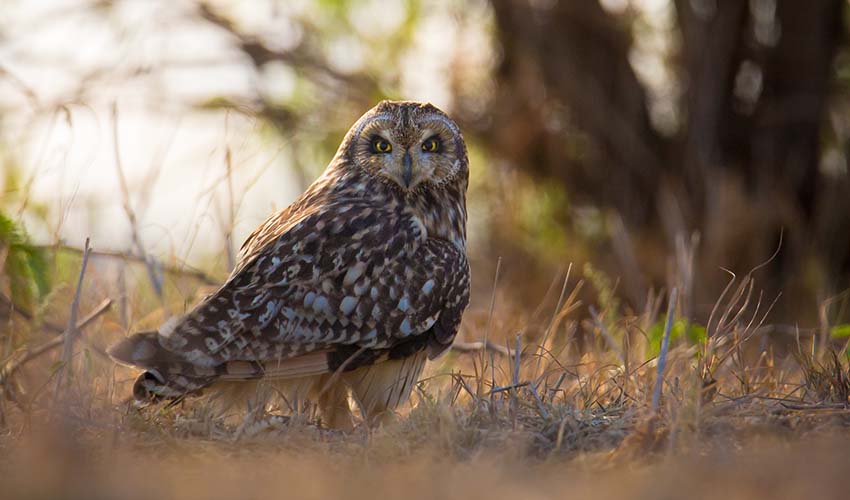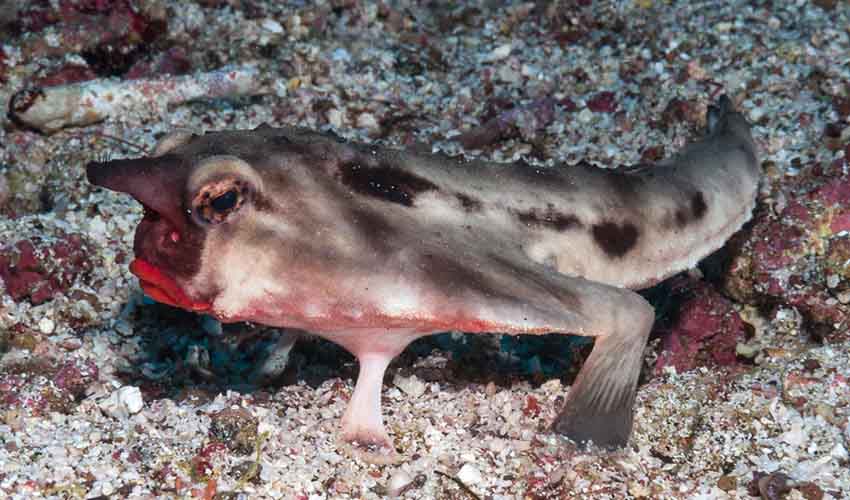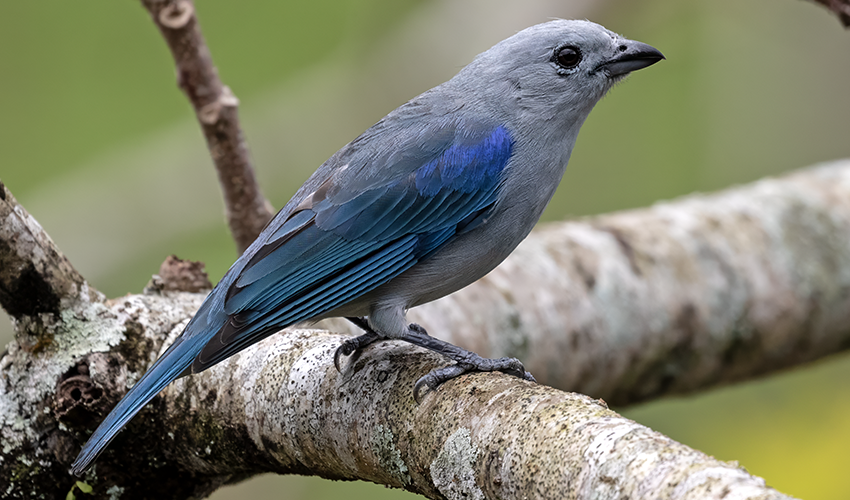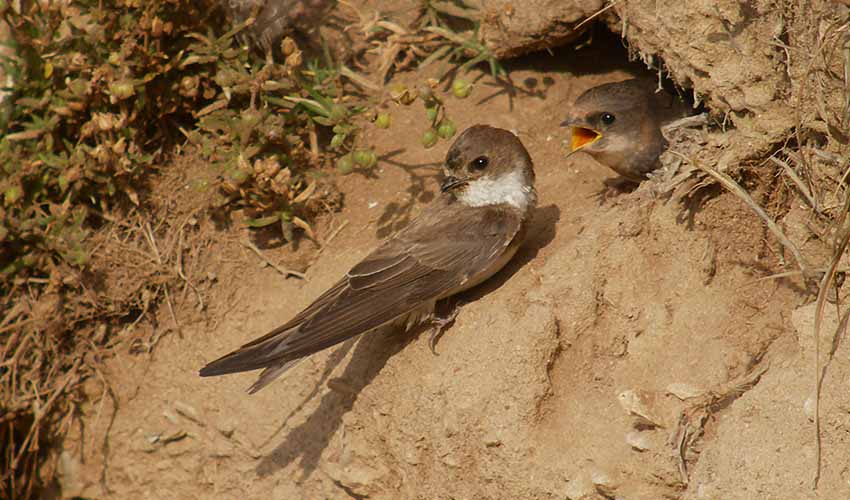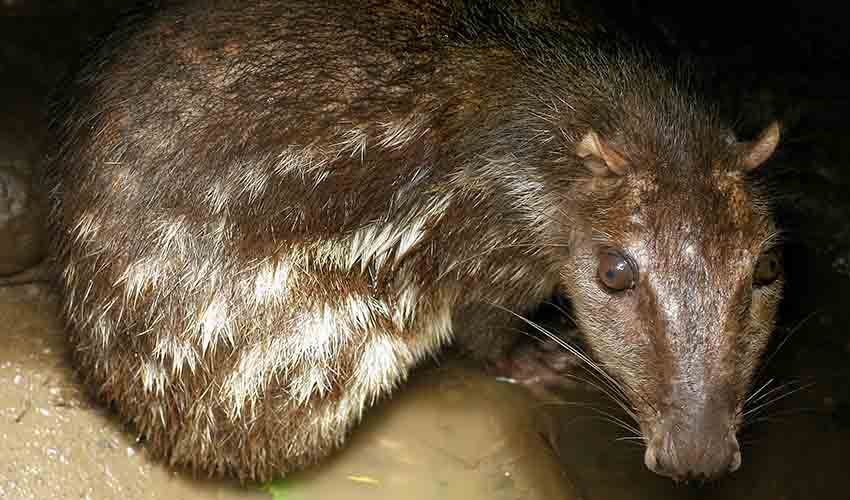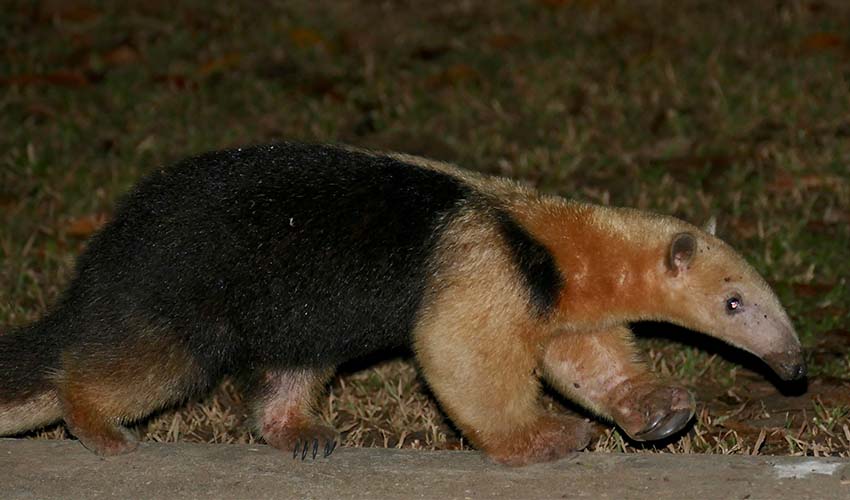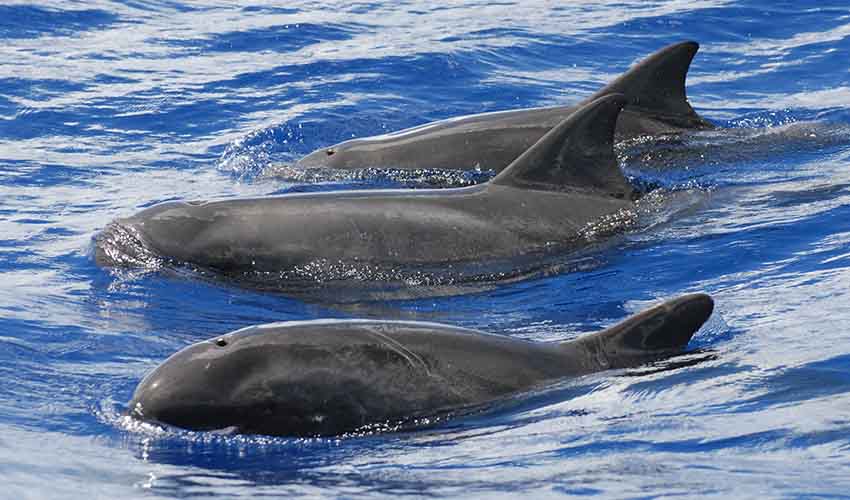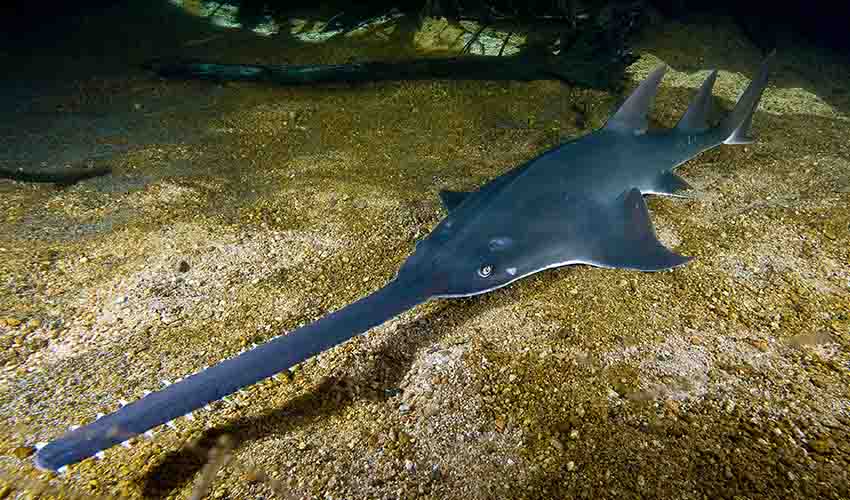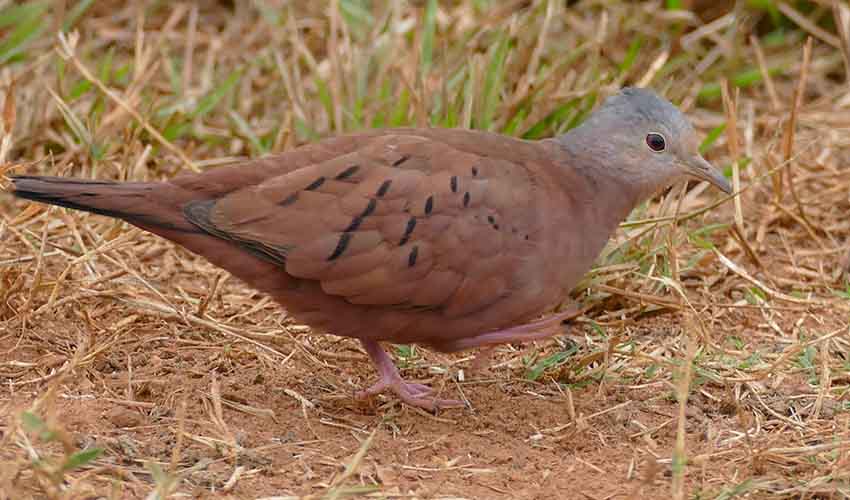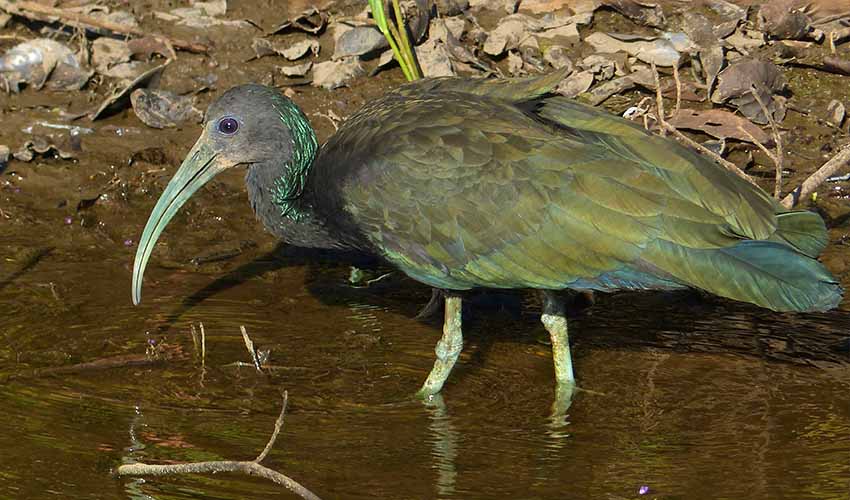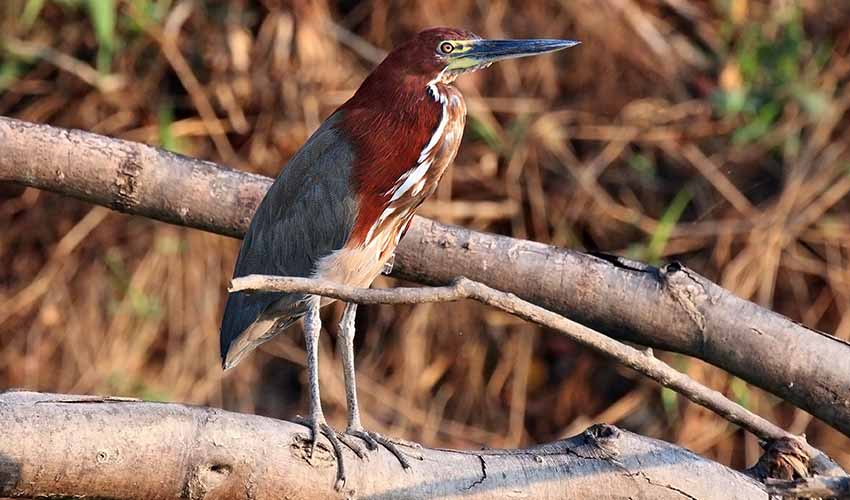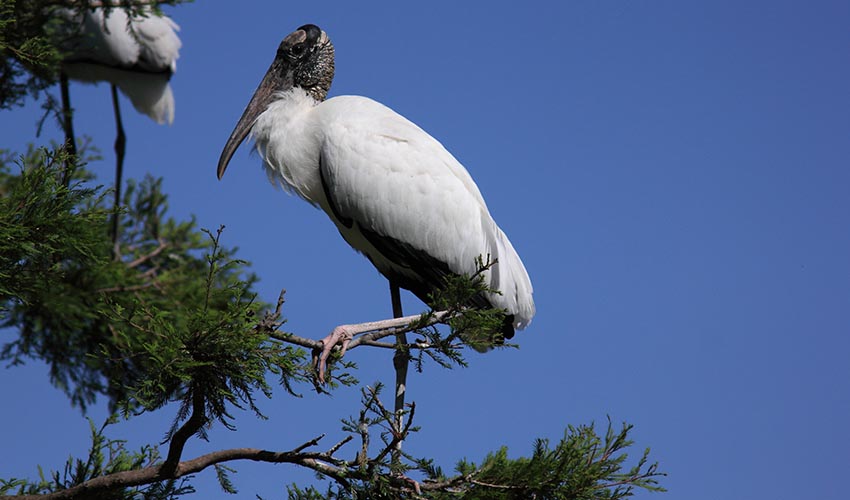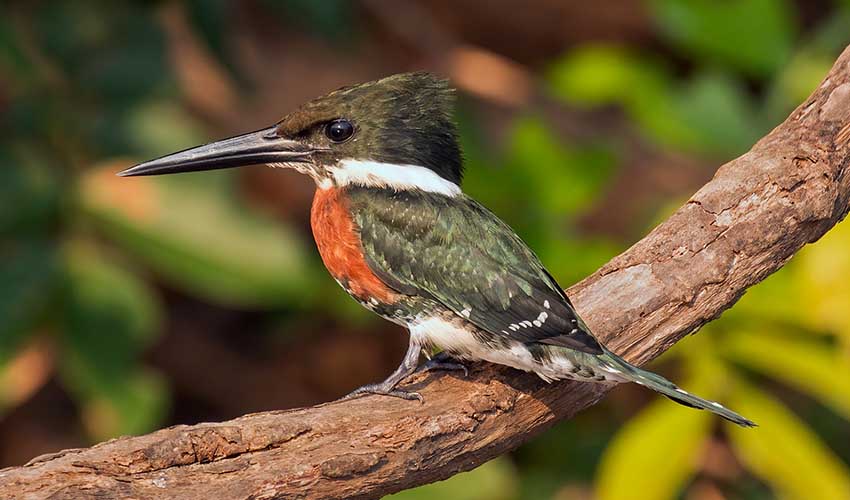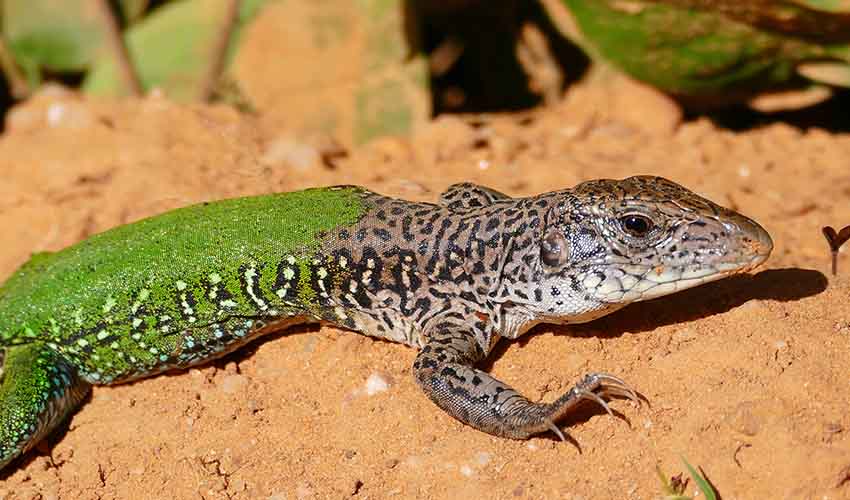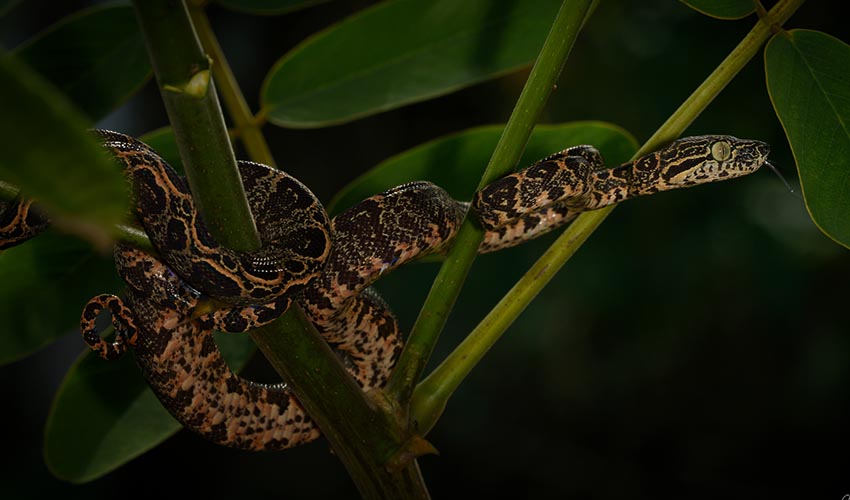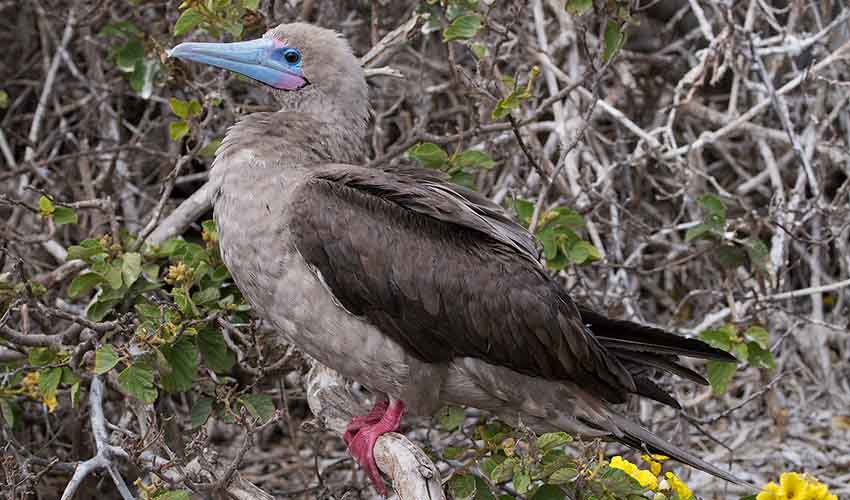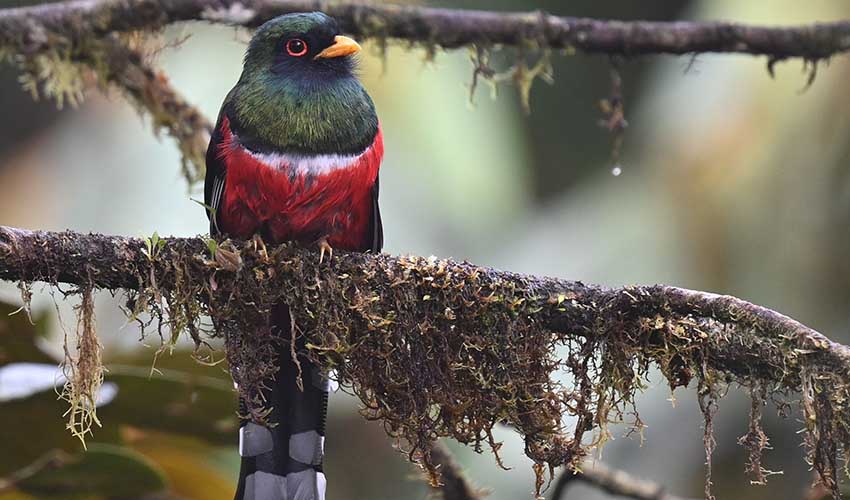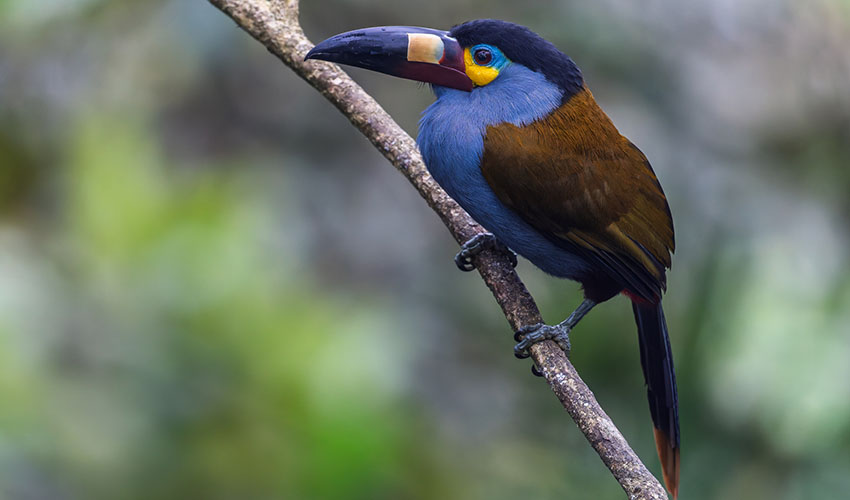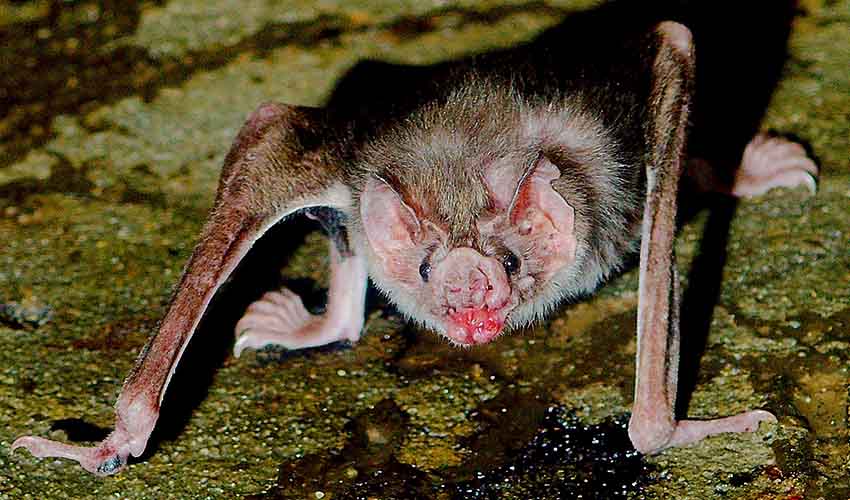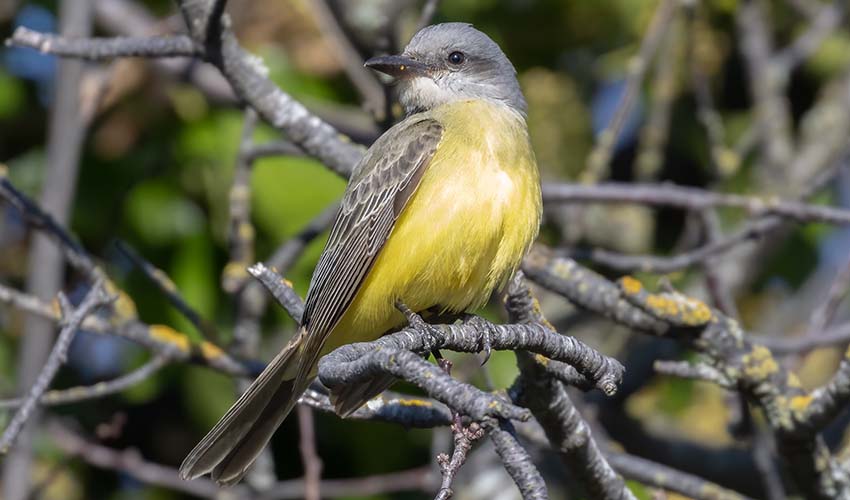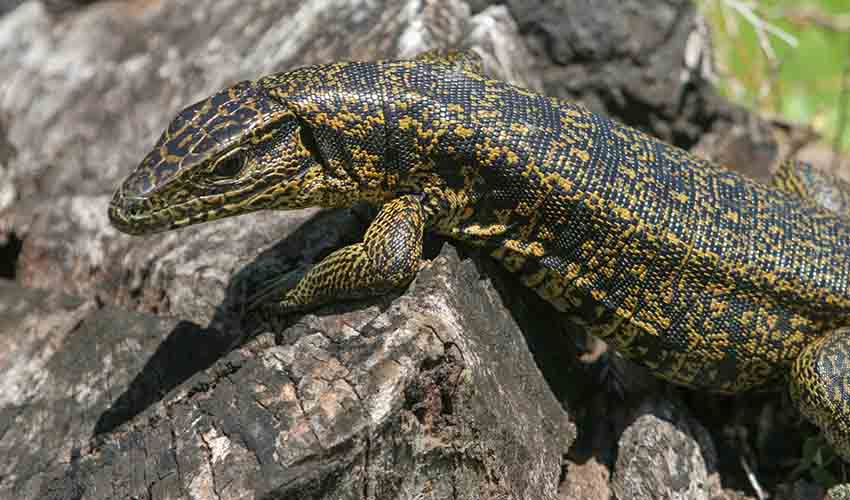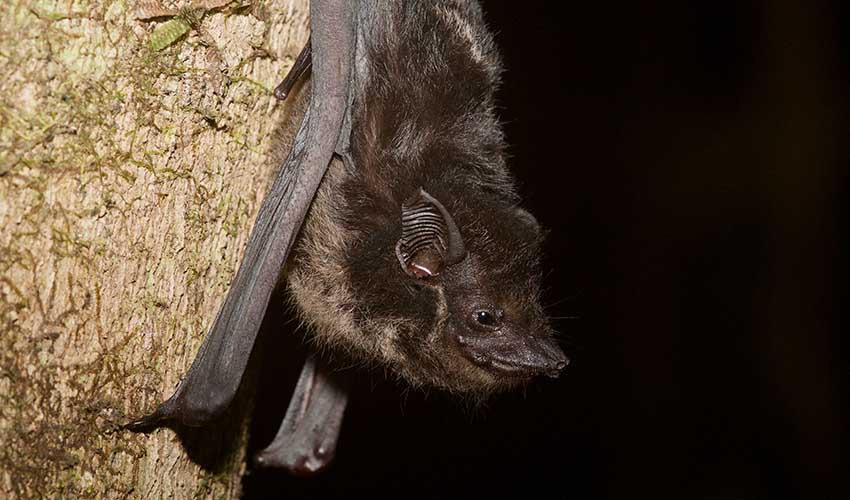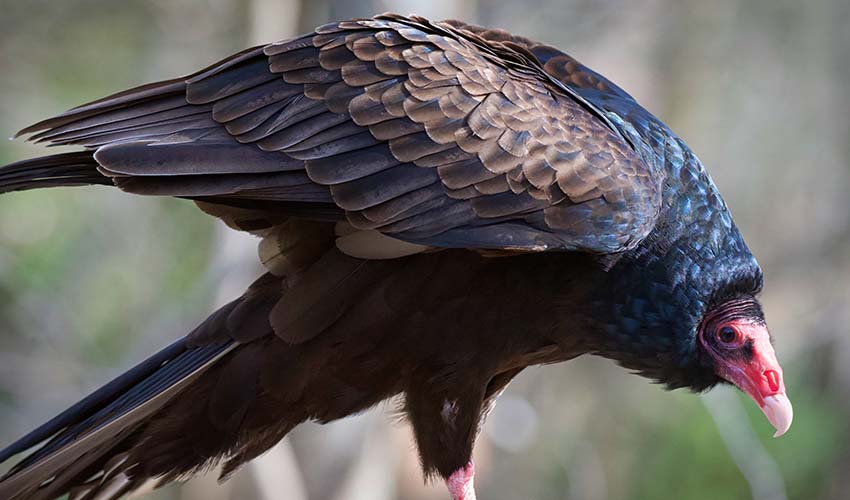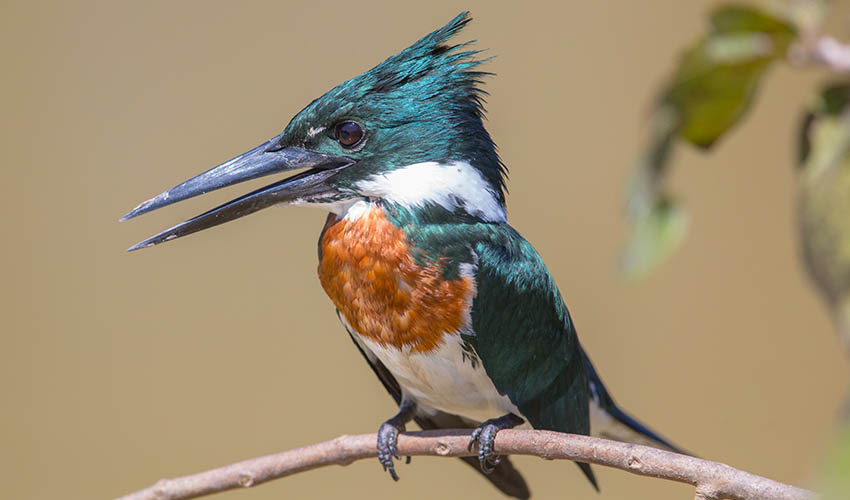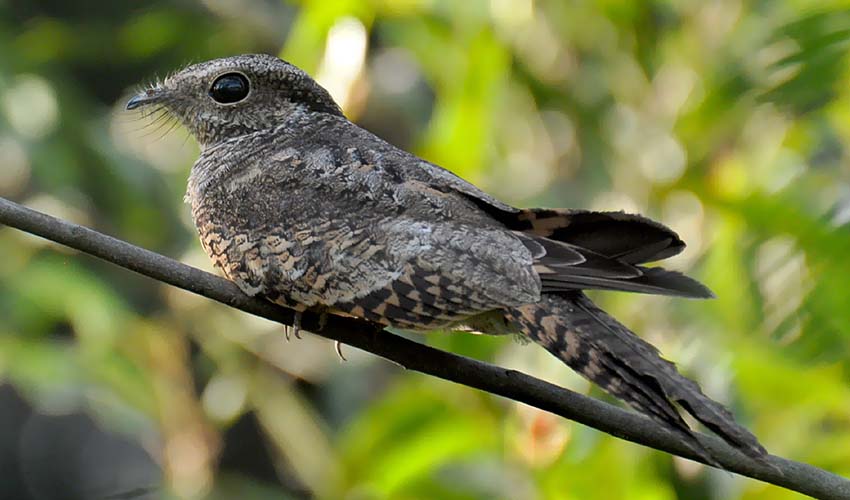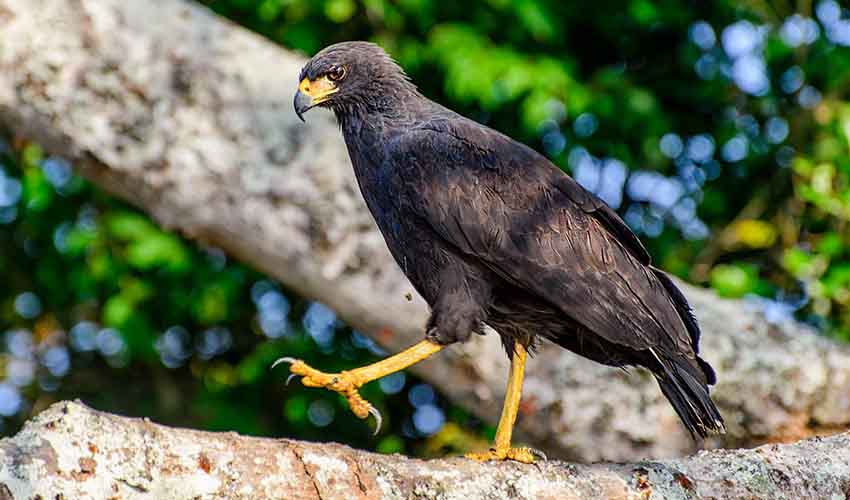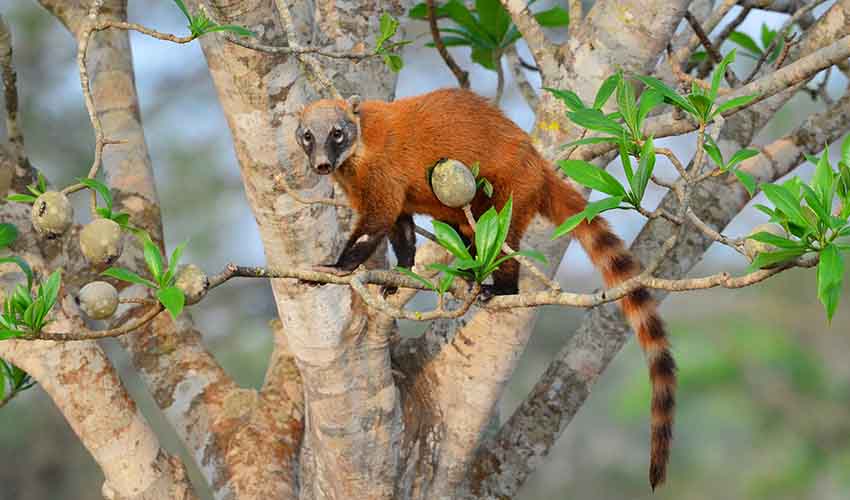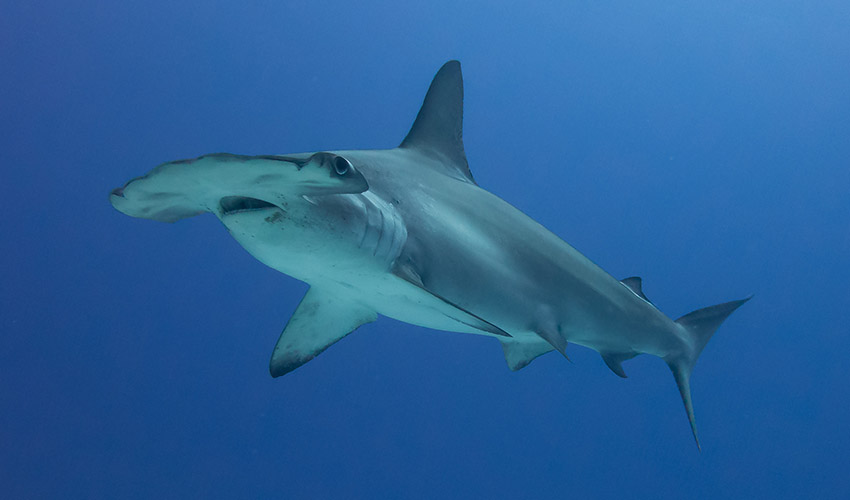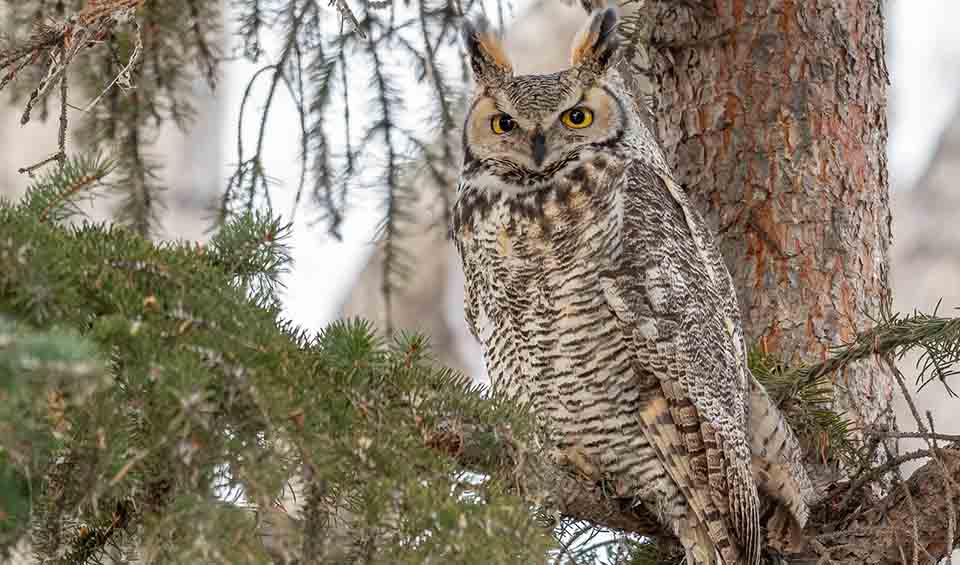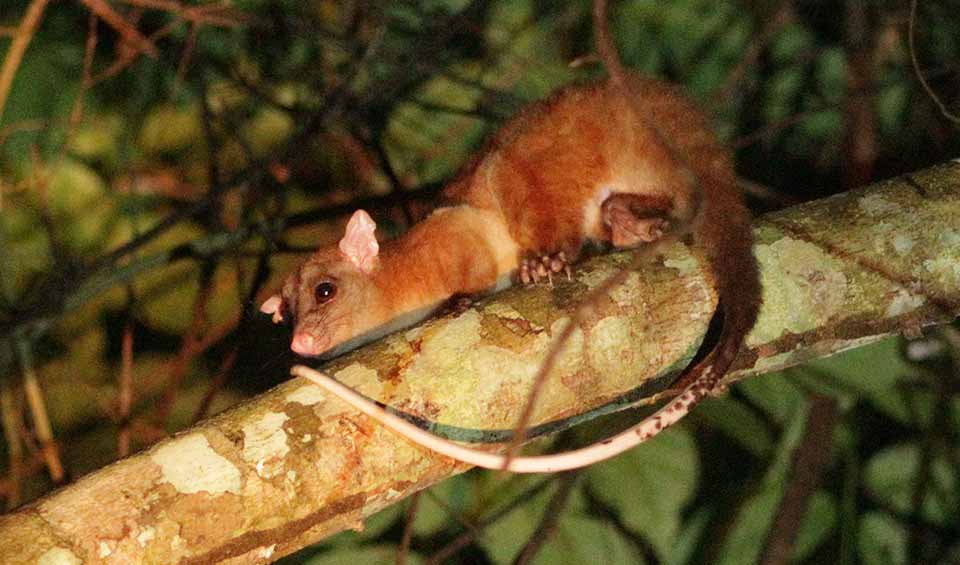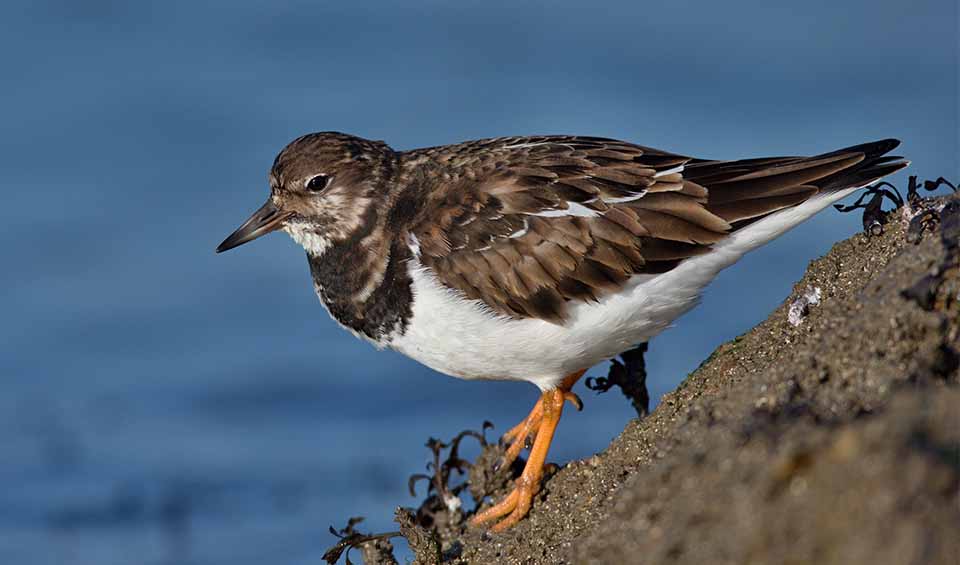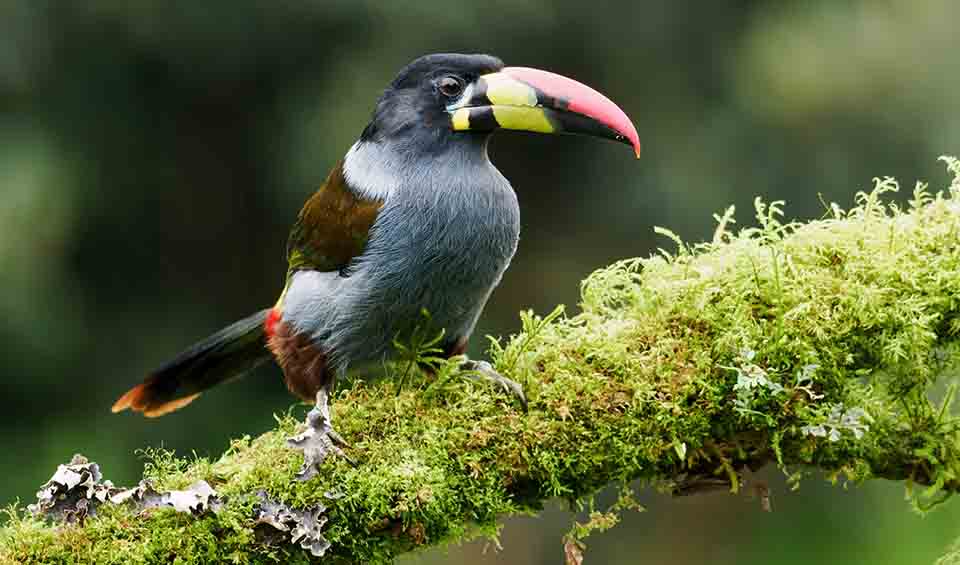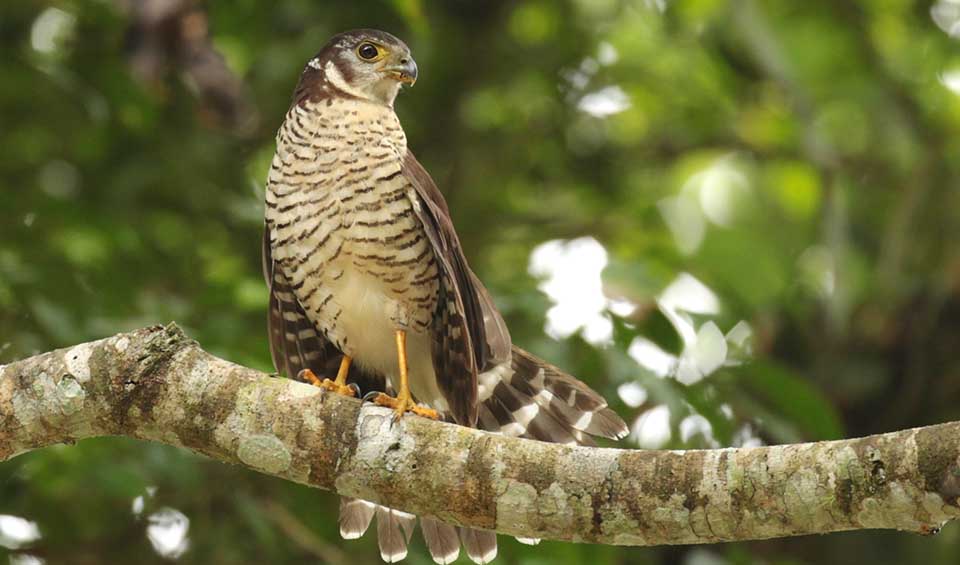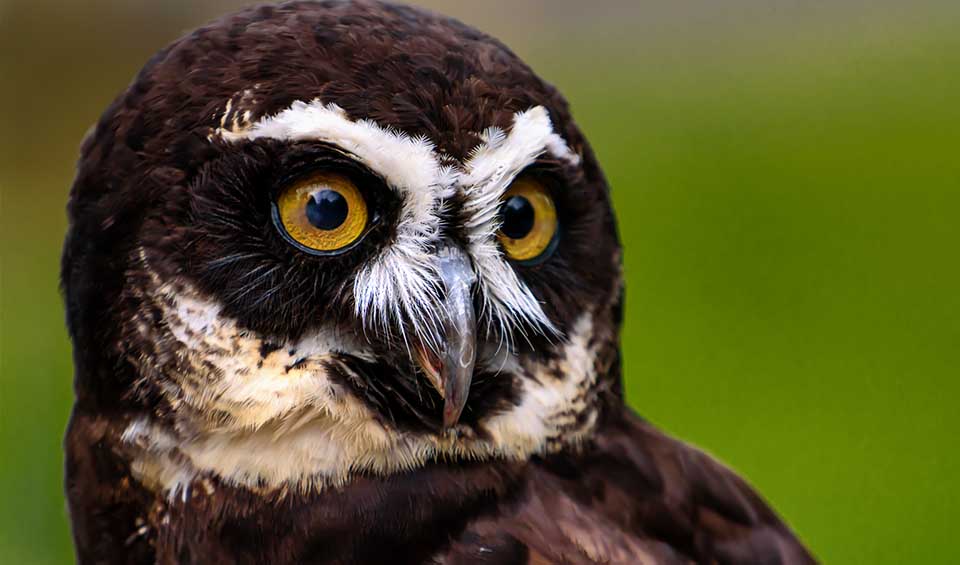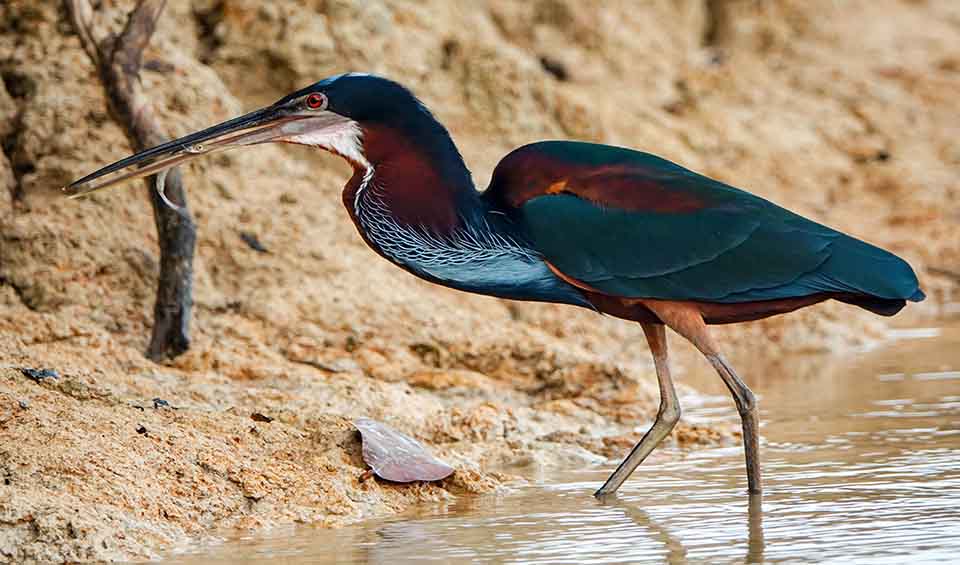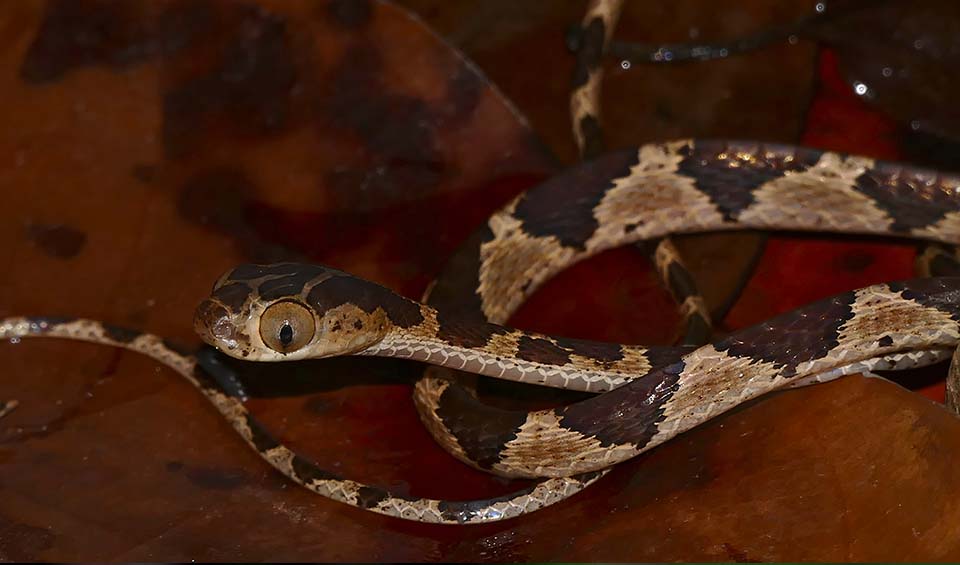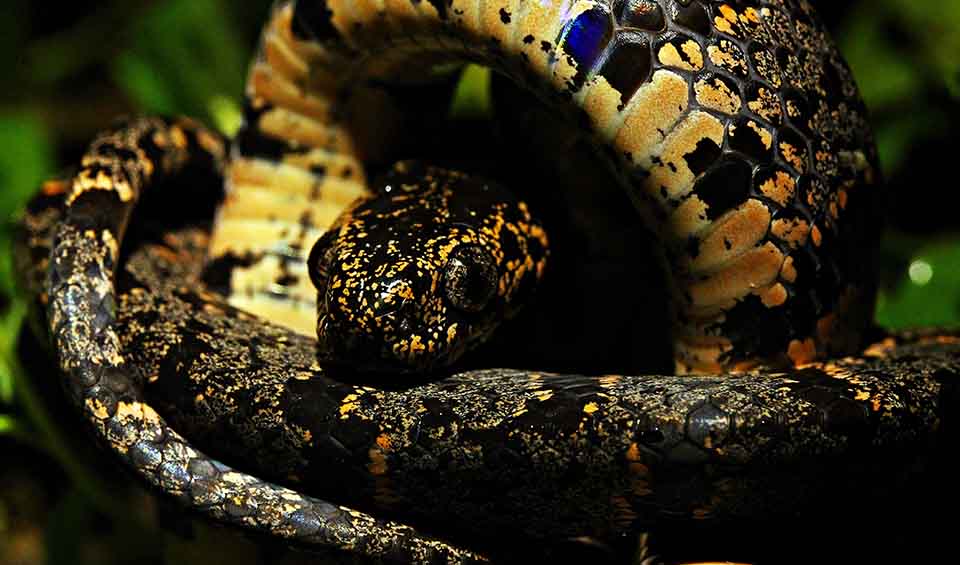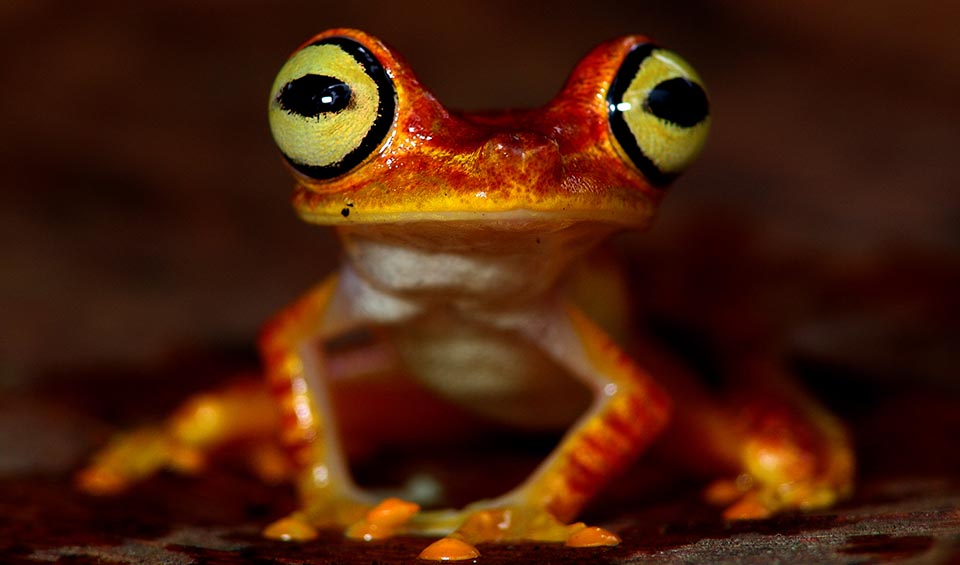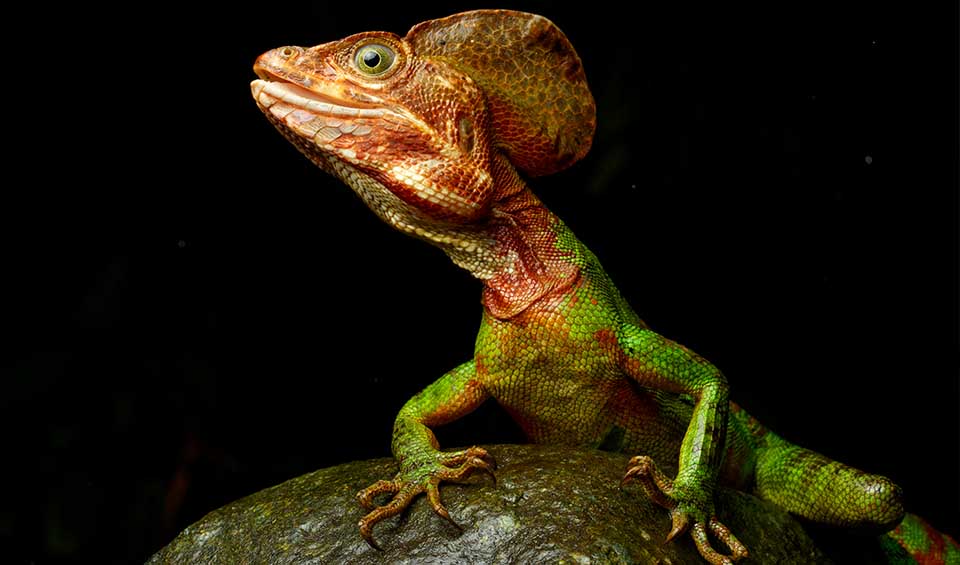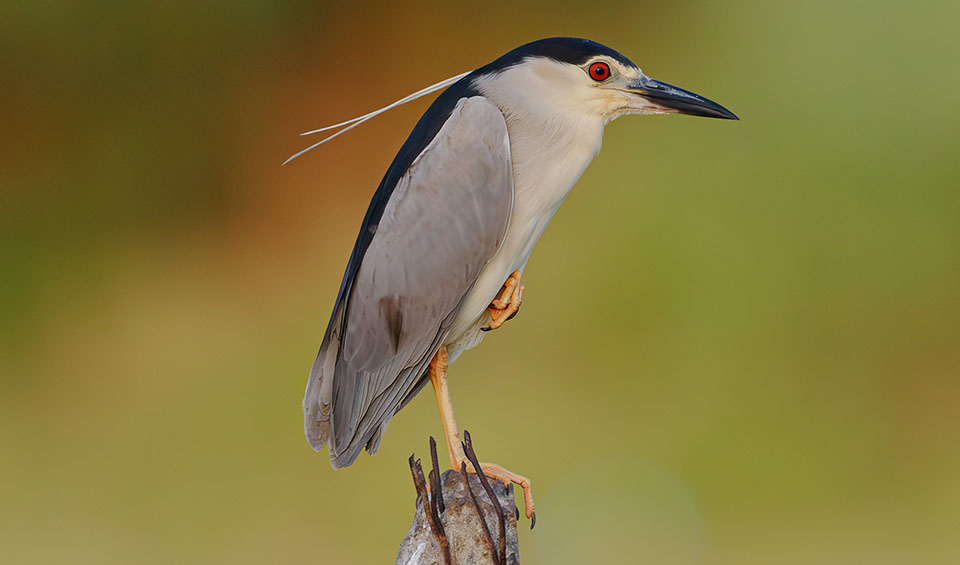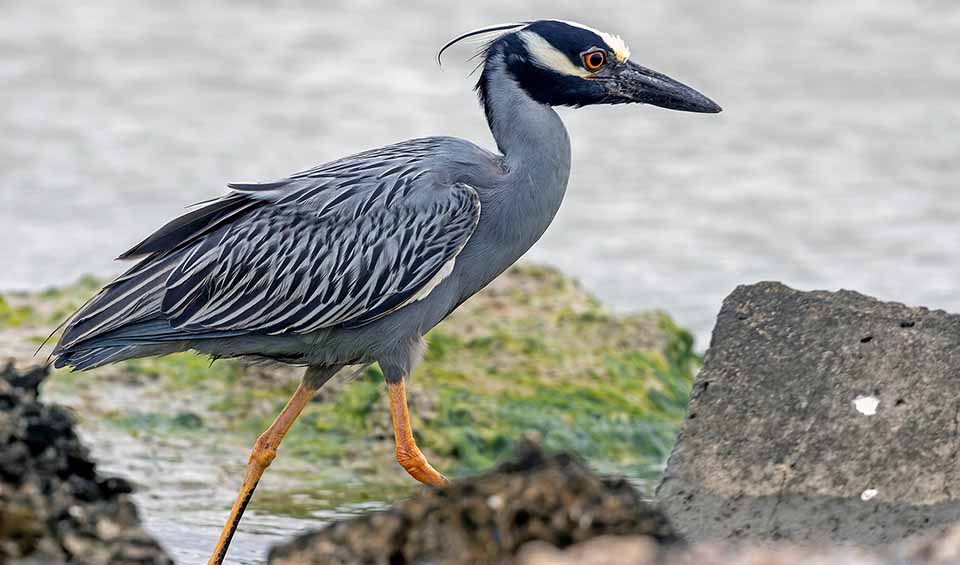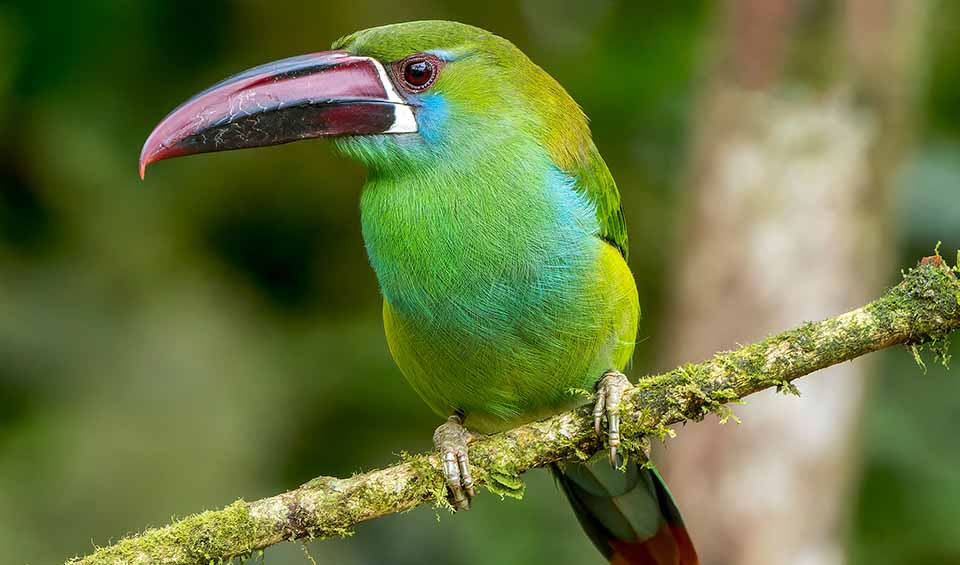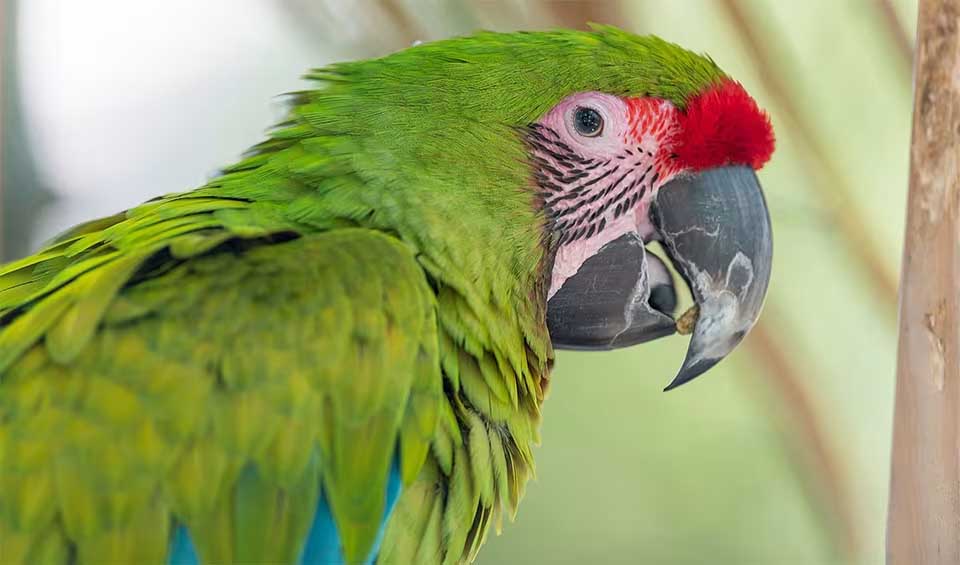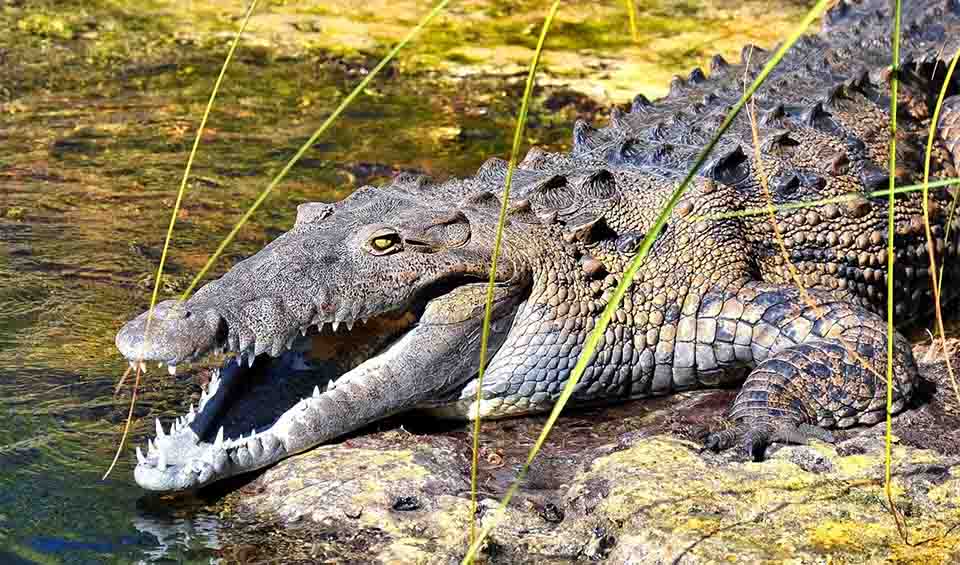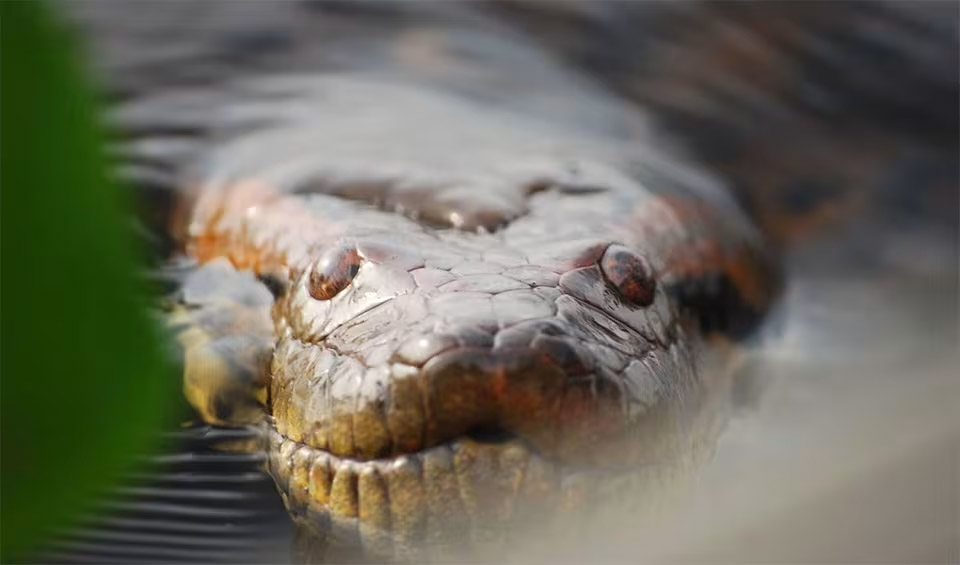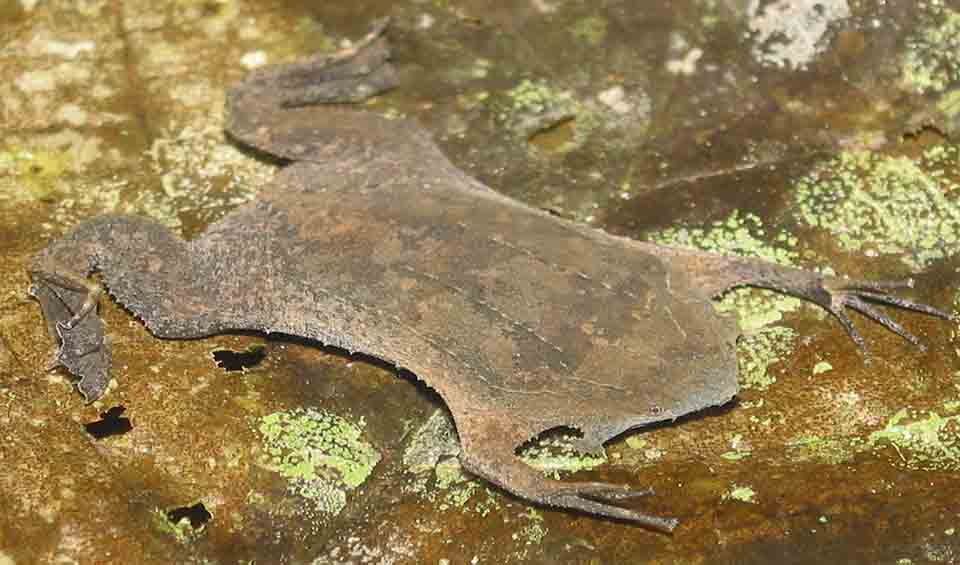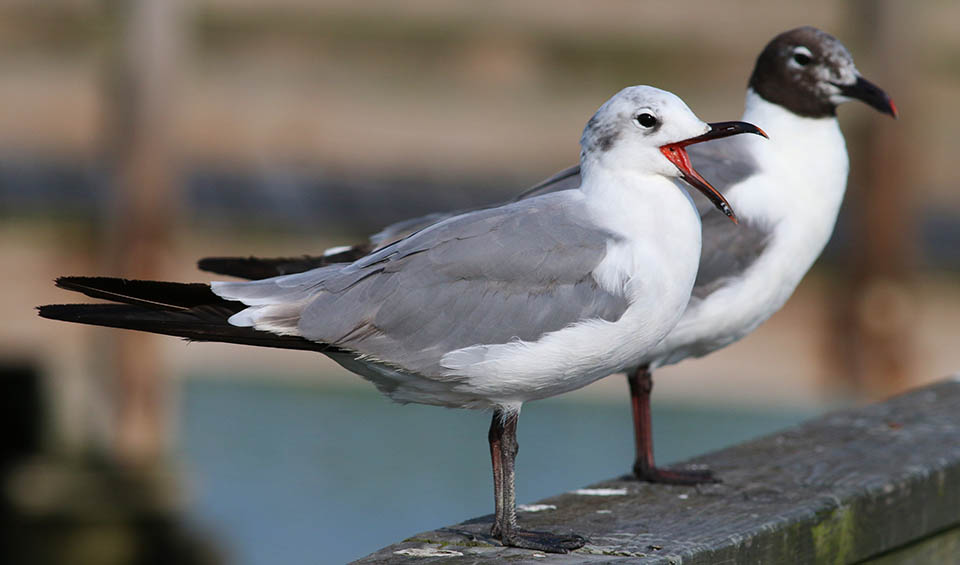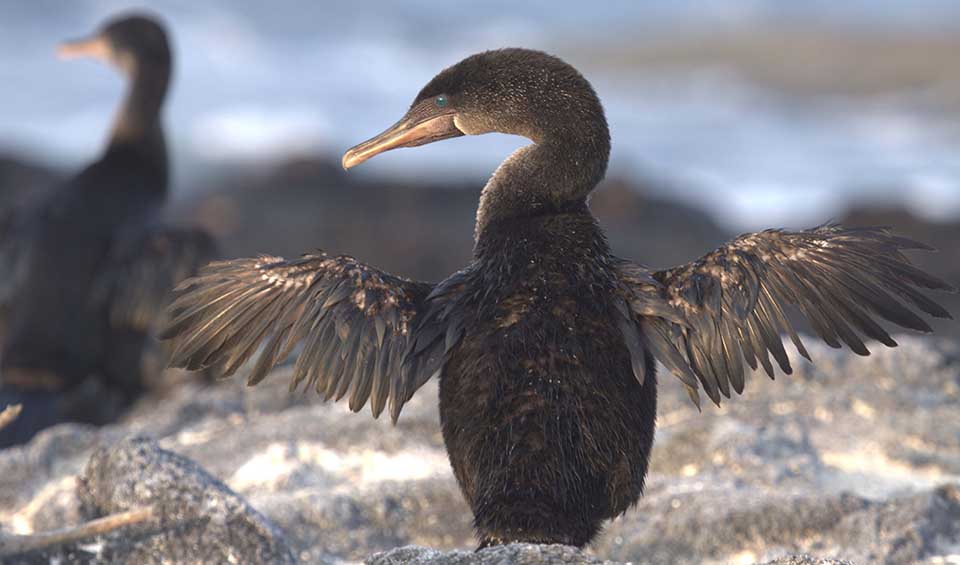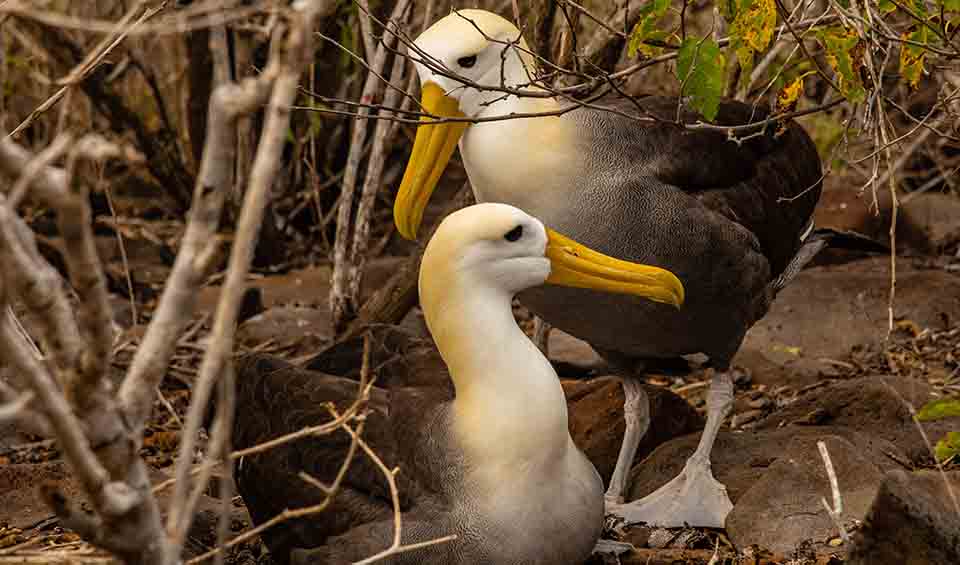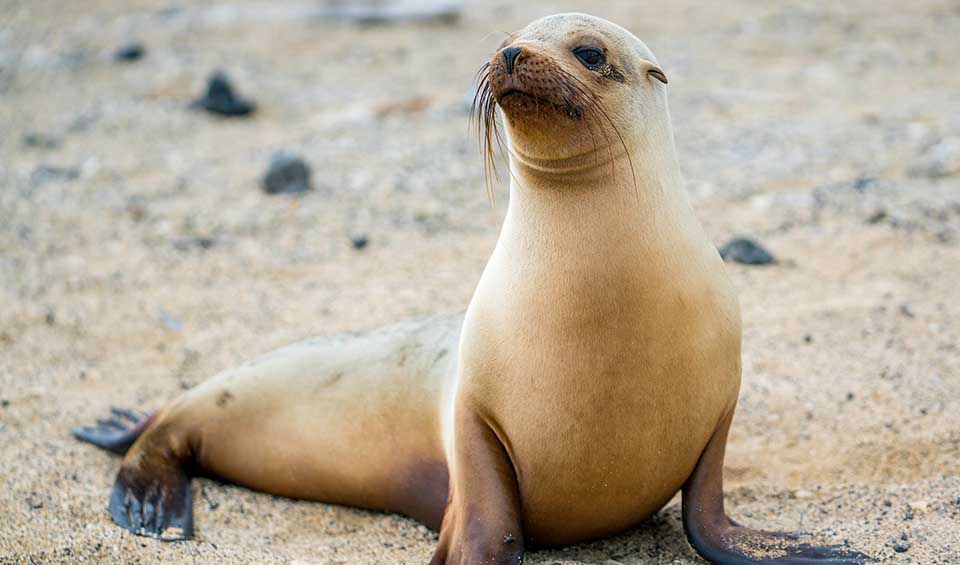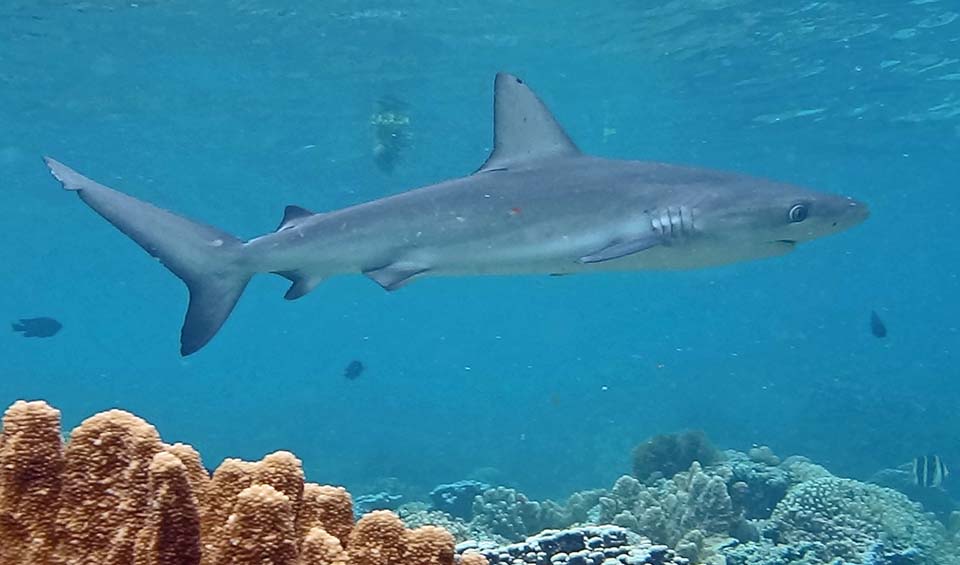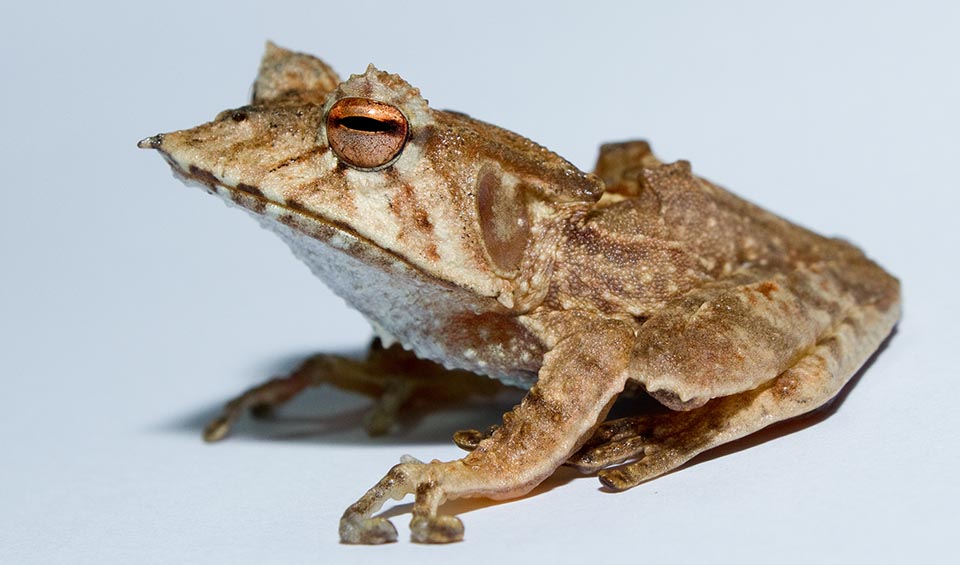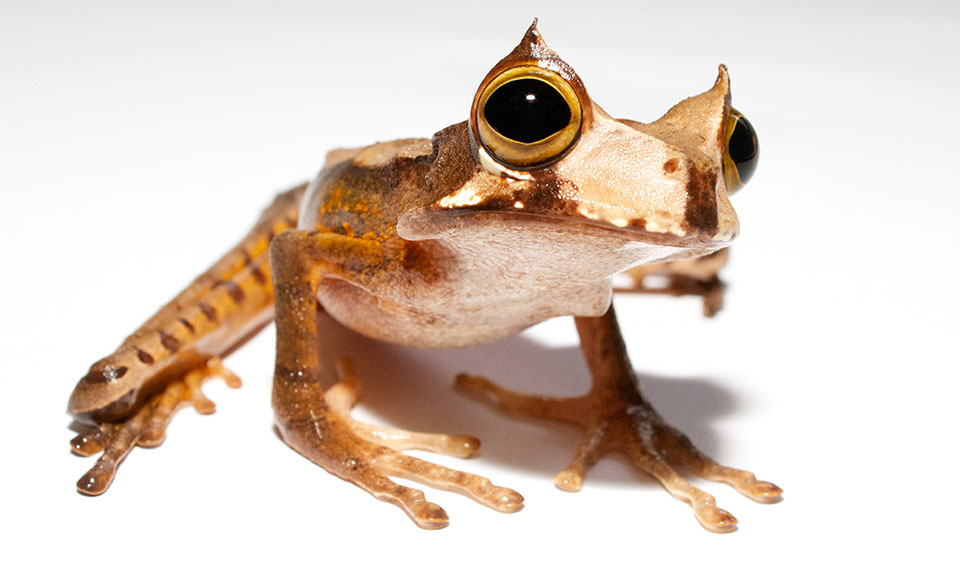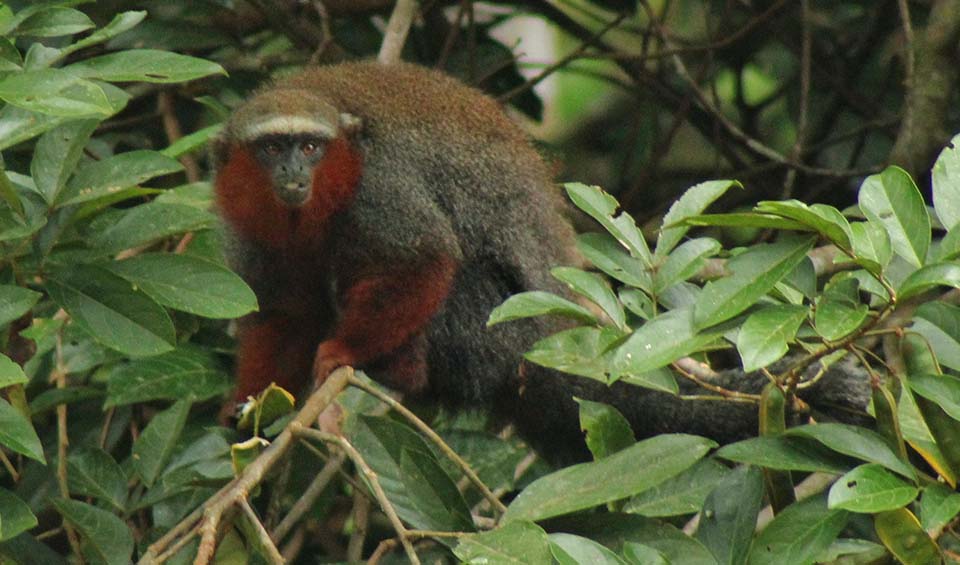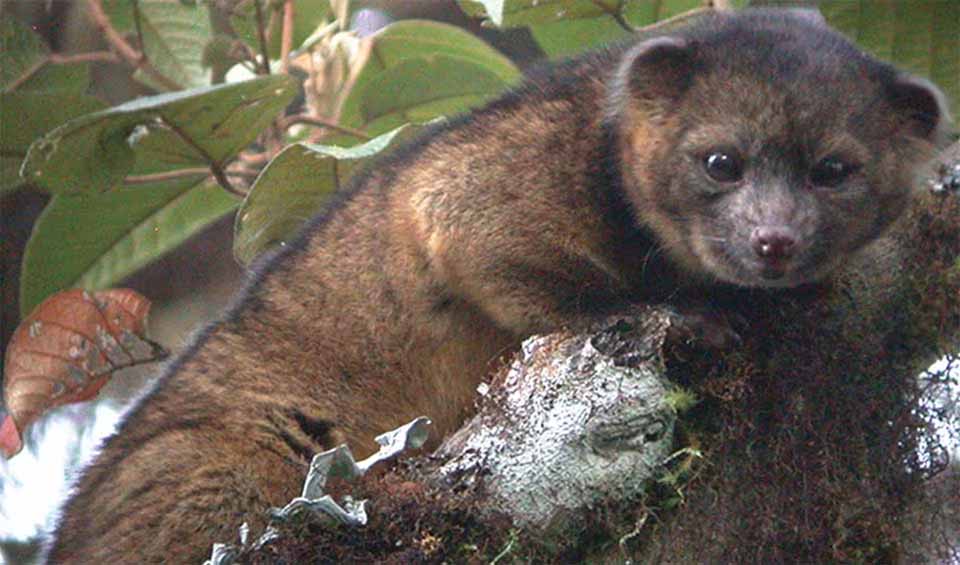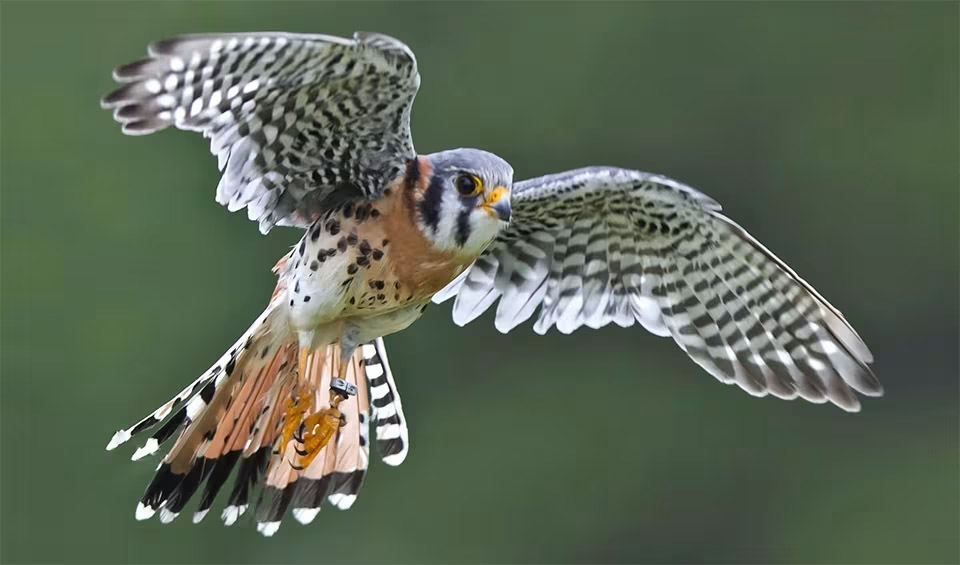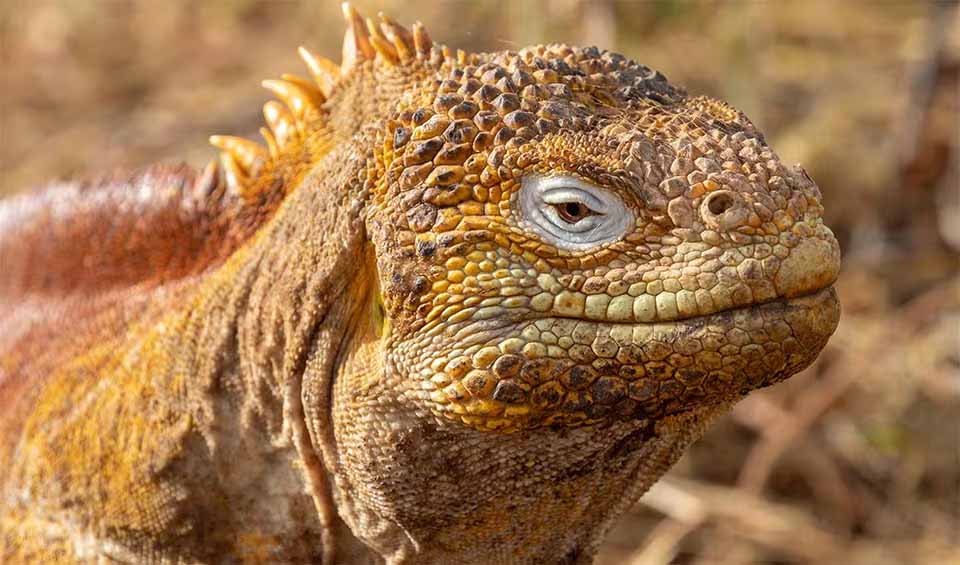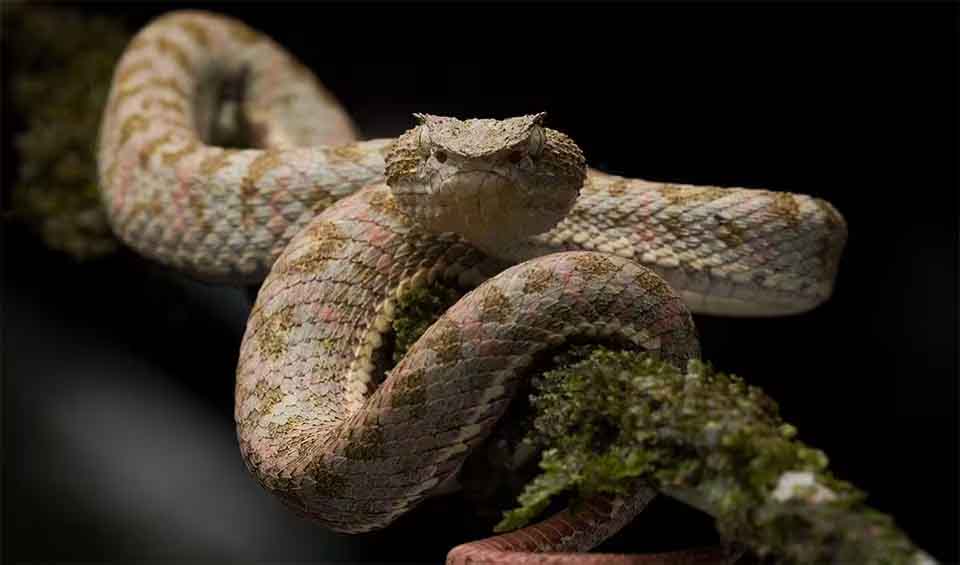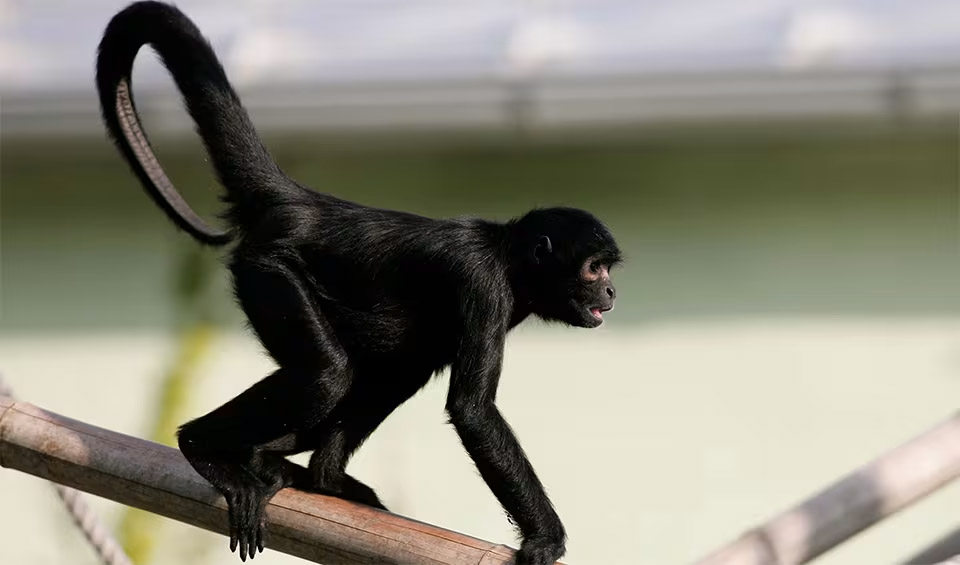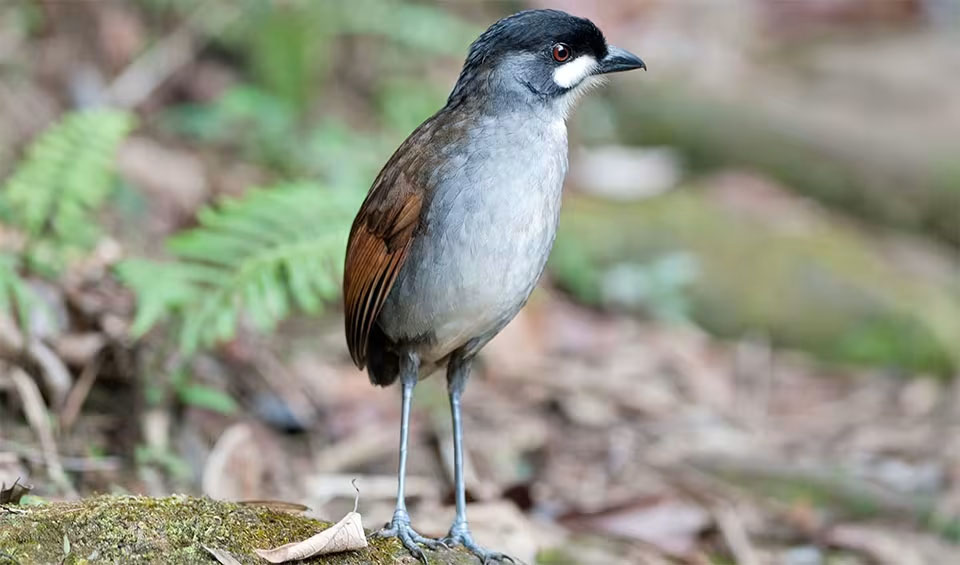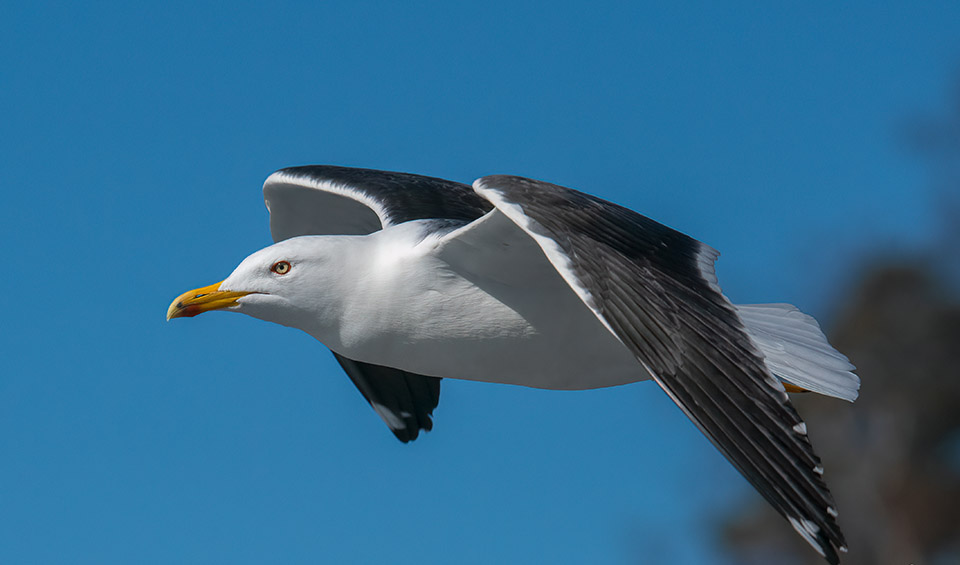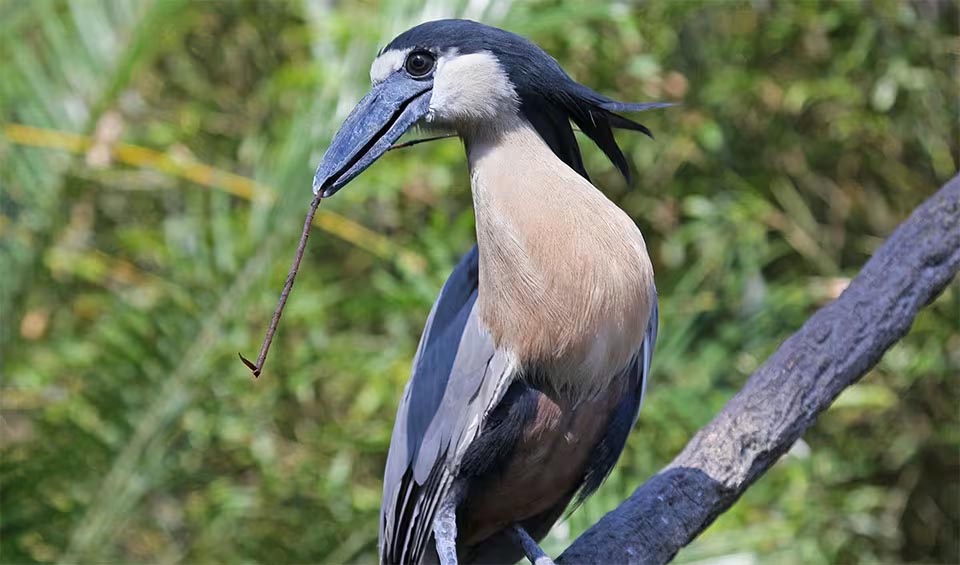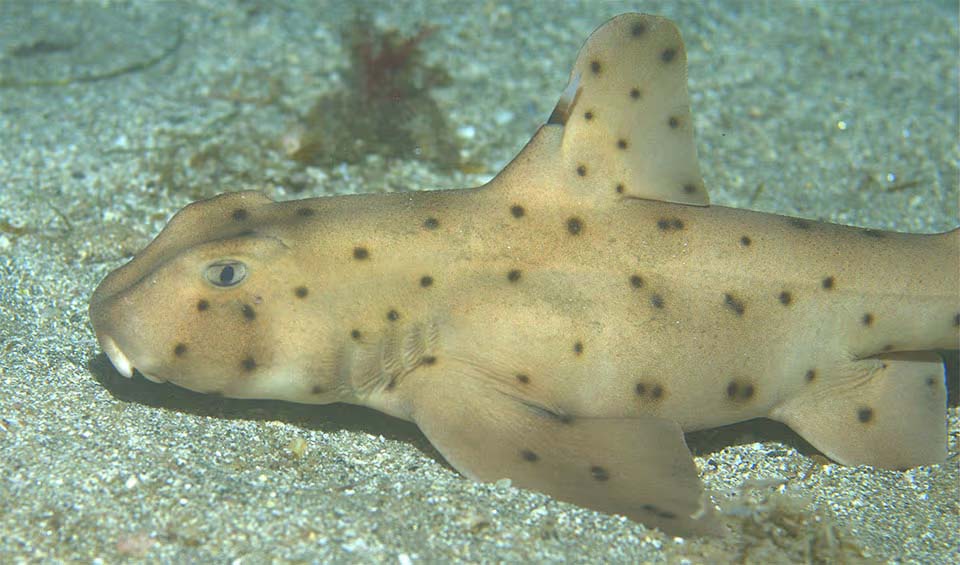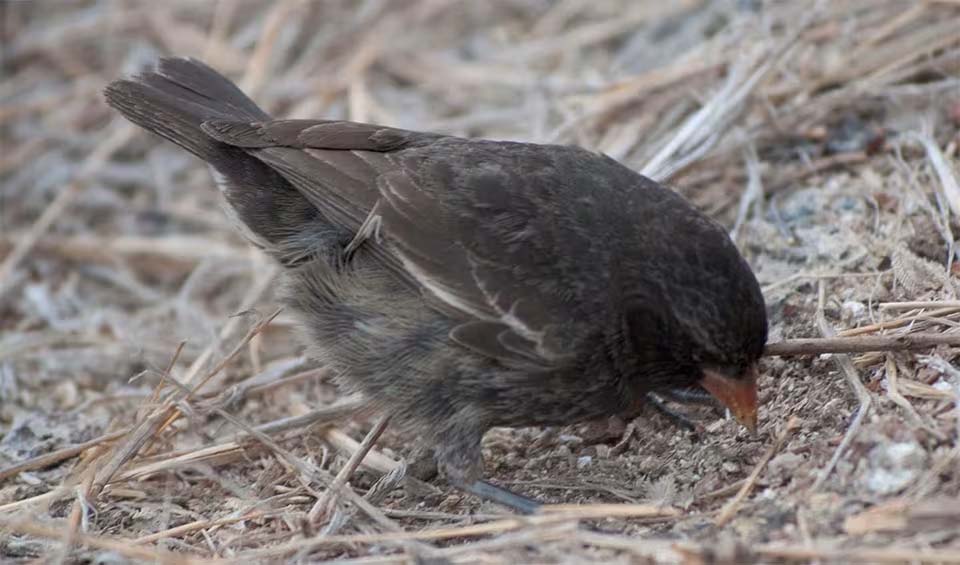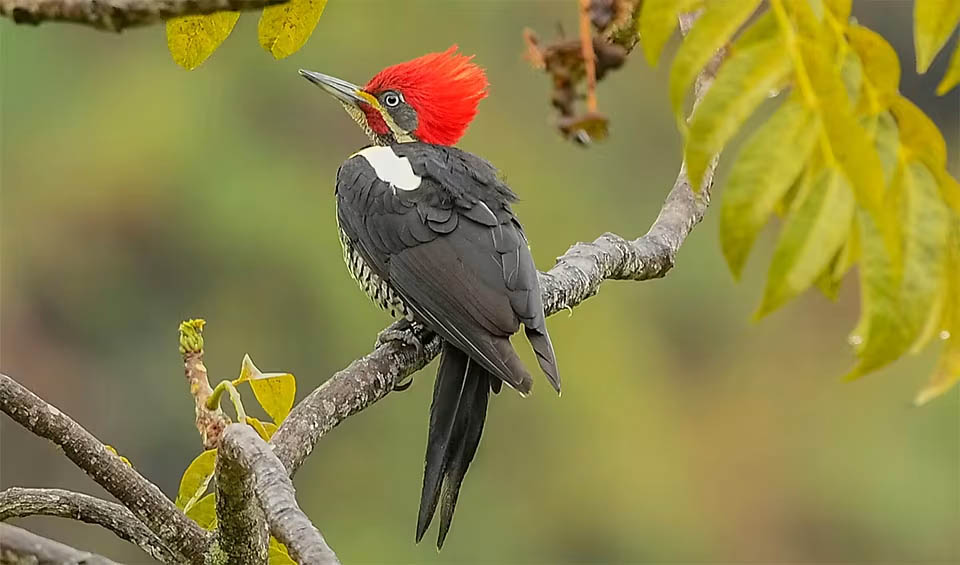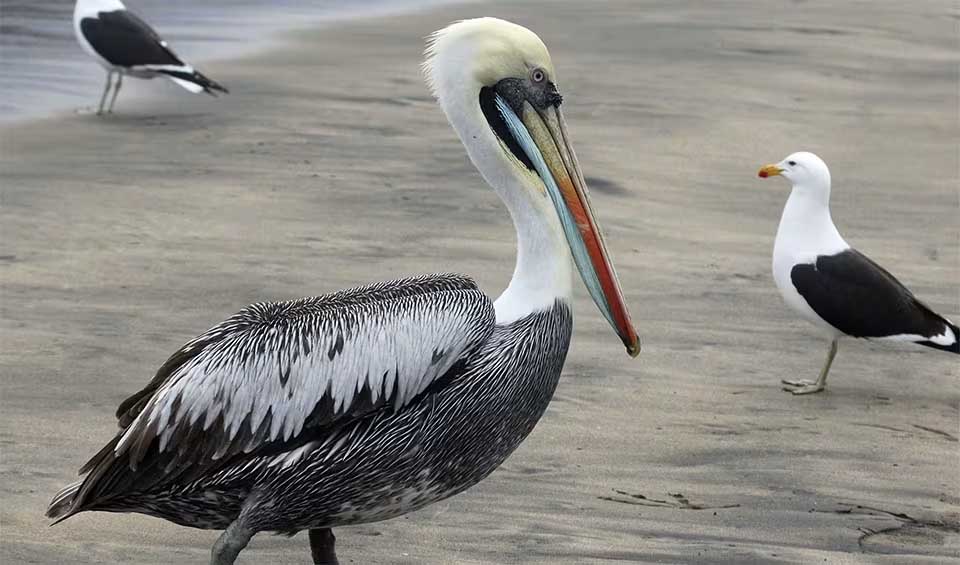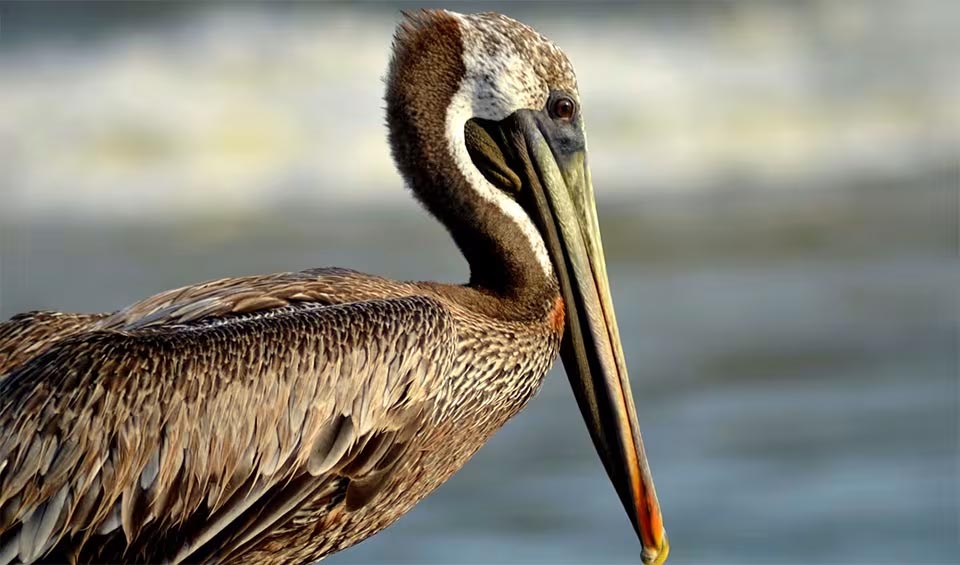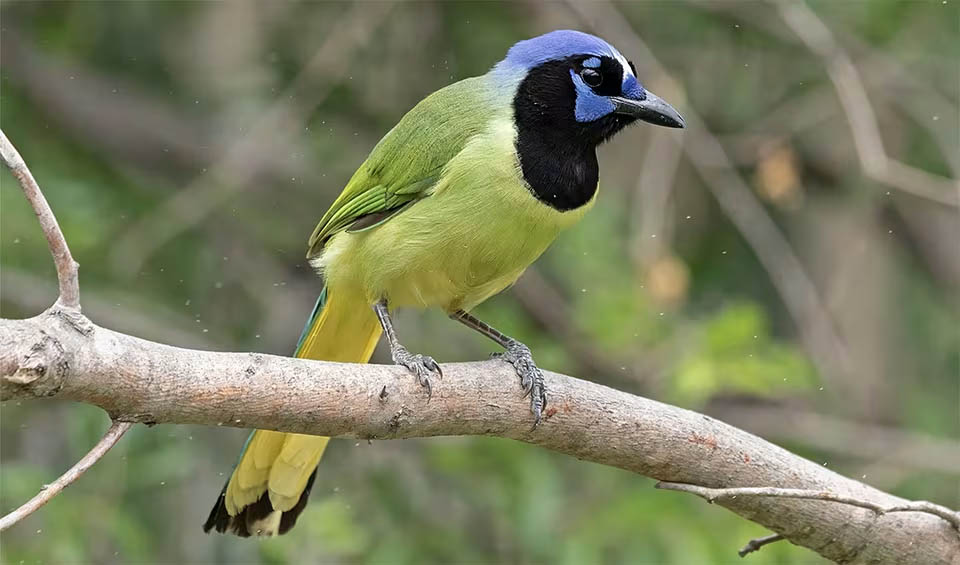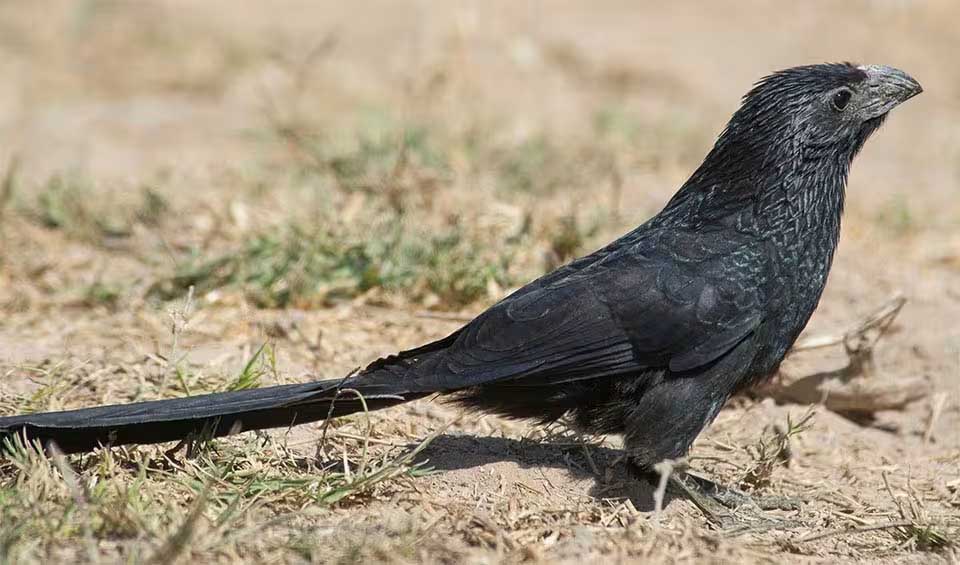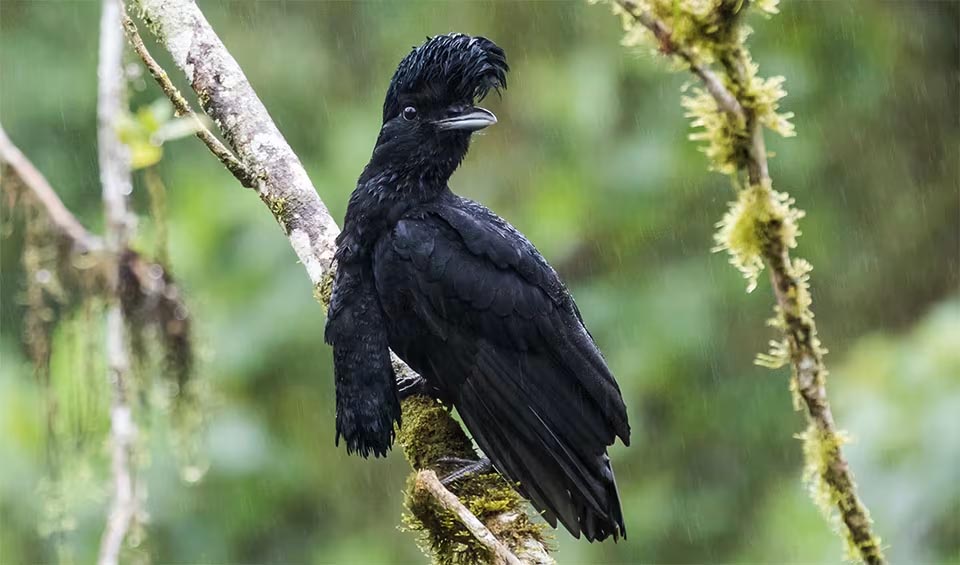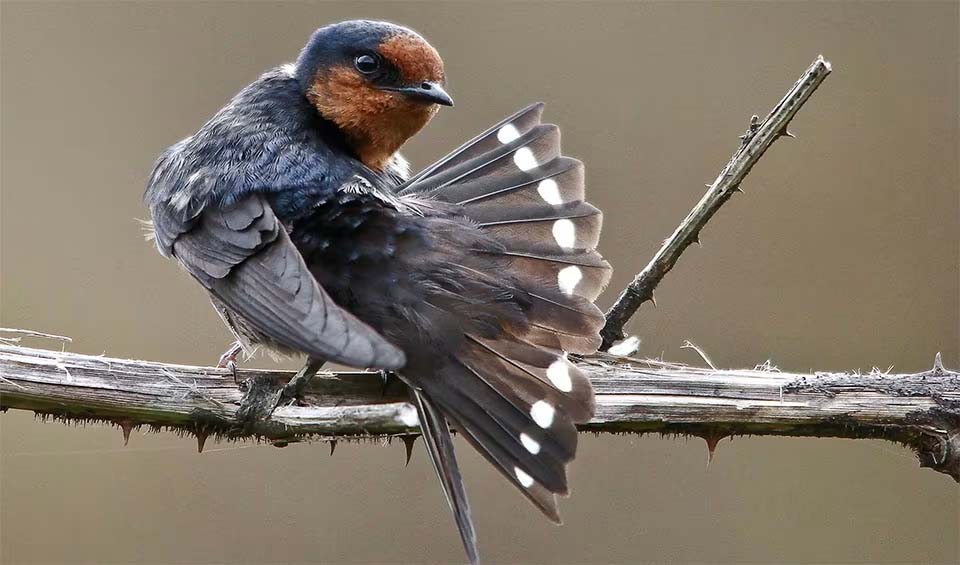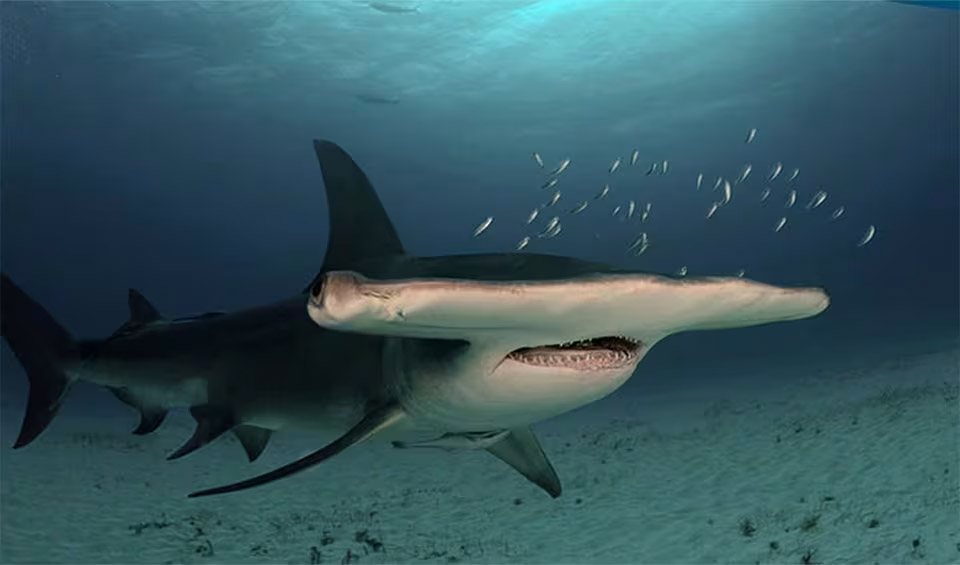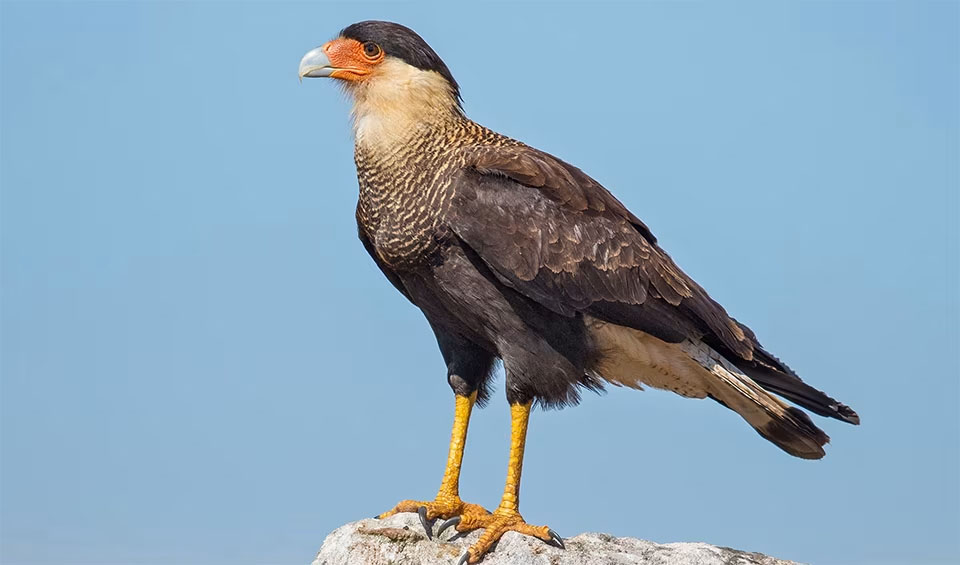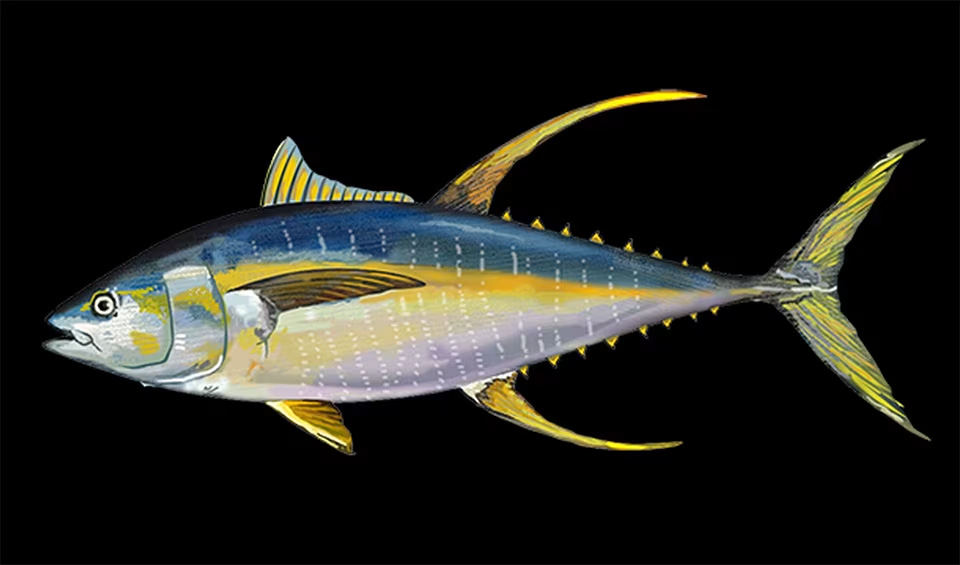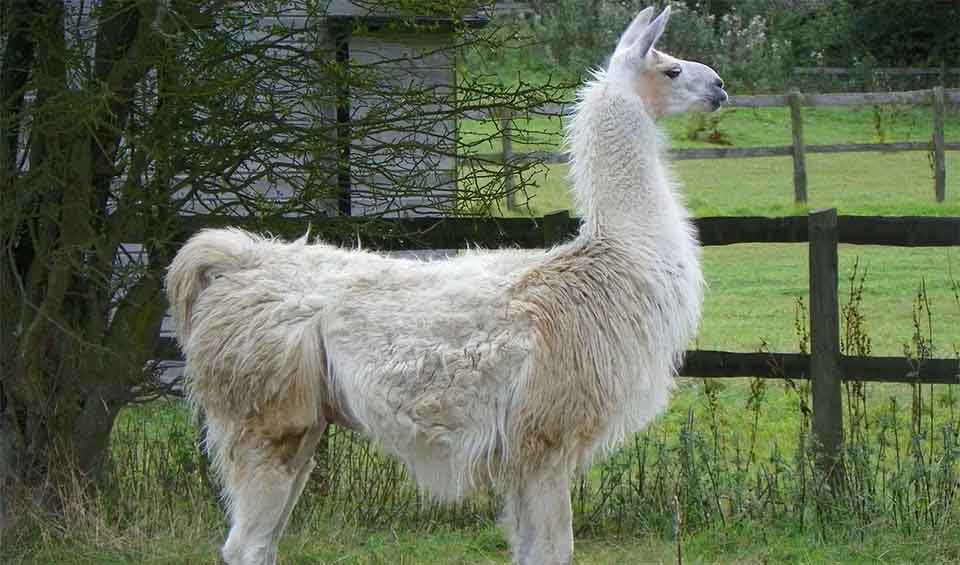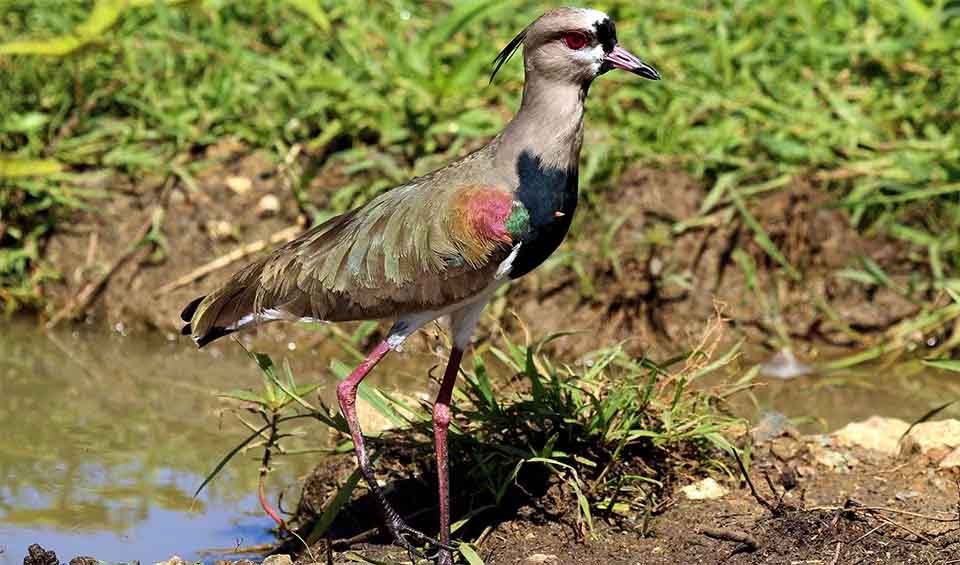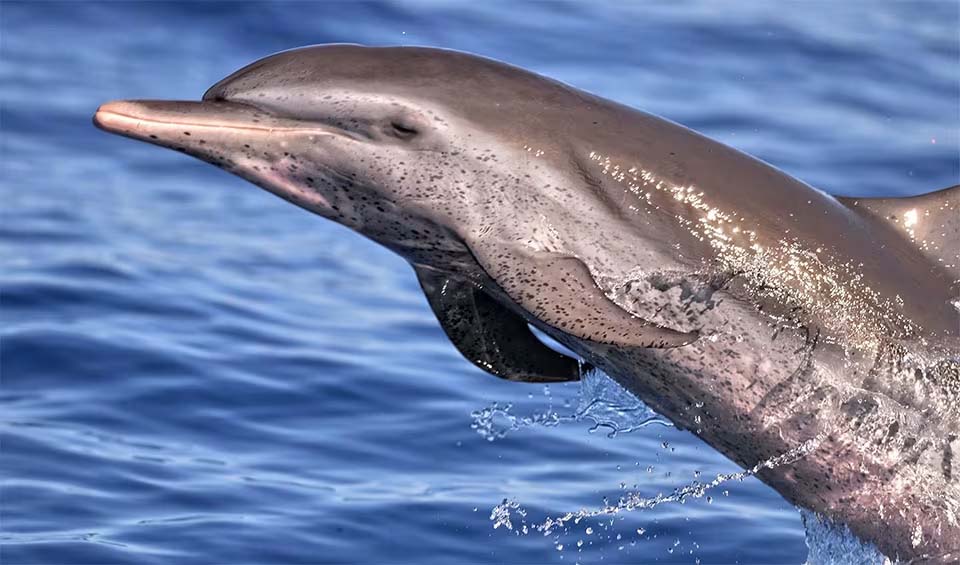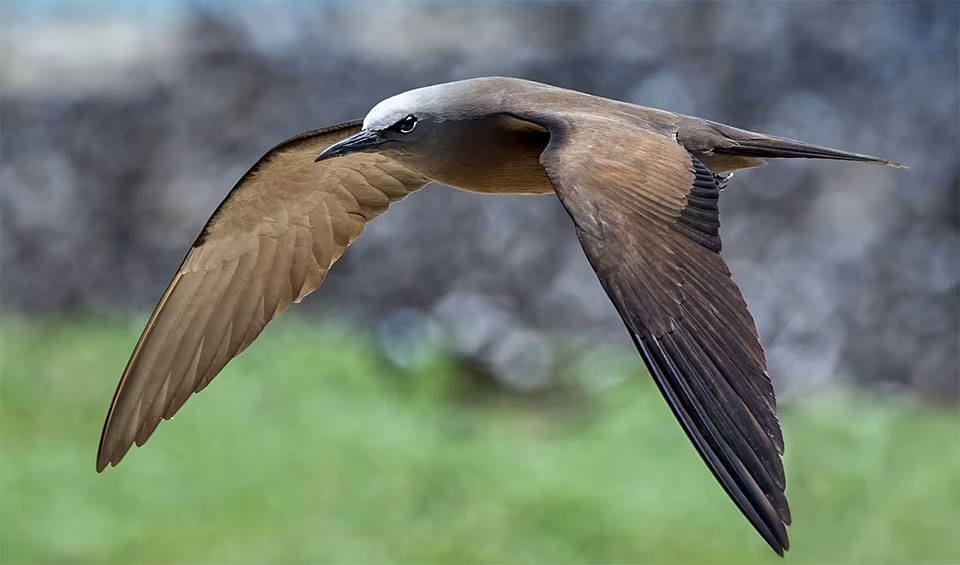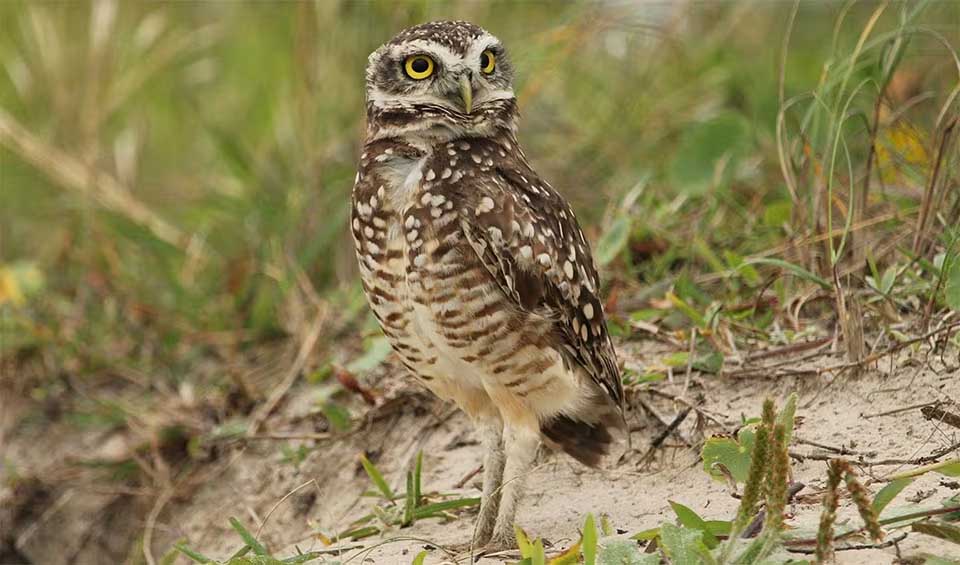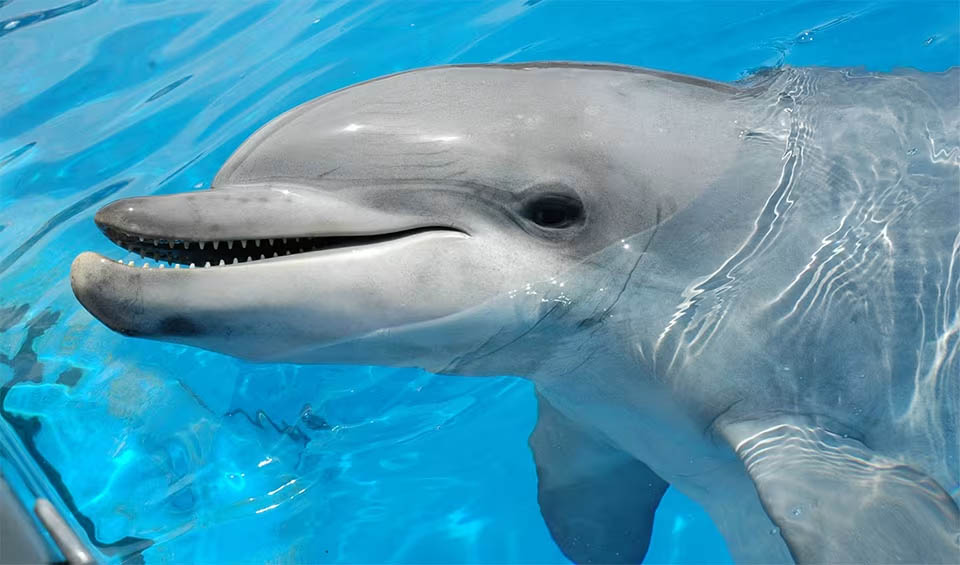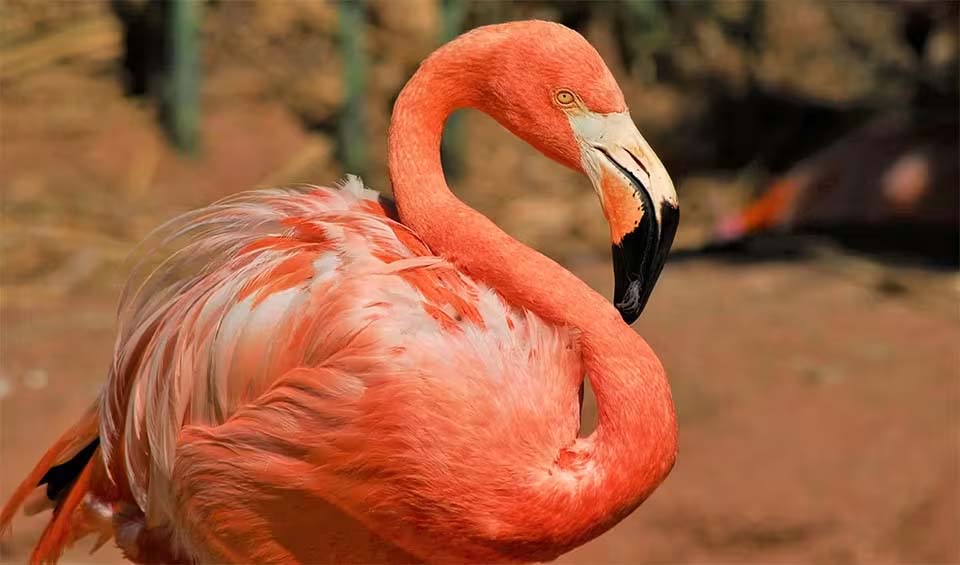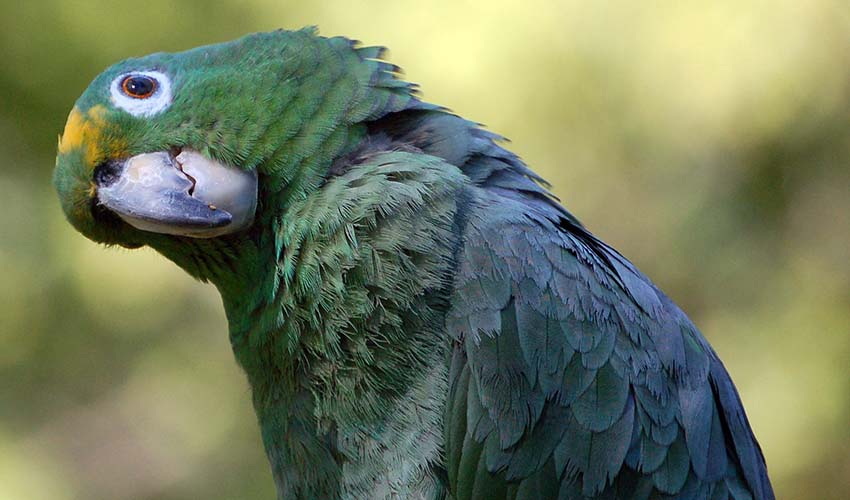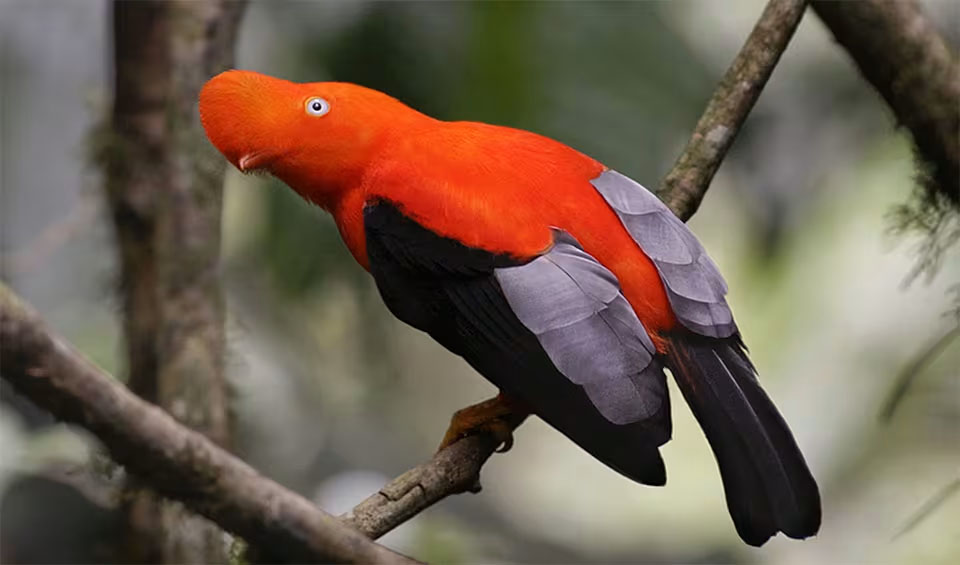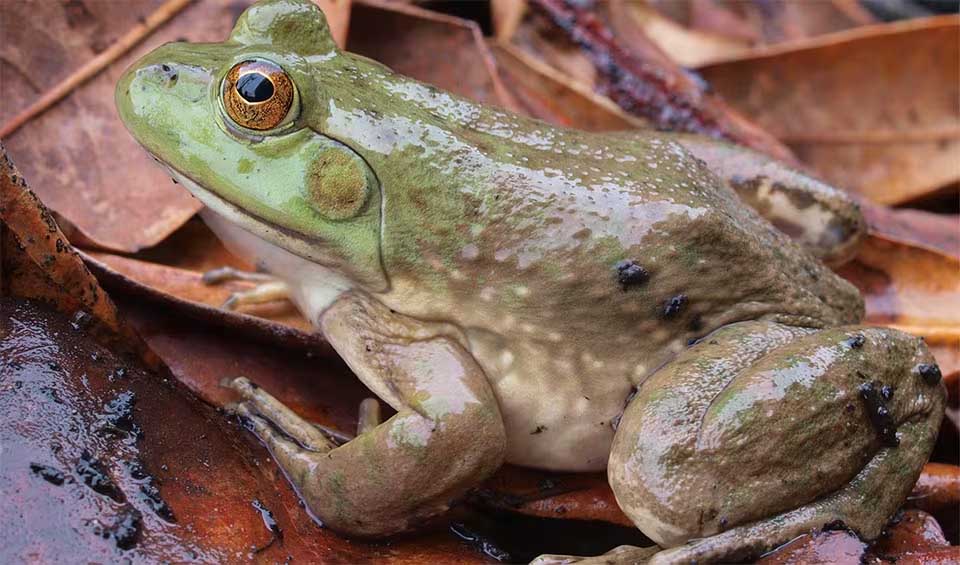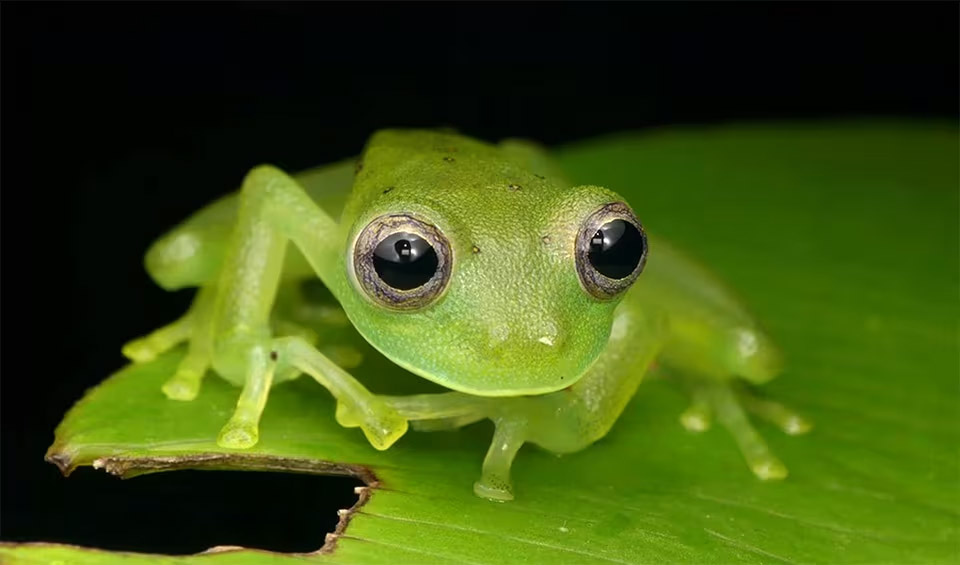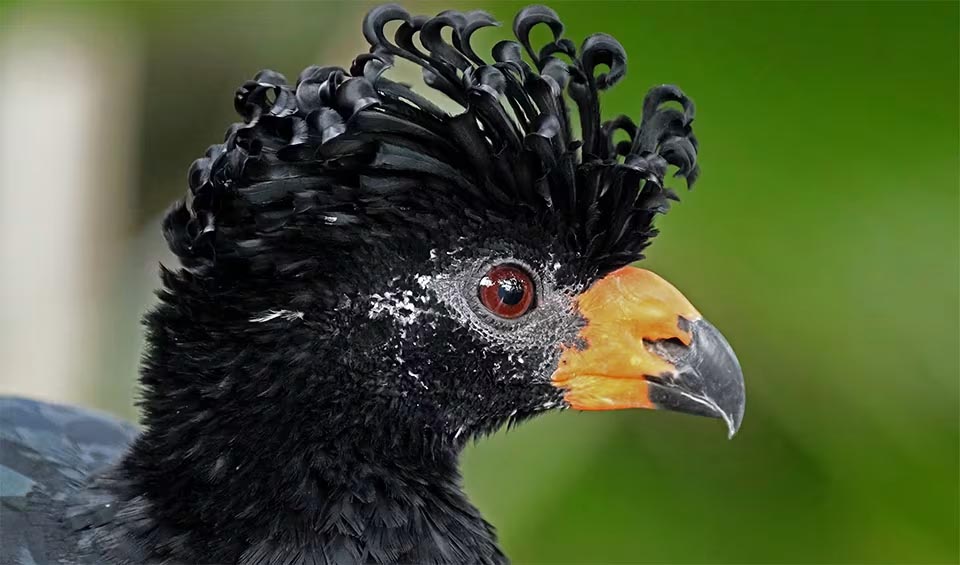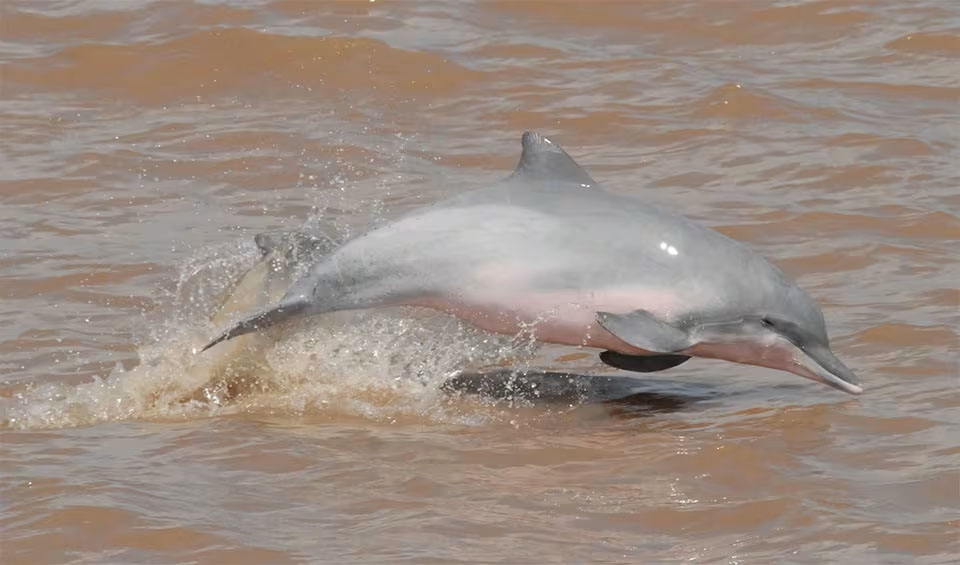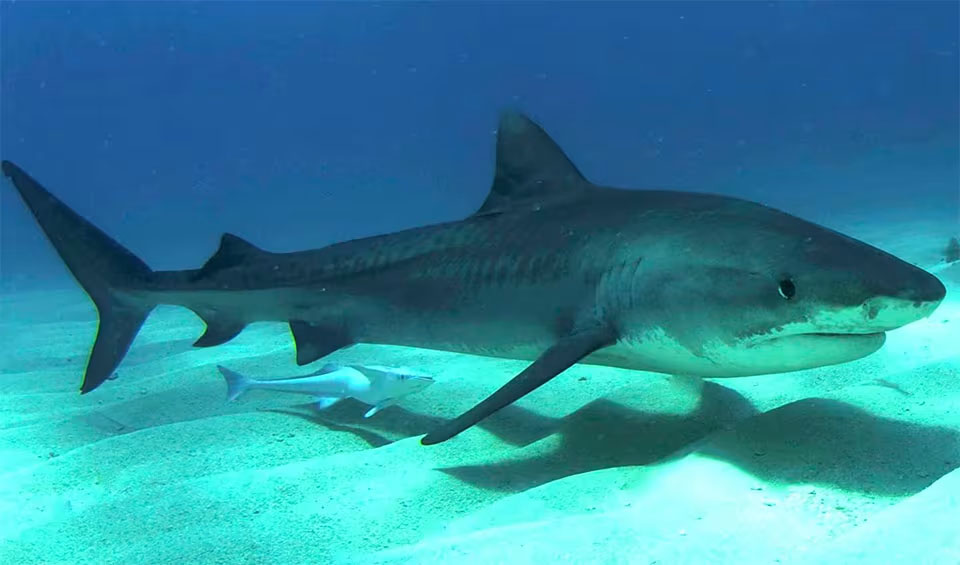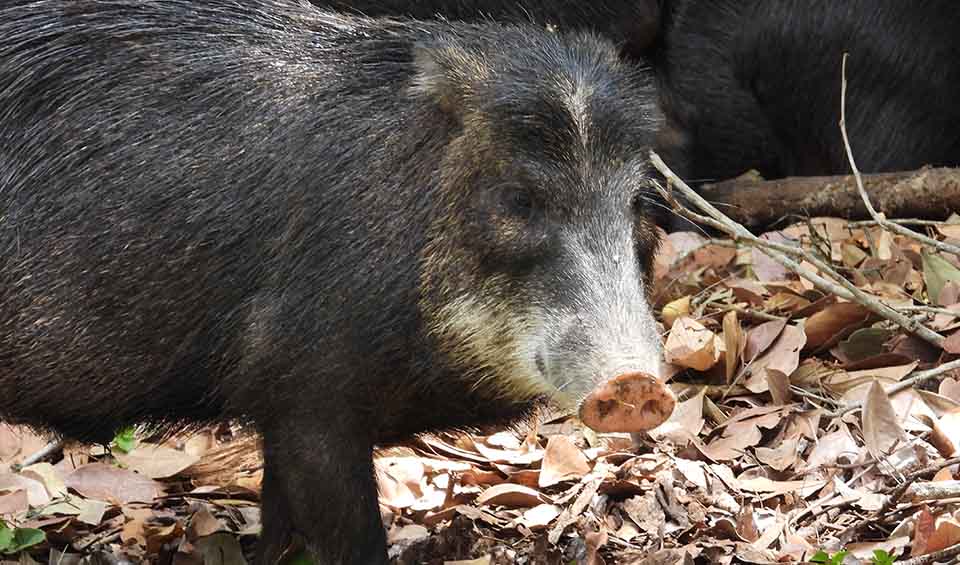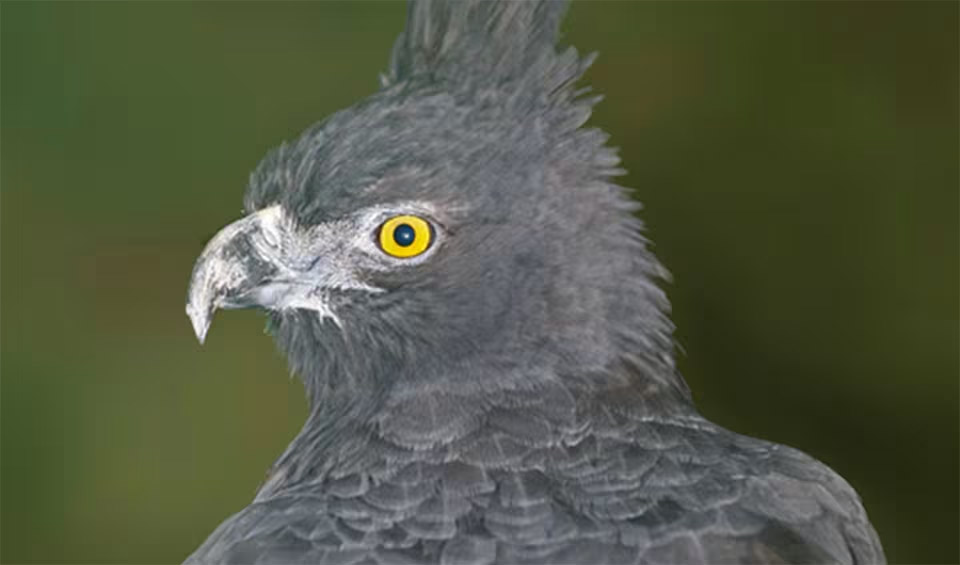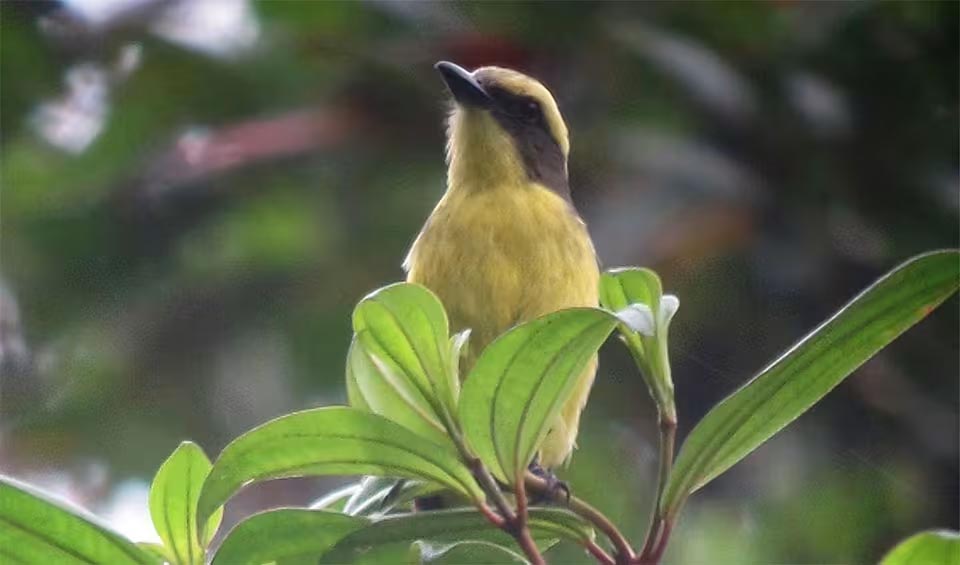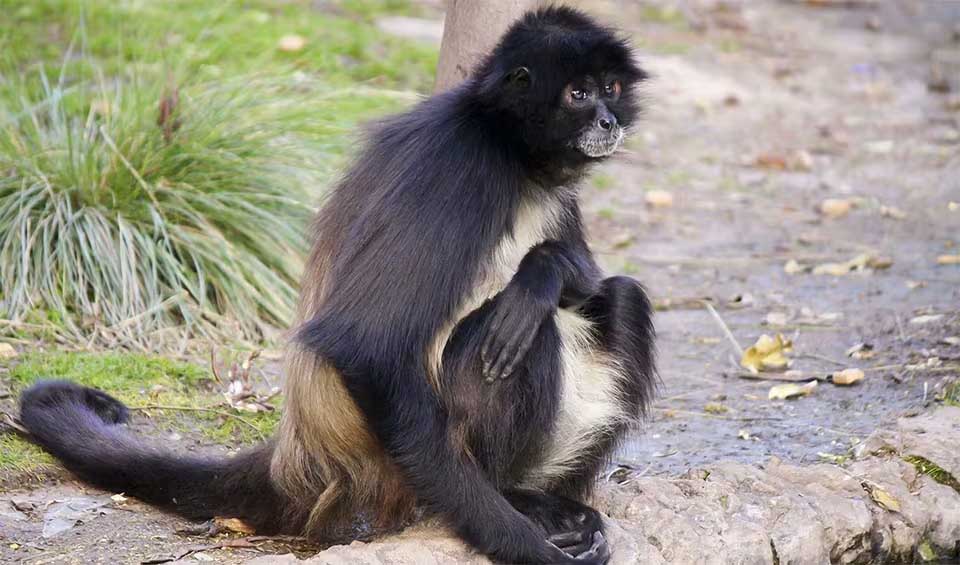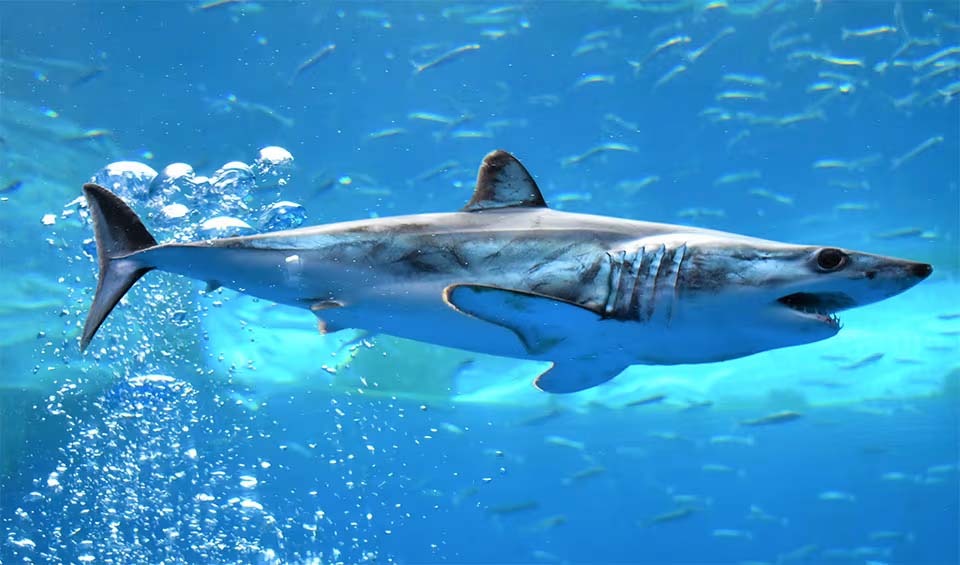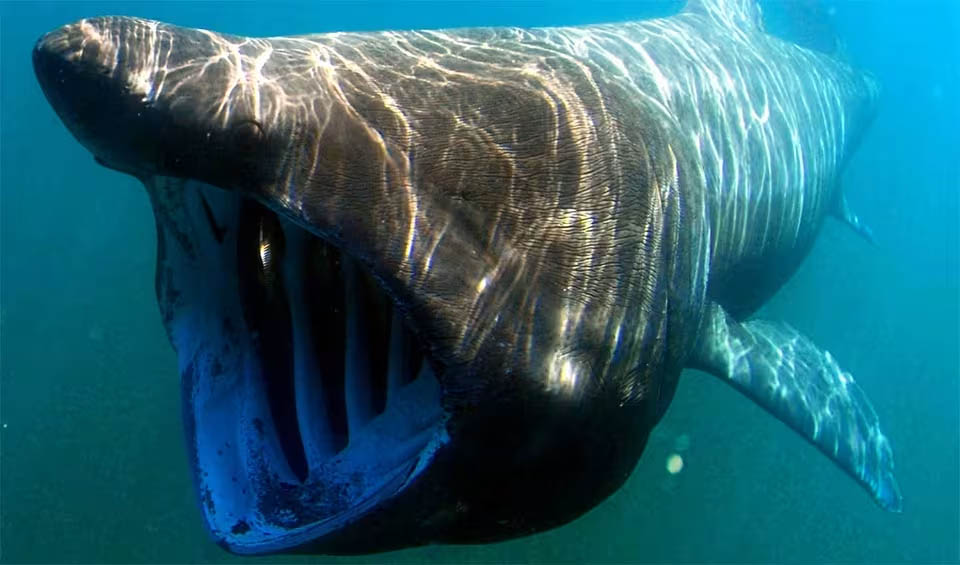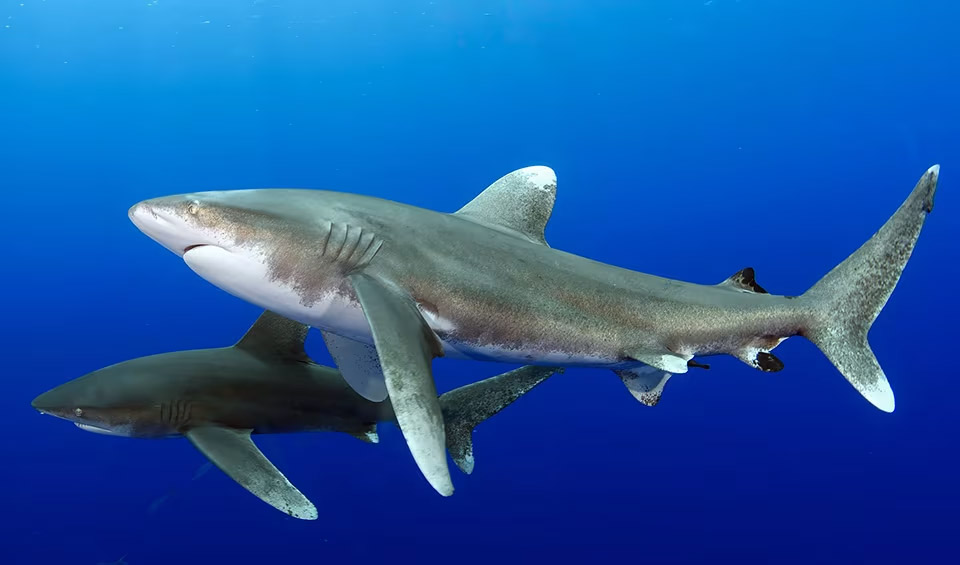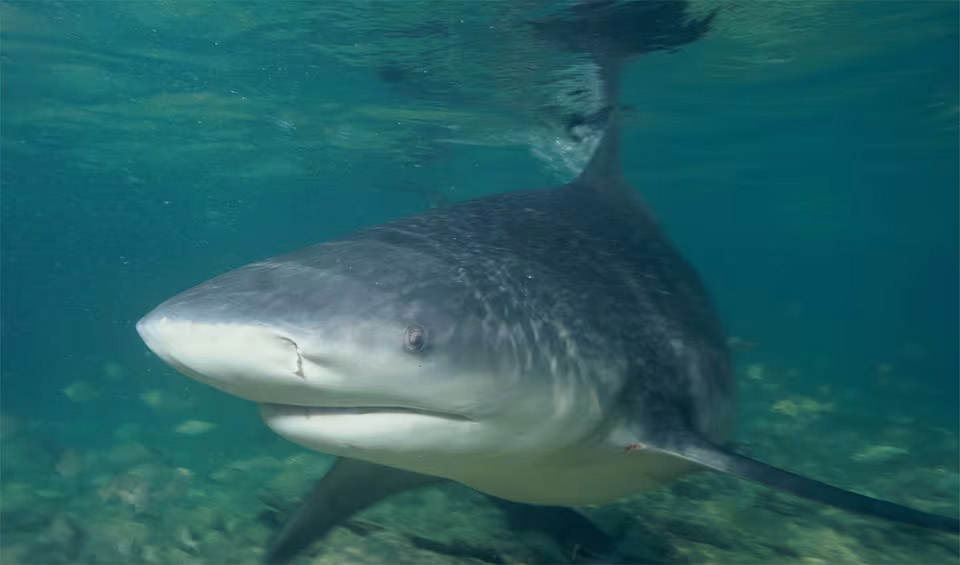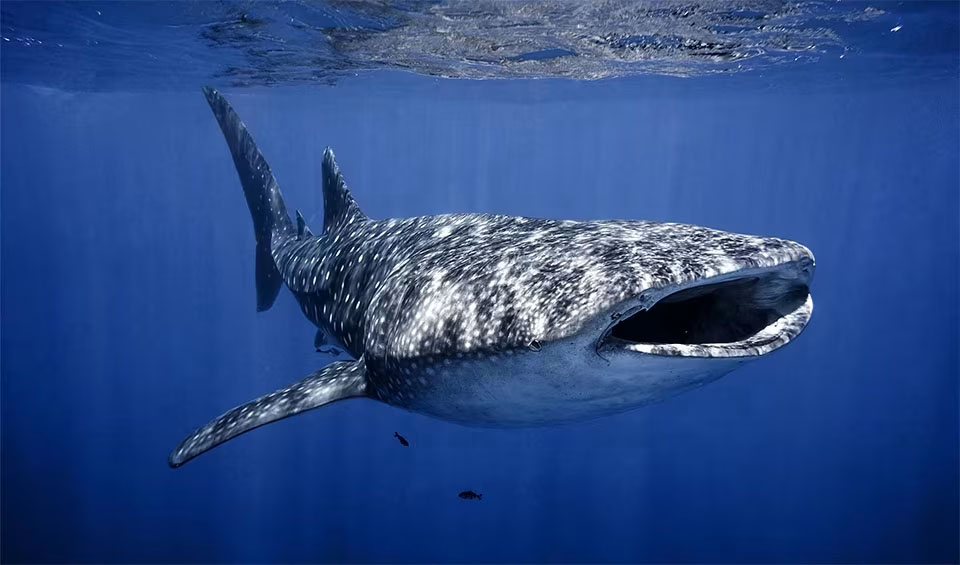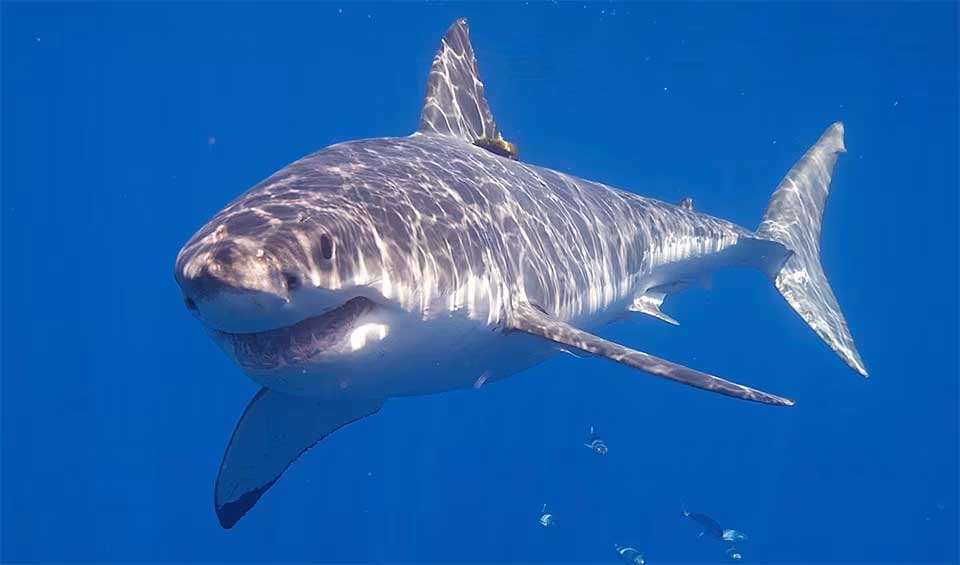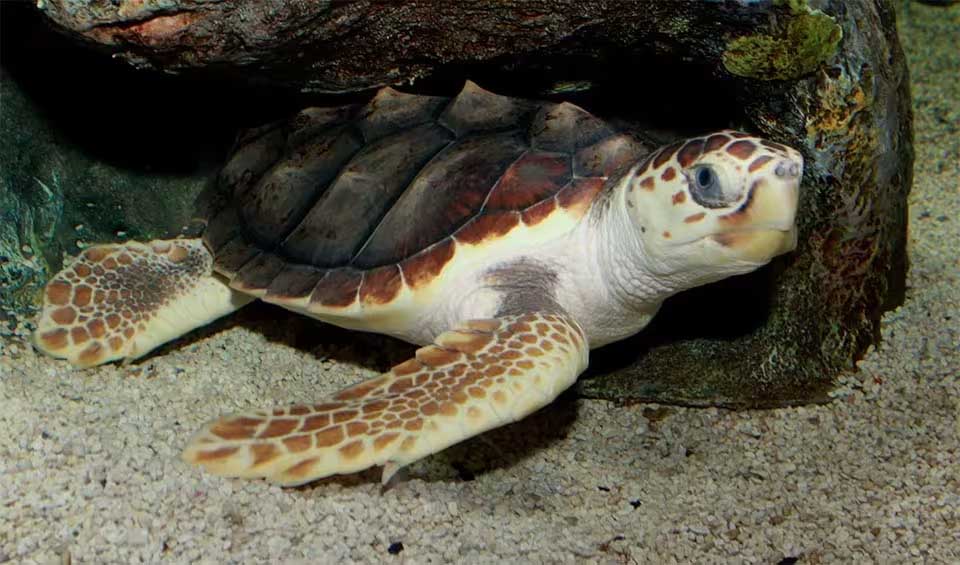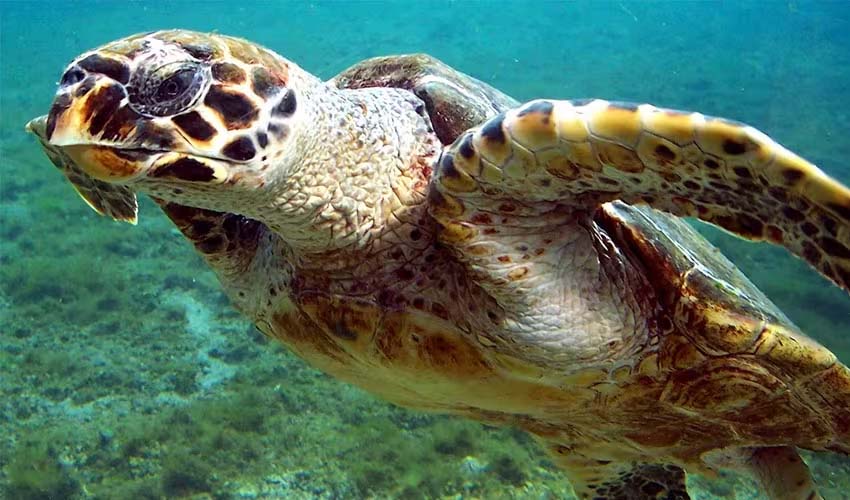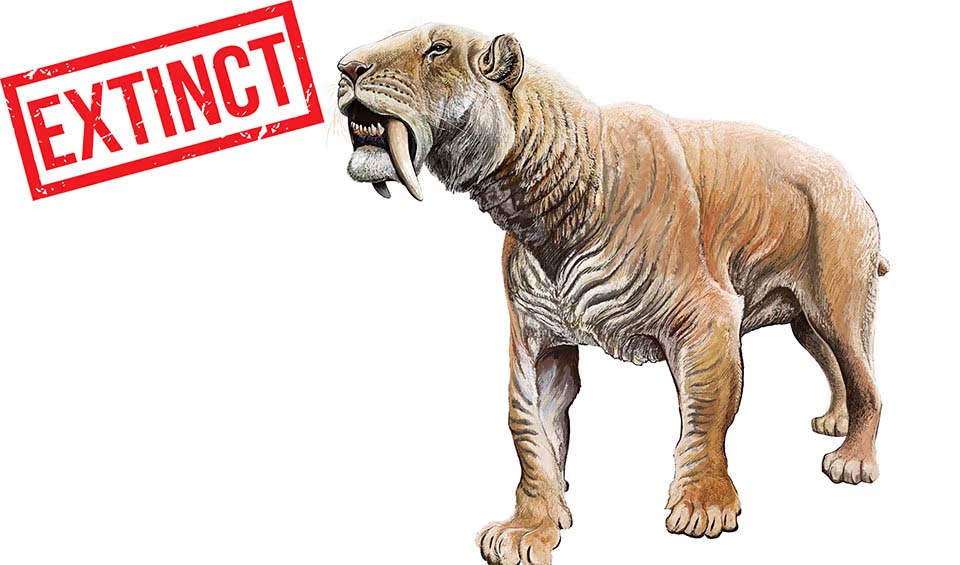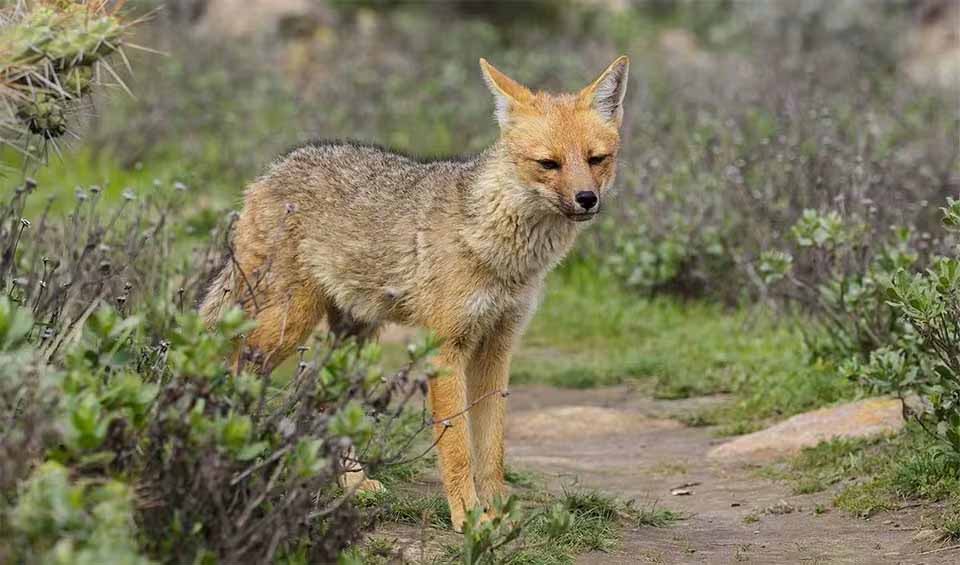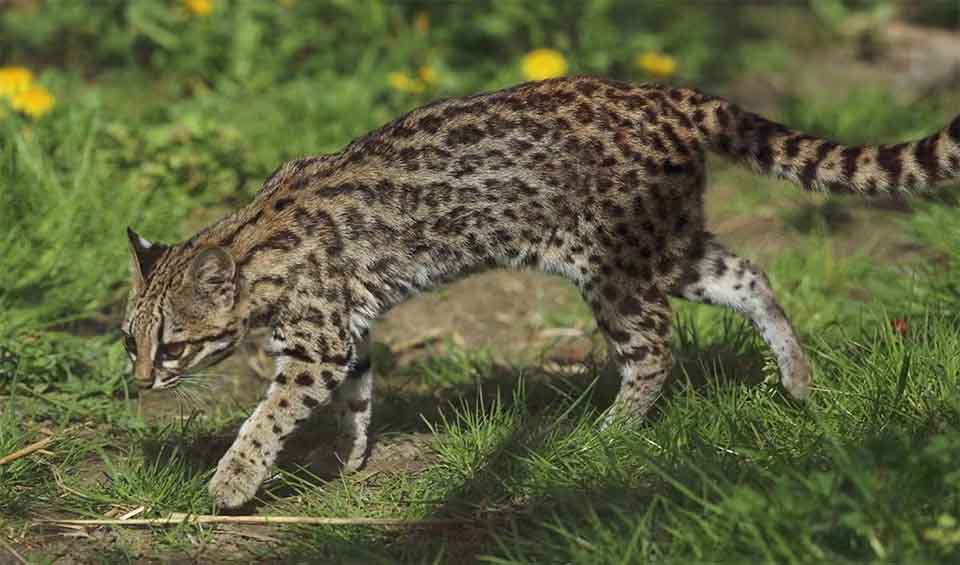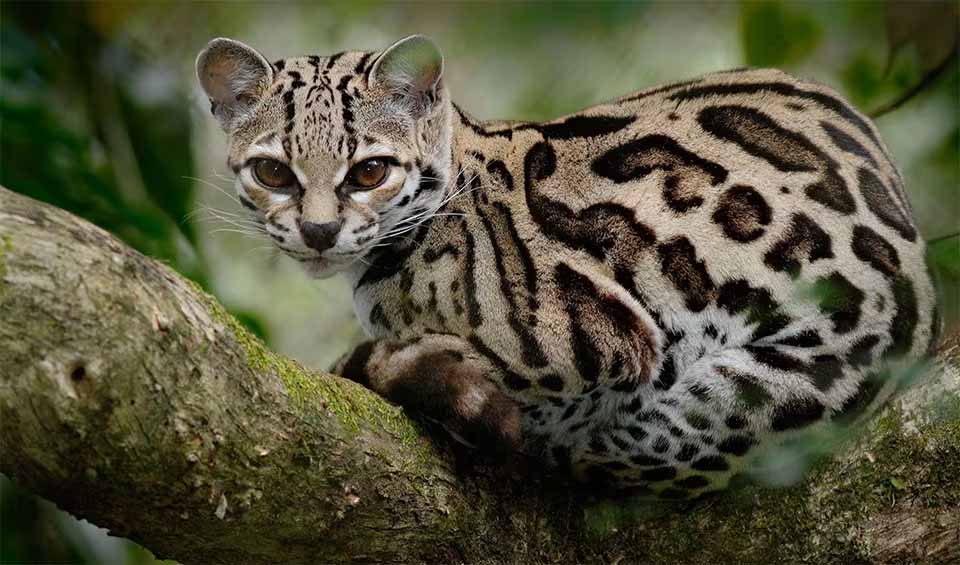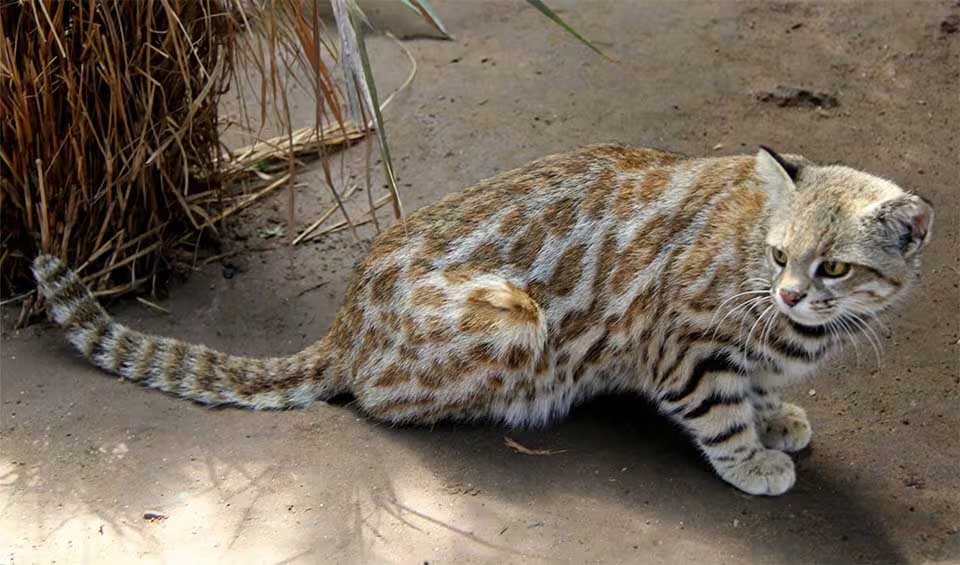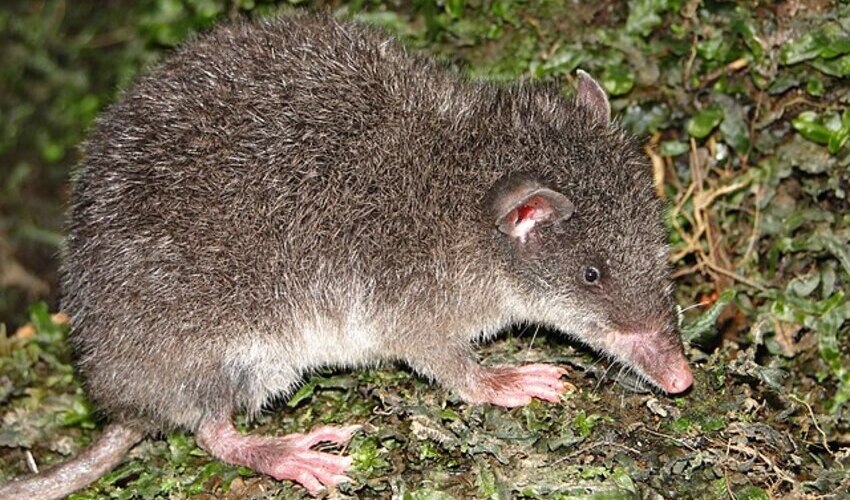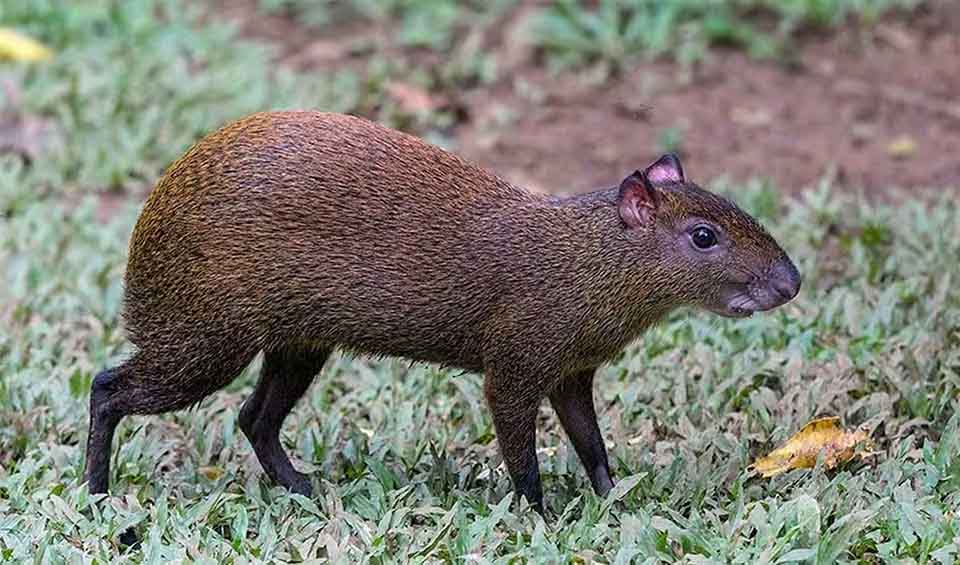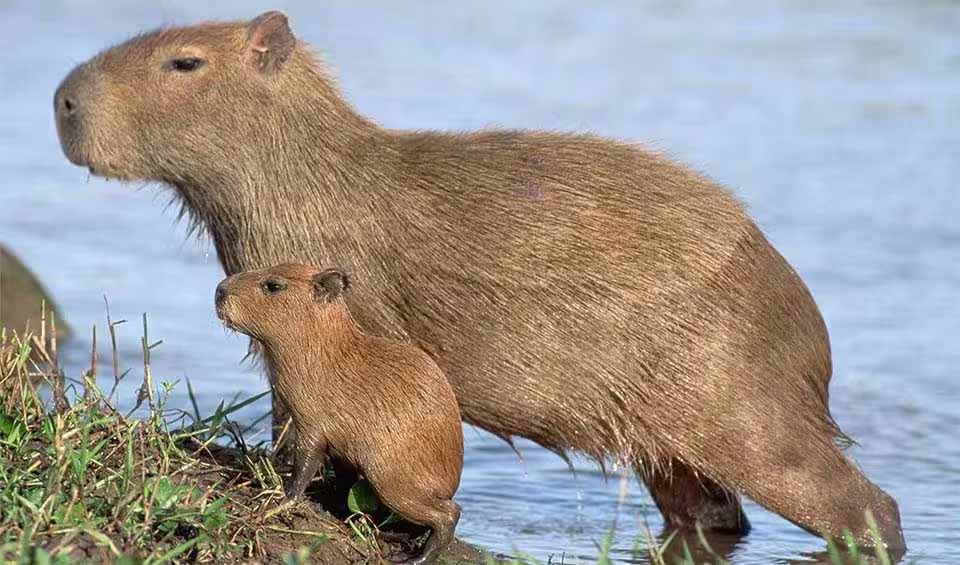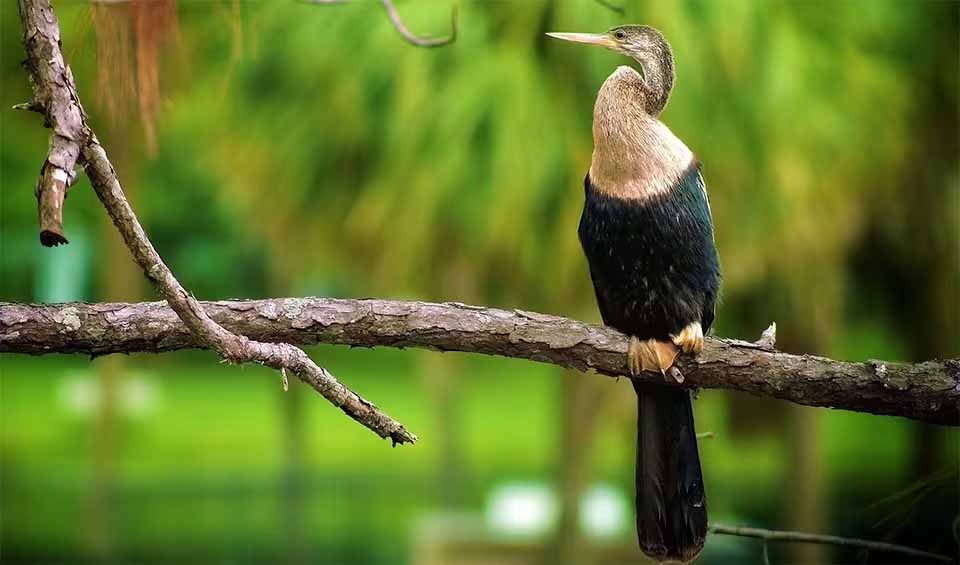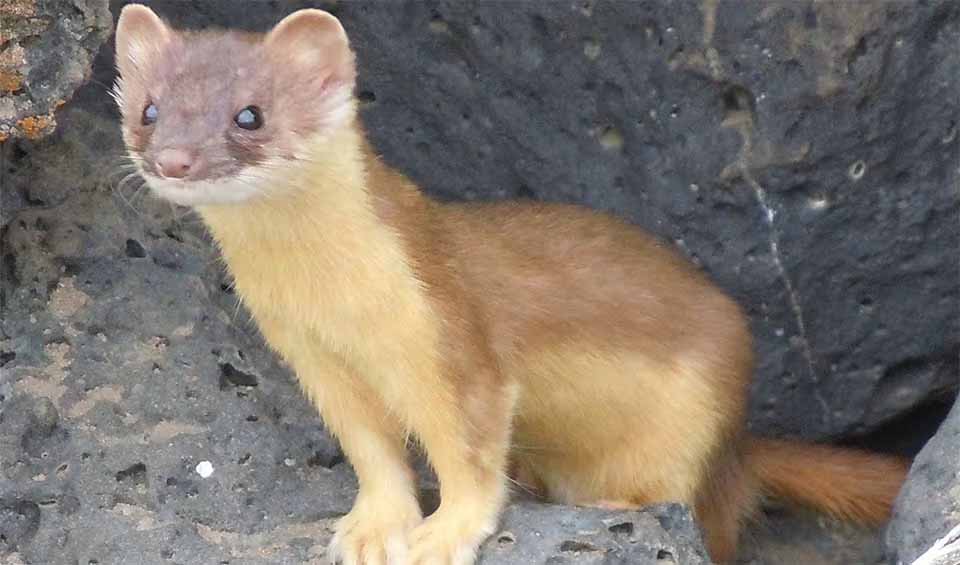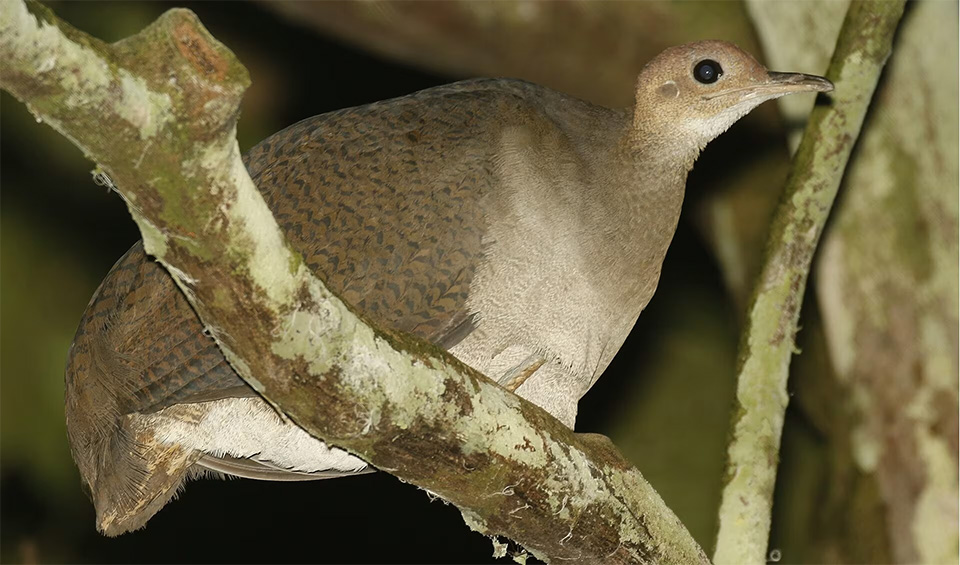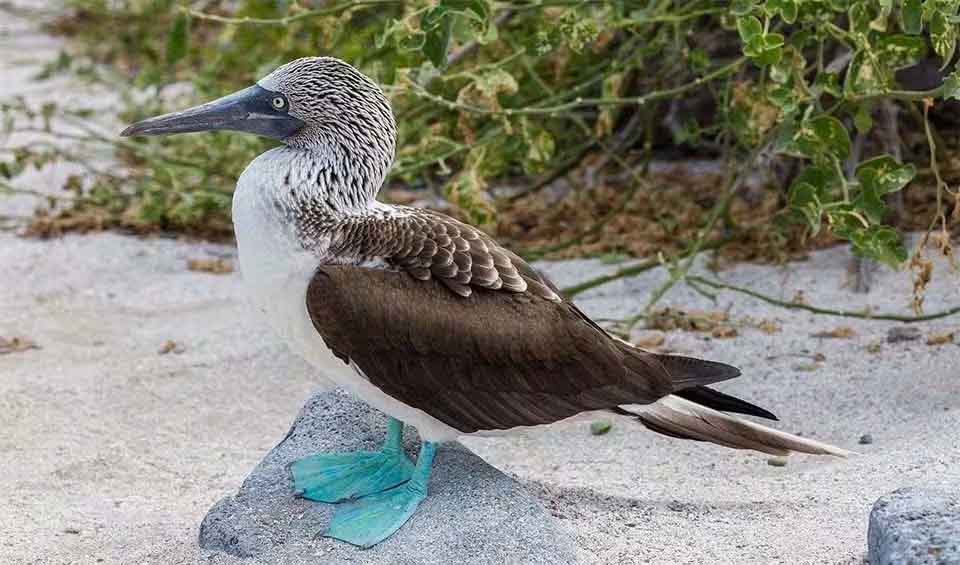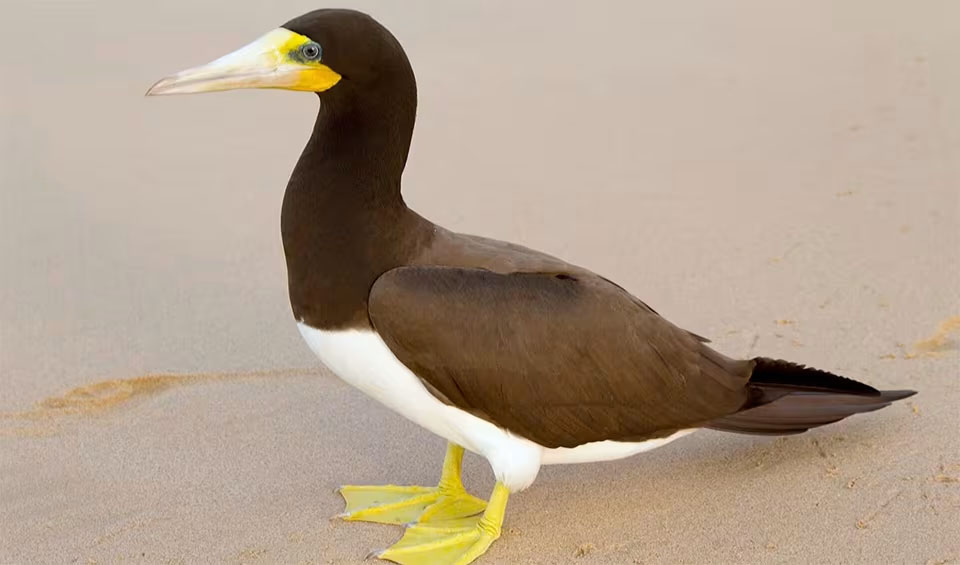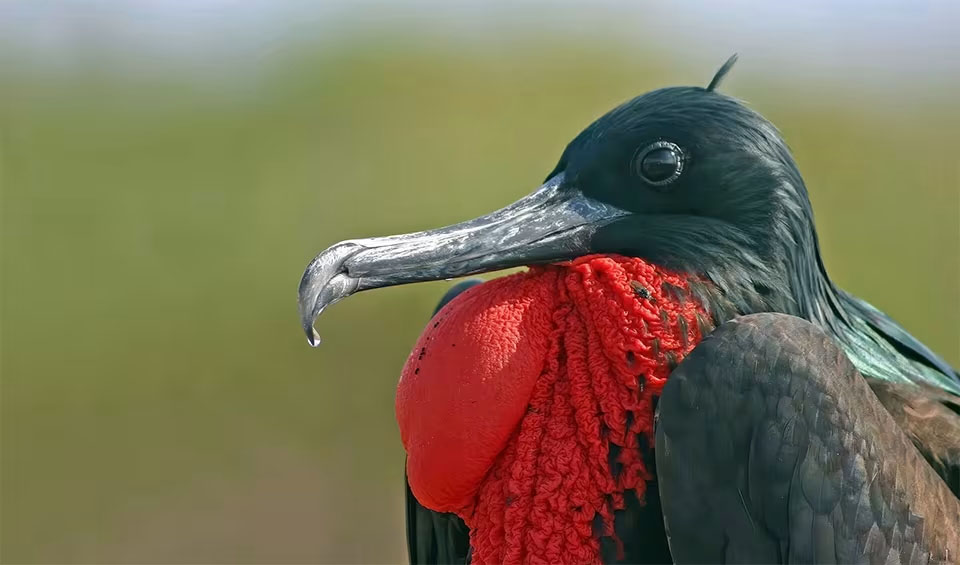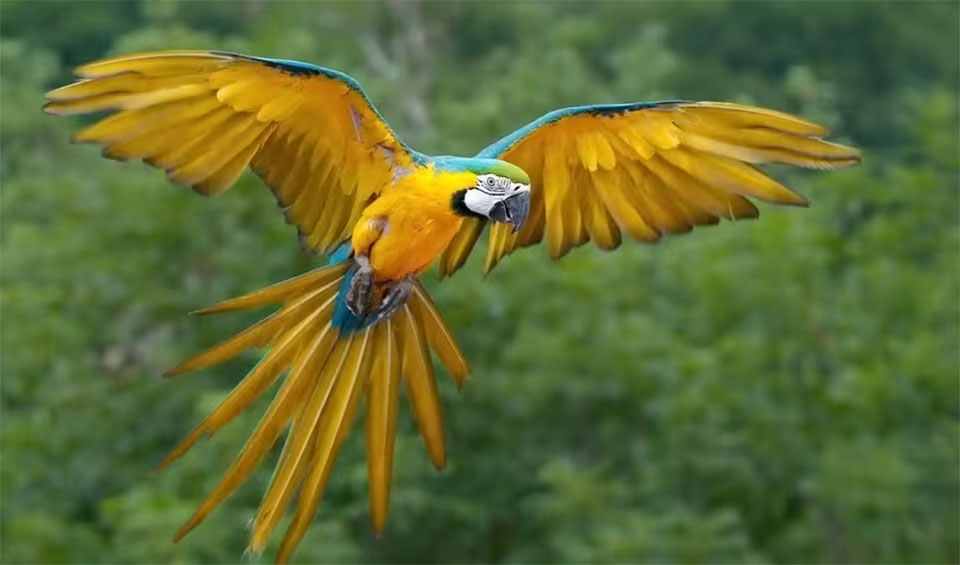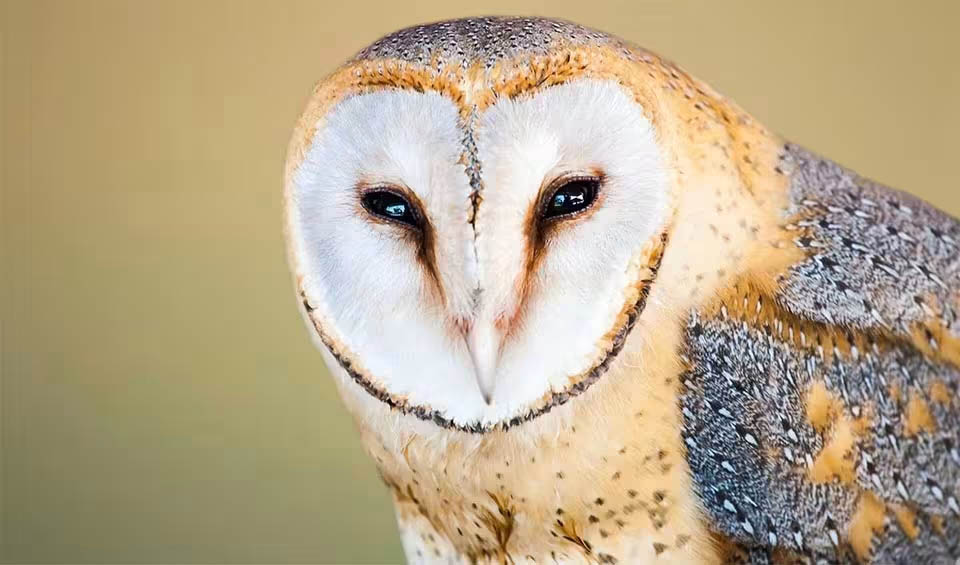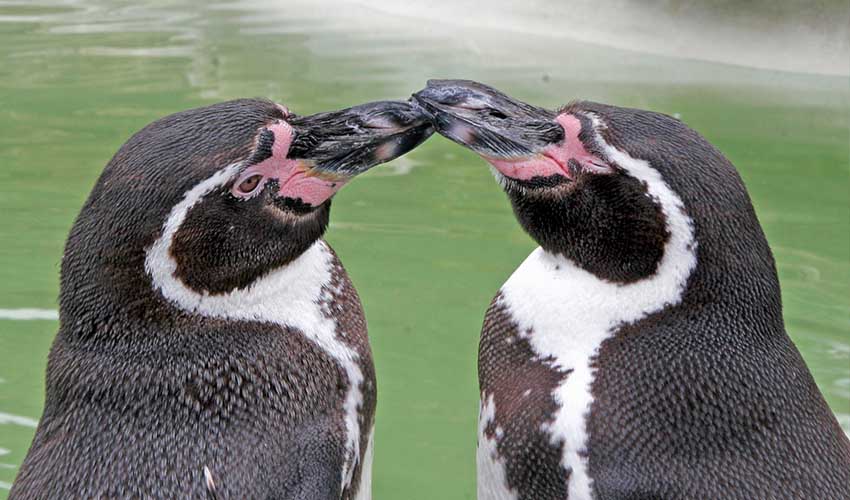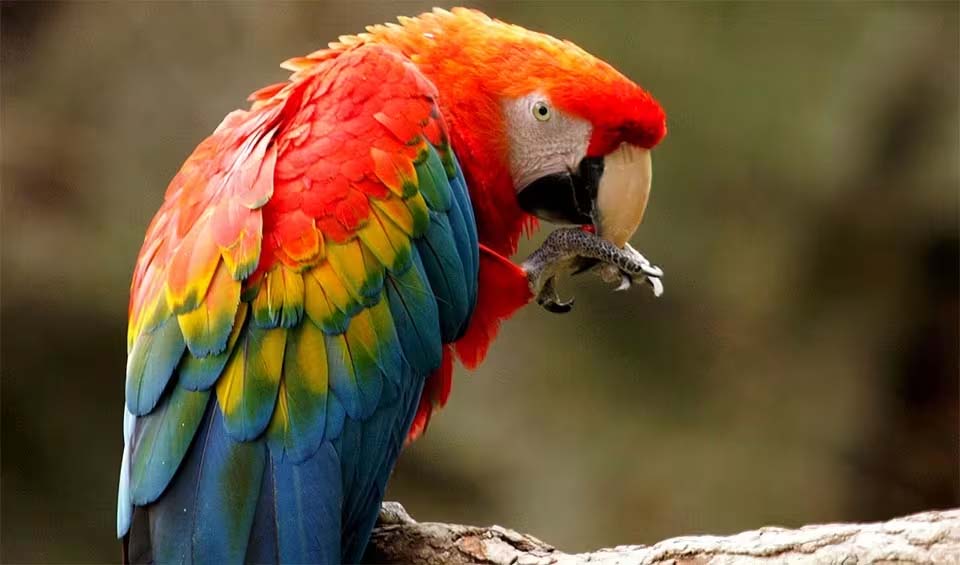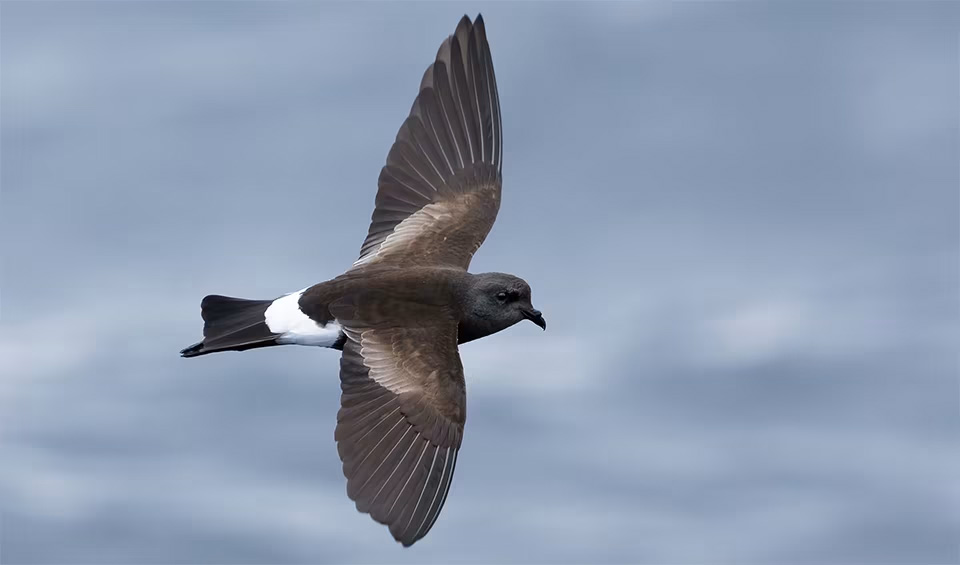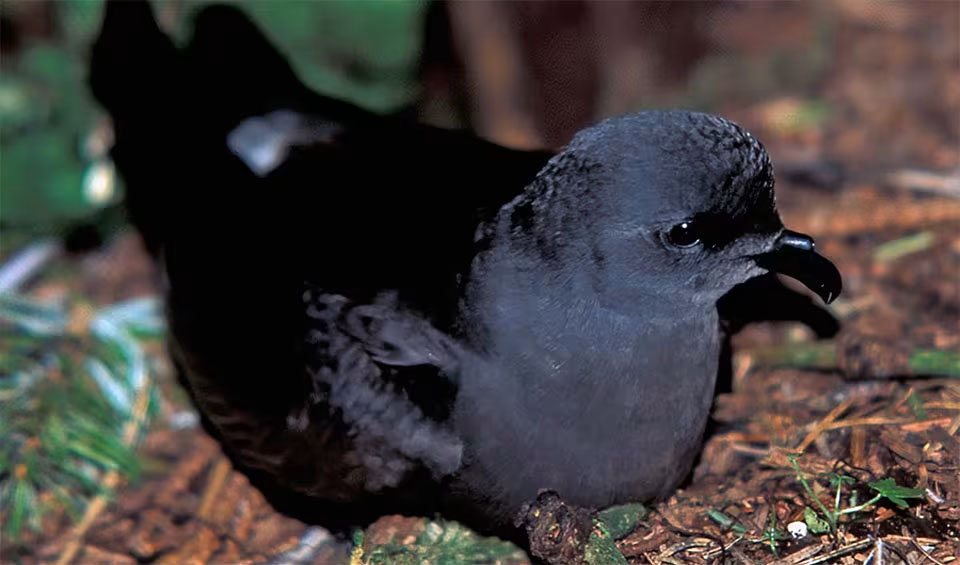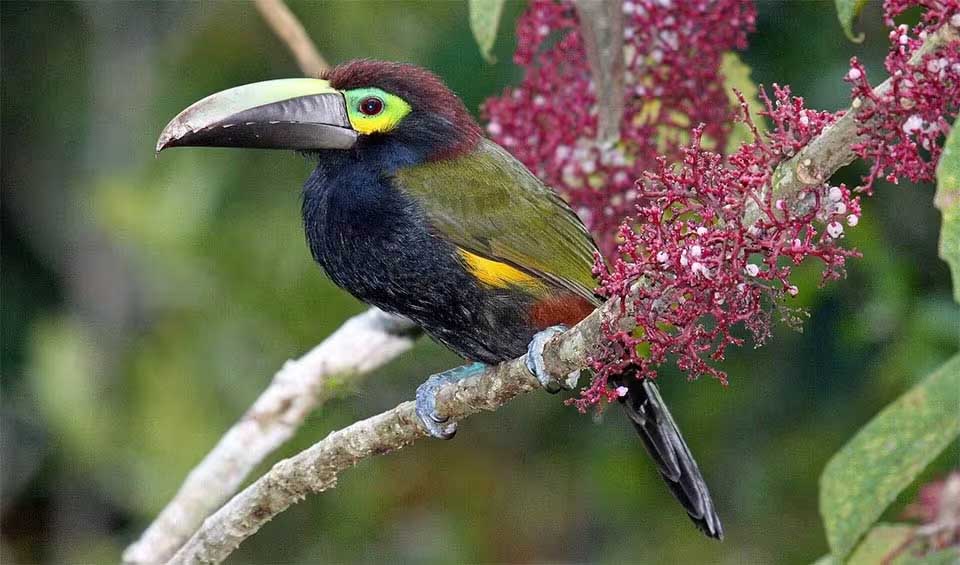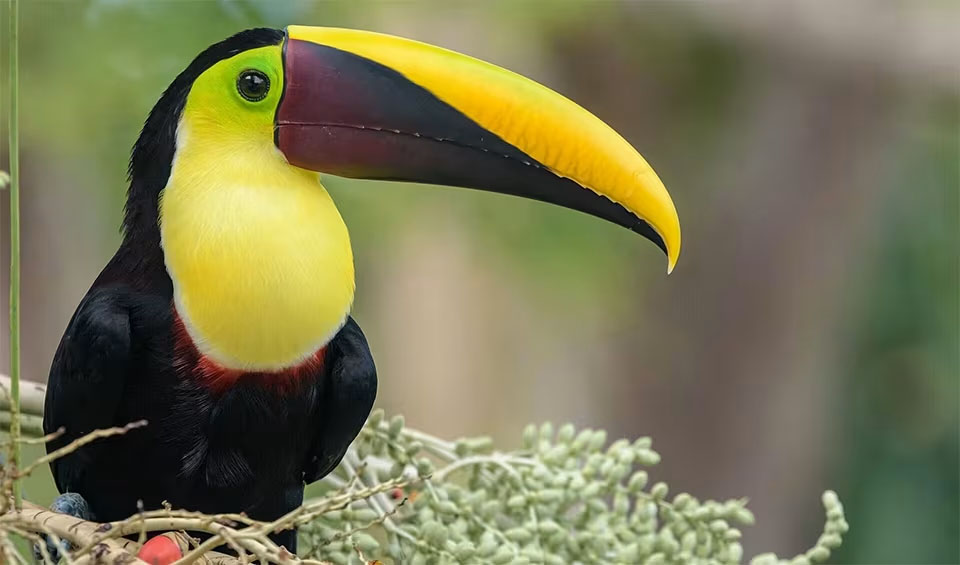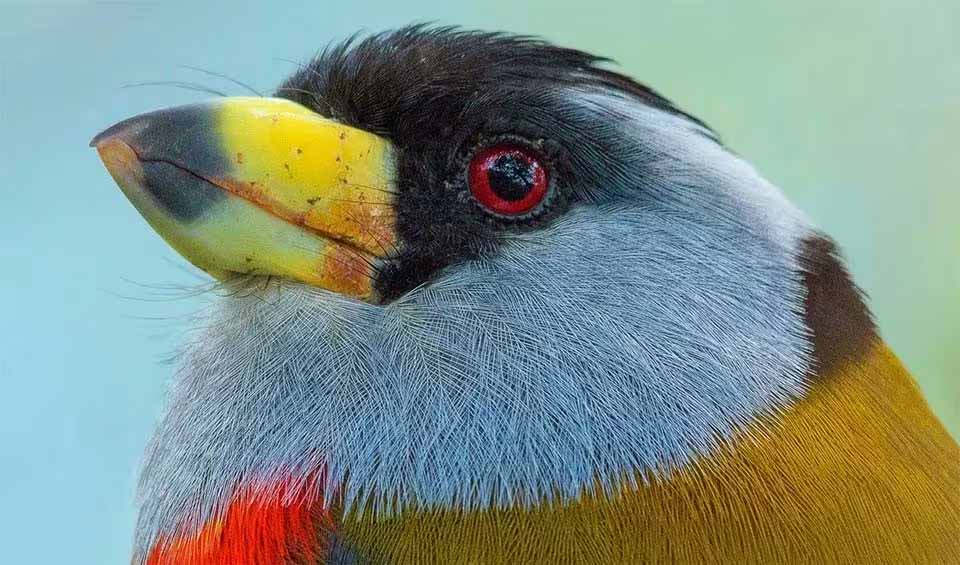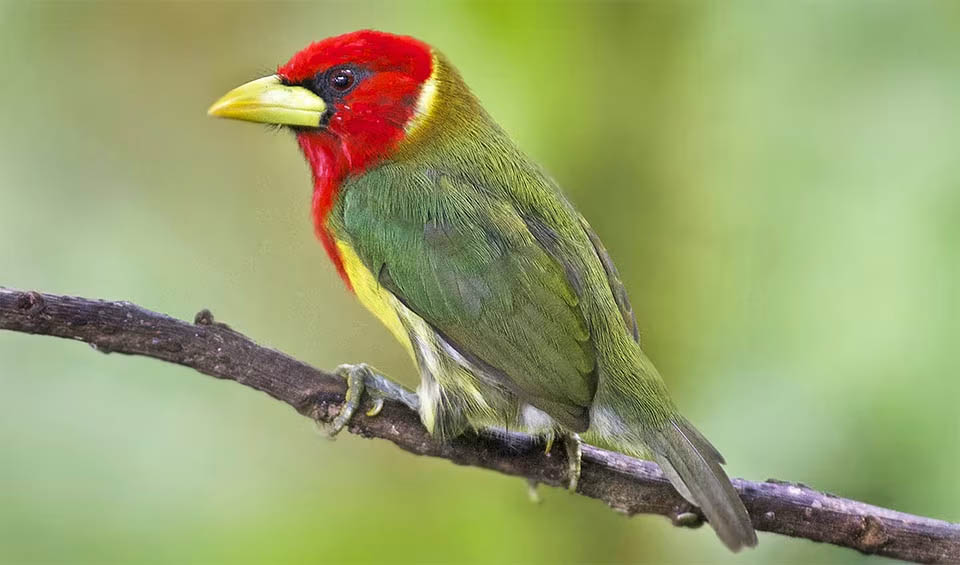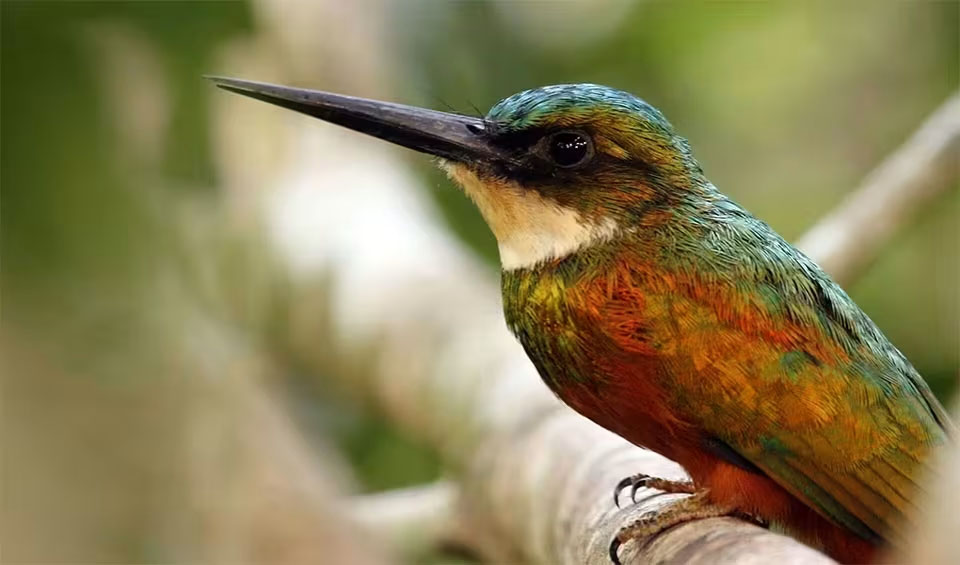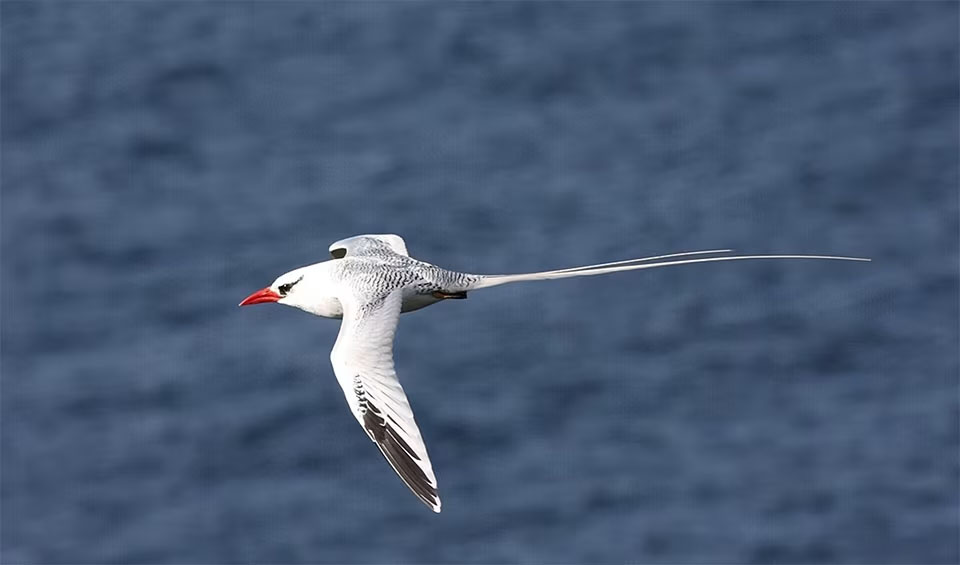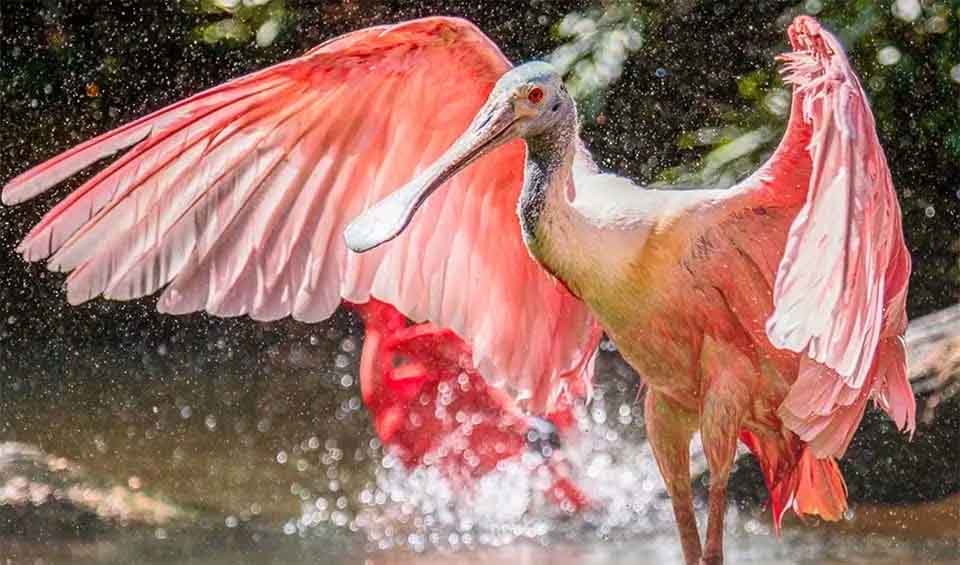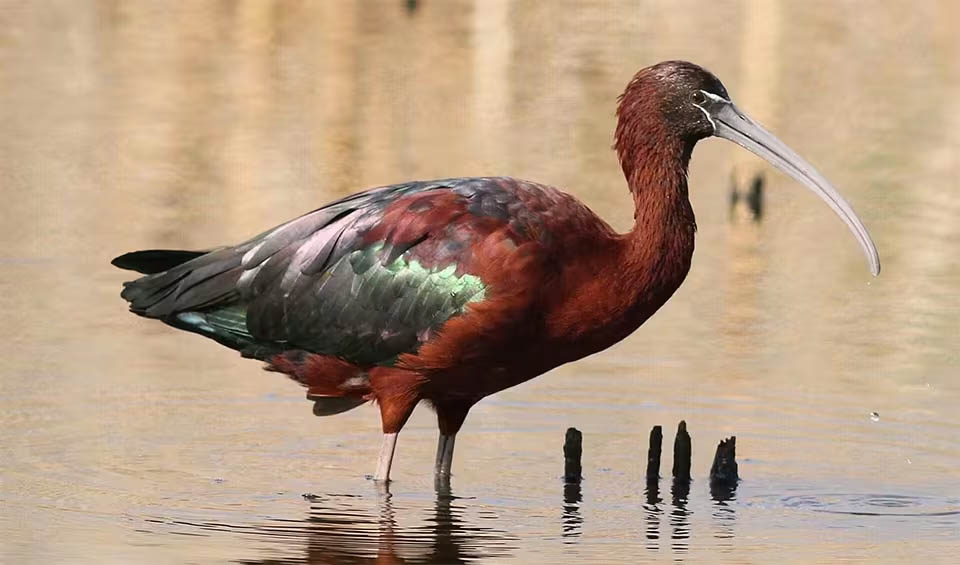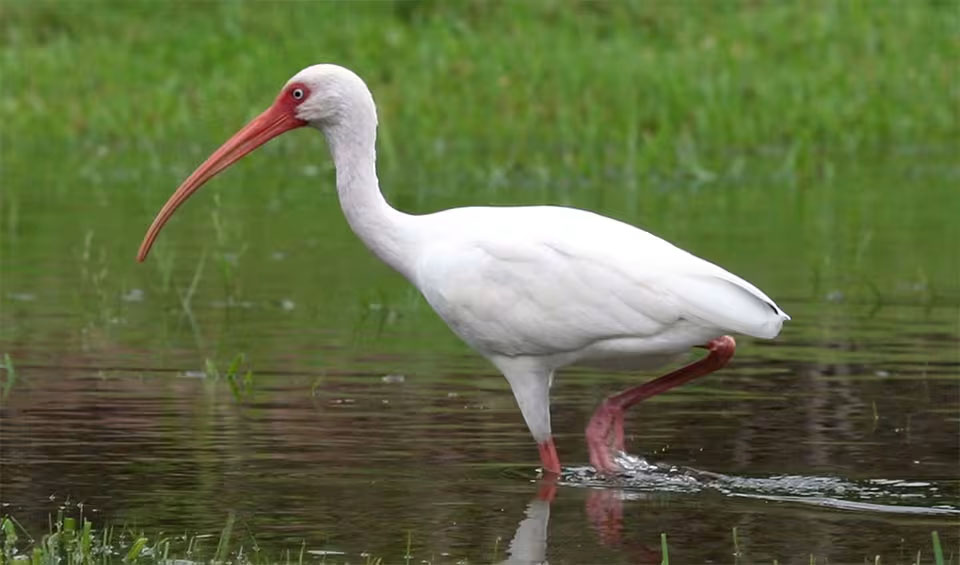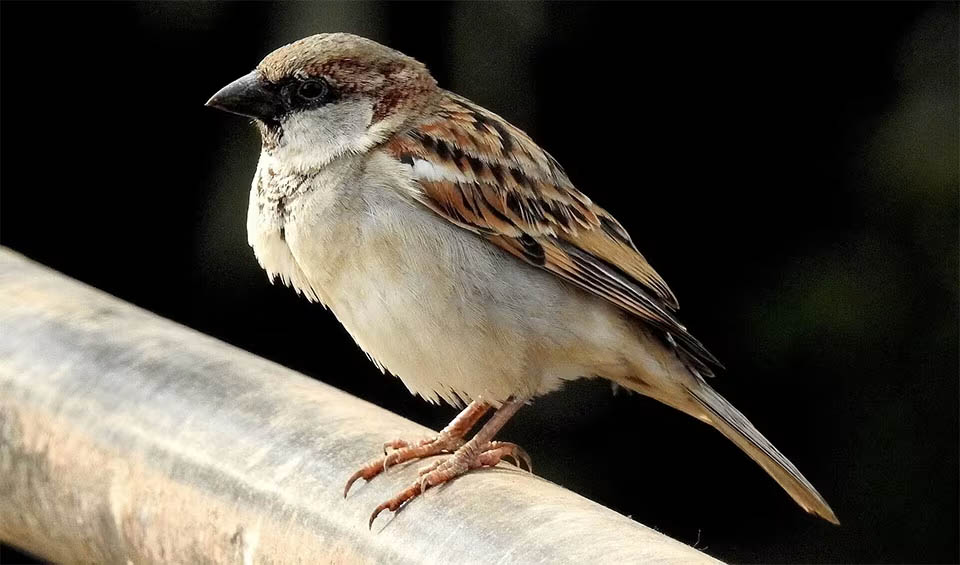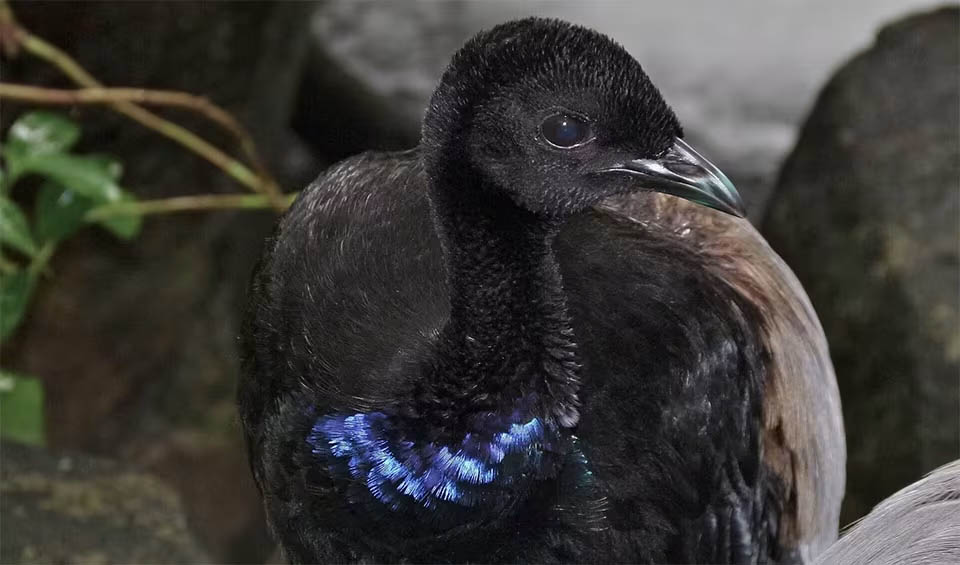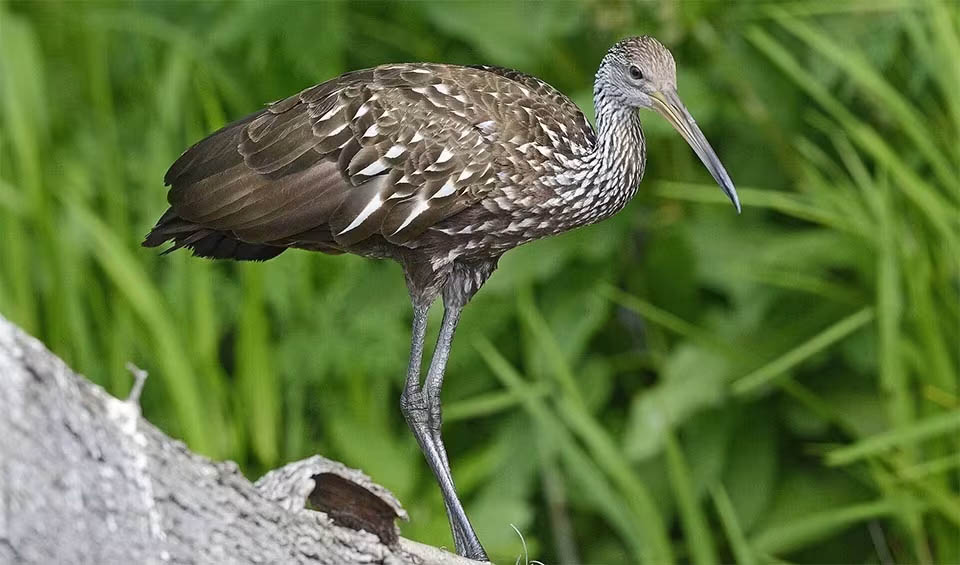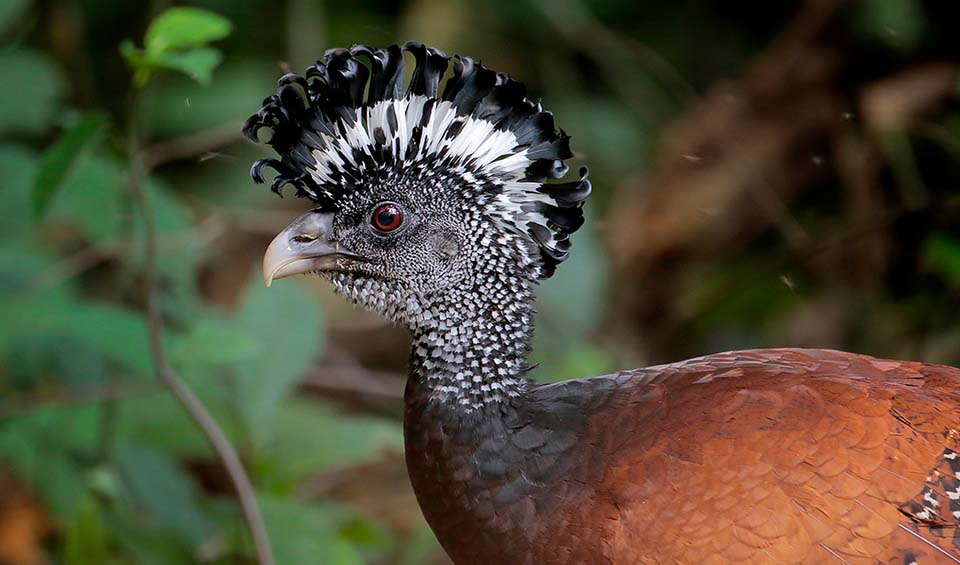Search for Ecuador
American redstart
One of the most admired warblers across the continent
Great stripe-faced bat
Despite its somewhat fearsome scientific name, it does not drink blood—it feeds exclusively on plant material
Velvety fruit-eating bat
Its fur is so soft and dense that early naturalists compared it to fine velvet or mink
Nine-banded armadillo
Found all over the Americas, it is the most widespread species of all armadillos
Long-eared owl
Its flight is nearly soundless, thanks to specially fringed wing feathers that disrupt air turbulence
Short-eared owl
Defies the usual “creature of the night” stereotype by thriving in open landscapes and often hunting boldly in daylight
Lemon shark
Their “lemon” color actually changes slightly depending on light and habitat
Red-lipped batfish
This quirky creature captures the imagination of everyone who sees it
Golden cownose ray
When sunlight filters through the sea, their backs almost disappear against the golden hues of sand below
Blue-gray tanager
Often bathe in rainwater pools or birdbaths
Medium tree finch
One of the rarest living links to Darwin’s theory of evolution
Red-masked parakeet
Best known as the famous “parrot of Telegraph Hill” in San Francisco
Galápagos petrel
Can spend months at sea without touching land, sleeping on the wing and resting on the open ocean
Inca tern
Terns with longer, brighter mustaches are often stronger and more successful at breeding
Galápagos rice rat
The only native rodents of the Galápagos
Black agouti
The only animal capable of cracking the Brazil nut’s rock-hard shell with its strong teeth
Red brocket deer
Instead of fleeing immediately when threatened, they often freeze completely still
Brown tent-making bat
Lighter than a AAA battery!
Tent-making bat
Well known for its unusual behavior of modifying leaves into makeshift shelters
Pacarana
Its closest living relatives are guinea pigs and chinchillas, though it look more like a miniature capybara
Mexican free-tailed bat
Their guano deposits have historically been harvested as fertilizer
Northern naked-tailed armadillo
One of the most mysterious and hardest to spot armadillo in the wild
Common opossum
50 teeth? That’s a serious set of chompers for crunching insects, fruit, or even bones!
Sand martin
A bird that carries the rhythms of the seasons on its wings
Lowland paca
The spotted rabbit of the jungle—though they are rodents, not rabbits!
Southern tamandua
One of the most effective—and quirky—pest controllers in South America’s wild landscapes
Pygmy killer whale
One of the lesser-known members of the dolphin family, despite its dramatic name
Largetooth sawfish
The only sawfish known to spend long stretches of its life in freshwater lakes, not just rivers or coasts
Ruddy ground dove
One of the tiniest doves in the Americas
Green ibis
Sometimes called the “Whispering Ibis”—not because it whispers, but because it’s so quiet and elusive compared to other ibises
Rufescent tiger heron
Doesn’t put its nest near the water’s edge like many of its relatives
Wood stork
The “giant of the swamp”
Green kingfisher
Have eyesight that is exceptionally keen—so much so that they can easily spot tiny fish swimming just beneath rippling water
Giant ameiva
Can move startlingly fast, often vanishing in a blur of motion when startled
Amazon tree boa
Can “see” the body heat of animals even in total darkness
Red-footed booby
Goofy-looking yet evolutionarily refined for life above the waves
Mutable rainfrog
With a one-of-a-kind ability to change skin texture on command
Masked trogon
Often tame and unafraid of humans
Plate-billed mountain toucan
A rare, high-altitude jewel with a voice like a frog
Common vampire bat
Most famous — and misunderstood — of all vampire bats
Tropical kingbird
Surprisingly aggressive for a bird with a sunny name
Gold tegu
A rugged, resourceful lizard with a bold look and a wild streak
Greater sac-winged bat
A scented, singing, socially savvy insect hunter
Turkey vulture
A bird that quietly keeps the environment clean
Amazon kingfisher
Despite its name, it is not limited to the Amazon Basin
Ladder-tailed nightjar
A nighttime hunter extraordinaire
Great black hawk
One of the largest hawks in the Americas
South American coati
Known to investigate campsites, rummage through backpacks, and even figure out how to open containers
Scalloped hammerhead
Their skin actually darkens, just like a sunburn!
Great horned owl
Often called the “tiger of the sky” because of its fierce hunting skills and bold personality
Derby’s woolly opossum
A creature of the night—rarely seen but ecologically important
Northern tamandua
Armed with claws and a tongue longer than its head, it specializes in breaking and entering… ant nests, that is
Ruddy turnstone
They flip the script — literally!
Grey-breasted mountain toucan
One of the most vibrant bills among mountain toucans
Barred forest falcon
The ghost of the rainforest — more often heard than seen
Spectacled owl
Easily recognized by its bold facial markings that resemble a pair of white spectacles
Agami heron
One of the most beautiful and secretive herons in the world
Blunthead tree snake
Looks more like a living vine or a character from a fantasy novel than a typical reptile
Cloudy snail-eating snake
Unlike many snakes that rely on speed or venom, this snake depends on stealth and precision
Imbabura tree frog
Often hide and even sleep inside bromeliads — plants that hold small pools of water
Western basilisk
Looks like tiny dragons darting through the forest—especially when viewed from the side
Black-crowned night heron
One of the most widespread and adaptable herons in the world
Yellow-crowned night heron
Crabs make up over 90% of their diet
Crimson-rumped toucanet
Despite their bright colors, they can be surprisingly hard to spot
Great green macaw
A stunning bird dressed in vibrant green and blue, facing dangers from loss of home and unlawful trade
American crocodile
These creatures often ingest stones, aiding food digestion and buoyancy regulation in the water
Green anaconda
When most people say anaconda, they mean the green anaconda, the largest of all snakes!
Lava gull
Known to steal food from other birds, a behavior called kleptoparasitism
Common Surinam toad
Got trypophobia? You might want to avoid looking at this froggy!
Laughing gull
Once you’ve heard them laugh, it’s hard to forget!
Flightless cormorant
Over time, its wings shrank, and flight was traded for underwater power
Waved albatross
The only albatross species that breeds in the equatorial zone
Galápagos fur seal
Have some of the best eyesight among marine mammals, which helps them see in the dark, deep waters where they hunt
Galápagos sea lion
Extremely curious and often approach snorkelers or swimmers, especially younger ones who like to play and chase bubbles
Galapagos shark
Believed to use Earth’s magnetic field to help them navigate vast ocean distances
Banded horned treefrog
Looks more like a tiny forest dragon than a typical amphibian
Horned marsupial frog
Has the largest eggs of any amphibian
White-tailed titi
Their long, fluffy tail ends in a white tip—like they dipped it in paint
Olinguito
The first carnivore discovered in the last 35 years in the western hemisphere looks like a teddy bear
American kestrel
The smallest of falcons in the entirety of America, but you would be mistaken to take this bird lightly
Galápagos lava lizard
Evolved to thrive in the harsh volcanic landscapes of the Galápagos Islands
Galapagos land iguana
They’ve adapted to eat the cactus pads, spines, and all, thanks to their tough mouths
Santa Fe land iguana
They look every bit like the prehistoric giants they resemble
Highland eyelash-pitviper
Those ‘eyelashes’ are actually special scales that help them hide in the leaves
Black-headed spider monkey
Agile arboreal acrobats with distinctive black fur swinging through the rainforests of Central and South America
Jocotoco antpitta
A hidden gem of forests, blending in with its surroundings and captivating with its elusive presence and melodious song
Galapagos rail
In some islands it was feared to have vanished entirely
Lesser black-backed gull
A common sight in coastal regions throughout the Northern Hemisphere
Terciopelo
One of the most well-known and feared snakes in Central and South America
Boat-billed heron
Got its name from its distinctive, boat-shaped bill, which is wider than it is tall
Horn shark
Their distinctive “horns,” specialized teeth, and spiral-shaped eggs set them apart from other sharks
Vampire ground finch
Famous for its unusual feeding behavior — it drinks the blood of other birds!
Lineated woodpecker
With its strong, sharp beak, it’s a master at pecking holes into trees to find tasty bugs hiding inside
Peruvian pelican
Despite its large size and somewhat clumsy appearance on land, it is an exceptionally graceful flier
Brown pelican
The smallest of the eight pelican species
Green jay
Often seen as a symbol of both curiosity and cleverness
Groove-billed ani
Got a long tail, a big head, and a curved bill with little grooves on it – that’s where its name comes from
Long-wattled umbrellabird
Spotting it is a rare thrill that few experience, making every glimpse a prized moment for bird enthusiasts
Barn swallow
Most common and widely distributed swallow globally
Great hammerhead
The biggest of all the hammerhead sharks, with a massive head that looks like a giant, flat hammer
Crested caracara
Got the looks of a hawk with the scavenging habits of a vulture
Yellowfin tuna
Popular food fish, prized for its mild flavor and firm texture
Llama
Think of camels, but minus the hump!
Southern lapwing
Fearless defenders of their nests and chicks, often taking on much larger animals or humans if they perceive a threat
Great kiskadee
This bird is a real chatterbox, constantly announcing its presence with its loud, three-part call – “kis-ka-dee!”
Pantropical spotted dolphin
A champion swimmer and a social butterfly of the warm seas
Brown noddy
They bob their heads up and down as they fly, which is actually how they earned the nickname “Noddy”
Burrowing owl
They don’t build their own nests – they cleverly take over burrows abandoned by prairie dogs, ground squirrels, or even tortoises!
Common bottlenose dolphin
Known for their acrobatic leaps, twisting and turning gracefully as they jump completely out of the water
American flamingo
Famous for its habit of standing on one leg
Mealy amazon
Known to dangle upside down from perches, perform little dances, and invent games with simple objects
Andean cock-of-the-rock
Its dramatic appearance and behavior make it a symbol and national bird of Peru
American bullfrog
Introduced to many regions where it is now considered an invasive species
Siren glassfrog
This frog is also known to cannibalize its own tadpoles
Wattled curassow
Frequently detected through their vocalizations rather than being visually observed
Tucuxi
In Northern Brazil, people sell their body parts as charms for good luck, love, and money
Tiger shark
They eat almost anything that comes their way – you name it, they’ll try to snack on it!
White-lipped peccary
They can spend up to two-thirds of their day traveling and feeding
Black-and-chestnut eagle
A magnificent bird of prey, blending into the forest with its striking colors and ruling the skies with its impressive wingspan
Lemon-browed flycatcher
Vibrant, melodious charm of the Brazilian Atlantic Forest
Royal sunangel
Their beautiful feathers make them stand out among other birds and add a touch of magic to the mountain landscape
White-bellied spider monkey
With its long limbs, thumbless hands, and graceful movements, this monkey gracefully resembles a spider in the tree canopy
Common woolly monkey
They’ve shown high curiosity—traits that highlight their advanced cognitive abilities among New World monkeys
Shortfin mako shark
Speed and power embodied, they rule the seas with their sleek bodies and jaw-dropping leaping prowess
Basking shark
Majestic giants of the sea, they peacefully glide through the ocean with mouths agape, filtering the waters for sustenance
Oceanic whitetip shark
Opportunistic predators of the open ocean, their aggressive and persistent feeding behaviour strikes fear into the hearts of their prey
Bull shark
Fearless and formidable, these aggressive predators command respect in the waters they roam
Whale shark
Gentle giants of the sea, with mouths wide open to filter the ocean’s bounty
Great white shark
Majestic ocean predators, embodying power, speed, and precision in their pursuit of prey
Loggerhead sea turtle
One of the largest and strongest sea turtles in the world
Hawksbill sea turtle
Its slender frame and narrow head bear a beak curved like a hawk’s, earning this marine marvel its name
Saber-toothed tiger
Despite its name, this animal was not a true tiger, nor was it related to any modern cat
Sechuran fox
With its sandy brown fur and bushy tail, it is a master of camouflage in its arid habitat, blending in seamlessly with the landscape
Culpeo
Discover the resourcefulness and adaptability of this cunning fox-like predator that’s mastered life in the rugged high-altitude terrain
Oncilla
Beneath its fierce exterior lies a tender heart, as it is also known for its loving nature toward its young
Margay
These wild cats are cute, intelligent, agile, and well-adapted to inhabiting tropical and subtropical forests
Pampas cat
Survival of the fittest? This cat takes it to a whole new level, always ready to pounce and conquer any habitat
Eastern caenolestid
Little is known about these little marsupials
Central American agouti
This widespread cute-looking creature is also known as the ‘gardener of the forest’
Capybara
Communicate using various vocalizations such as whistles, whinnies, and growls
Anhinga
Their neck vertebrae have a hinge mechanism that allows it to dart its long neck and pierce its prey quickly
Long-tailed weasel
Uses a hunting technique known as the Weasel War Dance that involves a series of frenetic turns, manic twists, and jumps to confuse the prey
Great Tinamou
A large bird with the tiniest heart and the highest percentage of skeletal muscles used for locomotion
Blue-footed booby
When choosing a mate, foot color is of primary importance as a reliable indicator of health, immunity, and age
Brown booby
An impressively acrobatic bird that can catch flying fish mid-jump
Great frigatebird
These birds spend weeks in the air and hunt, preen and even sleep while in flight
Blue-and-yellow macaw
The pale yet gorgeous face blushes when this bird is excited, revealing a sensitive and soft heart
Barn owl
The most cosmopolitan of owls with home ranges extending across the globe
Galapagos penguin
Not all penguins are found in icy-cold Antarctica; meet this one from near the equator!
Humboldt penguin
These penguins don’t chirp—they “hee-haw” like donkeys!
Scarlet macaw
One of the most colorful birds — effortlessly falls in love
Wilsons storm petrel
This species is found in all world oceans except the north Pacific Ocean
Leachs storm petrel
These petrels stylishly ride the ocean waves like they own the winds
Yellow-eared toucanet
One of the smallest toucans that resemble a brightly colored crow rather than a toucan
Yellow-throated toucan
Formerly known as Yellow fronted toucan; formerly-formerly known as Chestnut-mandibled toucan
Toucan barbet
One might mistake it for a painting by Da Vinci
Red-headed barbet
One of the prime examples of sexual dimorphism
Paradise jacamar
These agile hunters can catch butterflies and dragonflies mid-flight
Red-billed tropicbird
Professional marine forecasters to optimize breeding success and prey availability
Roseate spoonbill
An easily recognizable bird due to its pink body and spatulate bill
Glossy ibis
These birds seem to have lost their way to the beauty pageant
Scarlet ibis
The flocks of this striking self-descriptive bird are a sight to behold
White ibis
Very good at detecting storms, often the last to leave and first to arrive before and after a hurricane
House sparrow
The most widely dispersed wild bird
Grey-winged trumpeter
Before you ask – no, this bird doesn’t sound like a trumpeter; however, they do have distinct call
Limpkin
They don’t need salt, bamboo sticks, or forks to deshell a snail – they have a well-adapted bill to do the job
Great curassow
The only massive and heaviest species of its family living in Neotropical rain forests that is easily vulnerable to hurricanes
Black caracara
The Racoons of the bird kingdom who will eat almost anything to survive
Yellow-headed caracara
A common scavenger bird that cleans up the roads of Central and South America
Red-throated caracara
The largest species of the three species present in the Amazon
Merlin
The pocket-sized falcon with an eagle’s attitude
Peregrine falcon
At the speed of over 321 km/h (200 mph), this bird outraces a Formula1 car
Sunbittern
The sole member of its entire family and the closest living relative to the Kagu
Rufous motmot
Second-largest and the most spectacular bird of the family
Jabiru
One of the tallest flying birds of Americas
Black-winged stilt
Elegant long-legged wader, common almost worldwide
Arctic tern
This bird can give any cross-country runner a run for their money
Common tern
This bird holds the record of the longest distance flown by any bird in recorded history
Rufous-bellied seedsnipe
They appear out of nowhere and disappear in a blink
King vulture
The most colorful vulture, with the orange cruncle
Andean condor
The largest and heaviest raptor in the world
Oilbird
This nocturnal species lives in caves and uses echolocation to navigate, and yes, it is a bird, not a bat!
Great potoo
These nocturnal birds live in solitary and can peek around even with closed eyes
Rufous-tailed hummingbird
Like many of us, this bird loves coffee and feeds on its flowers
Sword-billed hummingbird
This introverted species has an unusually large beak, making it unique and different from the rest of hummingbirds
Harpy eagle
The world’s most spectacular and most robust eagle species serves a critical ecological role in the ecosystem they live in
Osprey
One of only six land-birds with a cosmopolitan distribution habituating all continents except Antarctica
Southern elephant seal
The largest member of the order Carnivora, adult males, can be six times larger than polar bears!
South American sea lion
Unfortunately, they are commonly killed for their habits of damaging fishing nets and stealing fish from fishing and farming operations
Pygmy beaked whale
The most recently described and smallest member of toothed whales –it was only classified as a distinct species in 1991
Amazon river dolphin
Playful, curious, and intelligent; the largest river dolphins in the world
Amazonian manatee
The unique aspect observed in the species is that they can see or visualize underwater to navigate or avoid obstacles
Hoffmann’s two-toed sloth
Can camouflage itself in trees with the help of algae growth on fur
Linnaeus’s two-toed sloth
The digestion process of tough leaves is very slow; it might even take up to 1 month to digest one meal
Brown-throated sloth
Cute but lazy species harmlessly sleep in the trees for 14 to 16 hours a day
Giant anteater
These specialist predators of termites and ants are not immune to ant bites
Silky anteater
Also known as pygmy anteater, they are the smallest and most adorable of their insect-eating kind
Mountain tapir
The only tapir species found exclusively in the mountains
Brazilian tapir
Flee and dive into the water when facing a predator and remain deep under the water until the predator leaves
Bairds tapir
The largest land mammal native to Central and South America
Giant armadillo
The largest living armadillo, growing up to 1.5m (5 ft) in length, yet it feeds on tiny termites!
Crab-eating raccoon
Despite the common name, they do not feed on crabs exclusively
Western mountain coati
Plays a vital role in controlling the underground invertebrate population as they mainly prey on insects
Kinkajou
Has a spooky nickname, “La Llorona” meaning crying woman in Spanish due to their noisy barks, hisses, and high-pitched squeaks
Tayra
Widespread in tropical and subtropical forests Central and South America
Greater grison
When they move cautiously, they press their body close to the ground and move in a zigzag pattern like a snake
Giant otter
Don’t be fooled by their harmless appearances; they can hunt caiman, piranhas, and anacondas in the wild!
Cougar
The most widespread large mammal of the Americas: from Canada’s Yukon to the Andes in South America
Jaguarundi
Secretive and solitary, inhabiting various habitats of Central and South America
Ocelot
They are picky eaters, often plucking off all the furs or feathers of the prey before start eating them
Jaguar
This solitary cat is America’s largest feline and the world’s third, after the tiger and the lion
Spectacled bear
The last surviving bear species of South America, native to the Andes mountains
Bush dog
First discovered as a fossil in Brazil, before ever witnessed – it was believed to be extinct
Crab-eating fox
During the wet season, they search for crabs in muddy floodplains
Short eared dog
This unique and elusive dog is endemic to the Amazon basin
White-tailed deer
We use our agility and speed to outrun their predators, sprinting up to 48.2km/h (30 mph) and leaping as high as 3m (10 ft)
Collared peccary
Suffering from poorly developed vision, they heavily rely on vocalization to communicate
Vicuña
One of the few wild animals to have been used for obtaining wool without domestication
Mantled howler
One of the loudest monkeys in the world!
Colombian red howler
Known for being among the sleepiest monkeys, often dozing for up to 15 hours a day!
Pygmy marmoset
Extremely agile and flexible creatures, they could leap up to 4.57m (15 ft) vertically and rotate their head for up to 180 degrees
Yellow-spotted river turtle
These turtles have a dark shells with yellow markings, giving them their name
Giant Amazon river turtle
One of the largest freshwater turtles in the world and the true heavyweight of South America’s rivers
Mata mata
Second species in this genus only identified in 2020
Leatherback sea turtle
The mysterious diver of the ocean is the largest and only sea turtle without a hard shell and scales
Galapagos tortoise
An iconic animal from the Galápagos and the largest tortoise on earth
Marine iguana
Despite looking like miniature dragons, marine iguanas eat grass
Boa constrictor
A small genus of Large snakes, strangling their prey endemic to the Americas
Yellow-bellied sea snake
The most widespread species of snakes on earth are found throughout the Indian and Pacific Oceans and from Africa to Central America
Black caiman
There are a lot of big reptiles, but these caimans are a class of their own!
Spectacled caiman
You might get the worst scare of your life if you see the crimson glow in the eyes of these creatures at night
Cuviers dwarf caiman
A heavily armored small crocodile native to South America
Ringed caecilian
They do not just look like snakes, but they might also be able to deliver a nasty bite
Mission golden-eyed tree frog
Golden-eyed frog, Panda treefrog, Blue-milk frog -so many cute names for such a poisonous animal!
Cane toad
When a big one meets a smaller one, it’s lunch!
Smooth-fronted caiman
Its eyes reflect red under flashlight or torchlight, making it possible to spot them during night surveys



